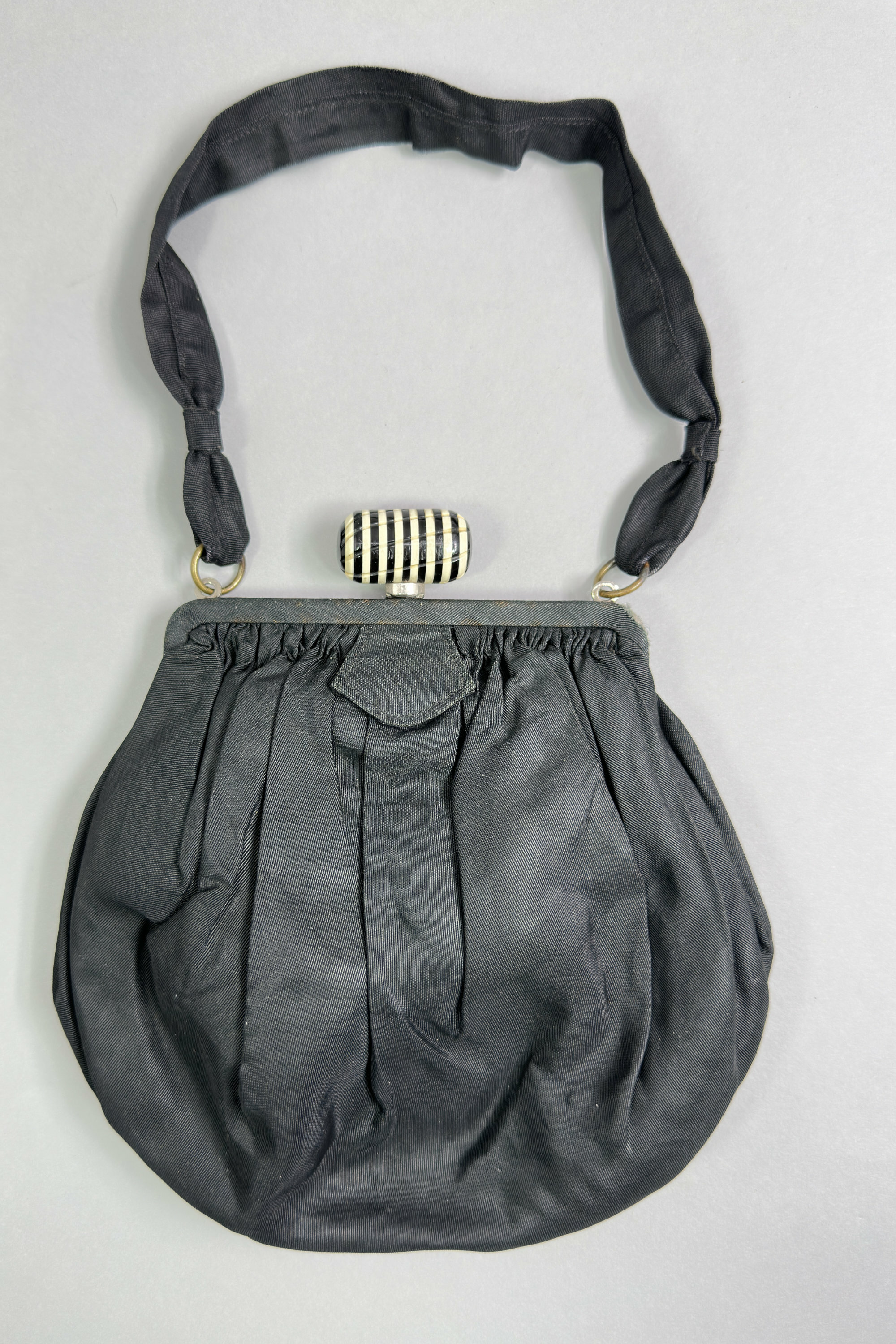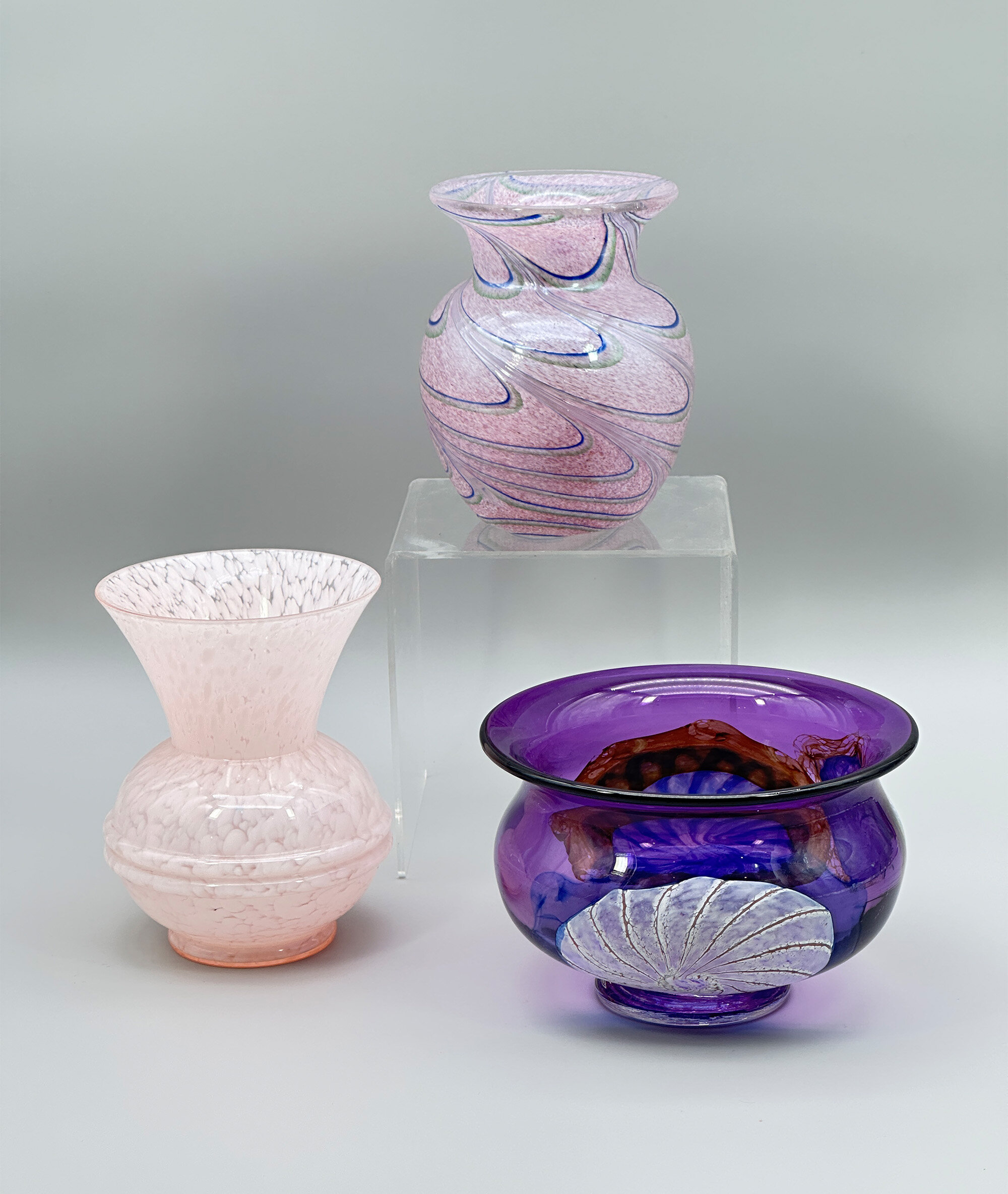
Gilt decorated English porcelain powder box and cover, probably mid C20th
Price: £15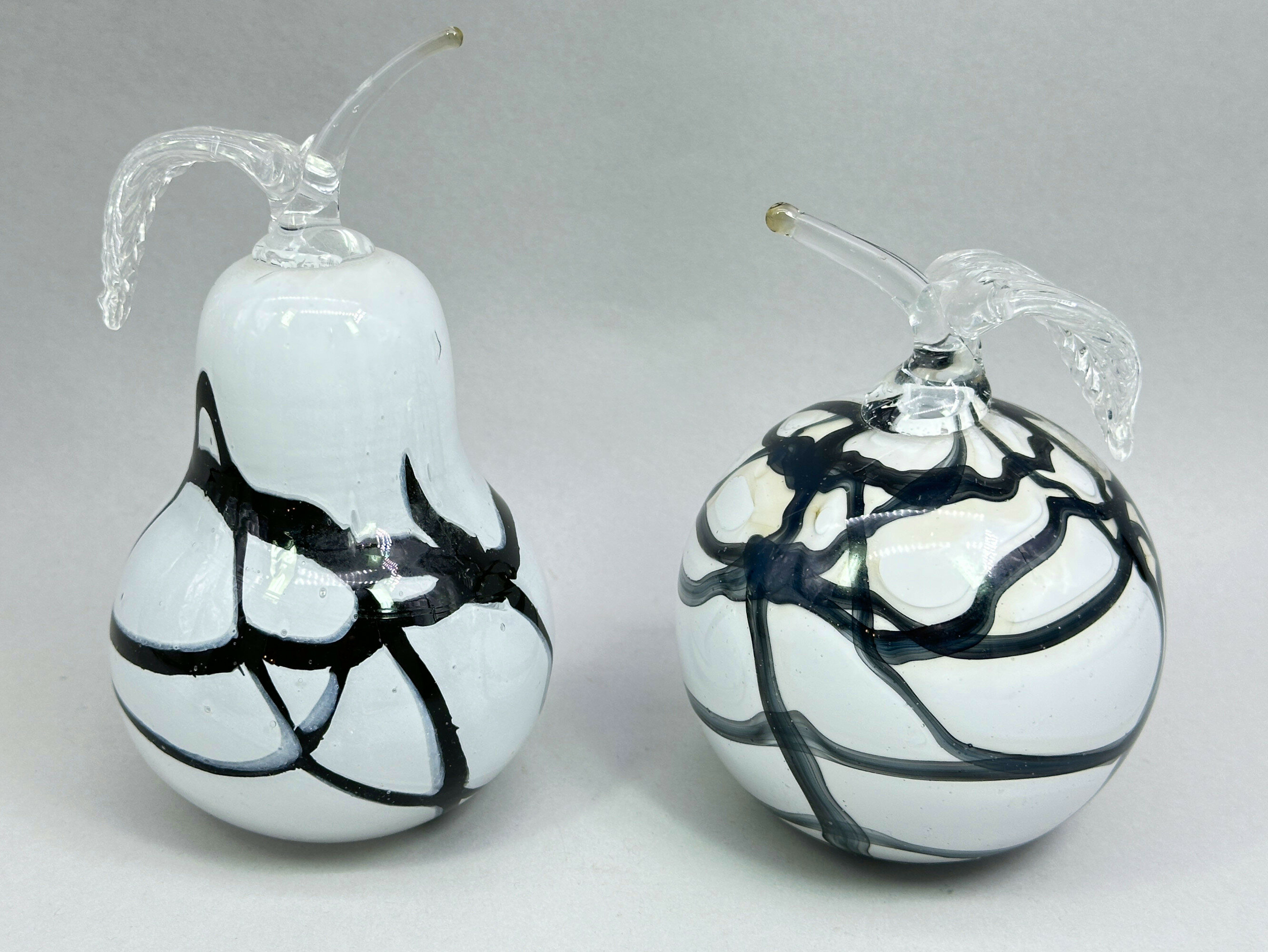
Two Amelia Art Glass Vases, Apple and Pear
Price: £30
Two similar Chinese Export Style Monteith Form Jardinieres, C20th
Price: £75The form here is a miniature version of the Chinese ‘Monteith’ first produced in the early to mid eighteenth century. The wavy rim was designed to hold the stems of glasses which were stood to cool in iced water placed in the interior. The style of the decoration is in Chinese Export taste as well, but dating here is to the C20th probably around the 1960s. Some similar examples have Chinese seal marks and one the name of a Chinese manufacturer implying that these pieces were most likely made in China but this does not assist with establishing their age. Purely decorative objects then with no intent to deceive but amusing creations in themselves and pleasing to a contemporary eye.
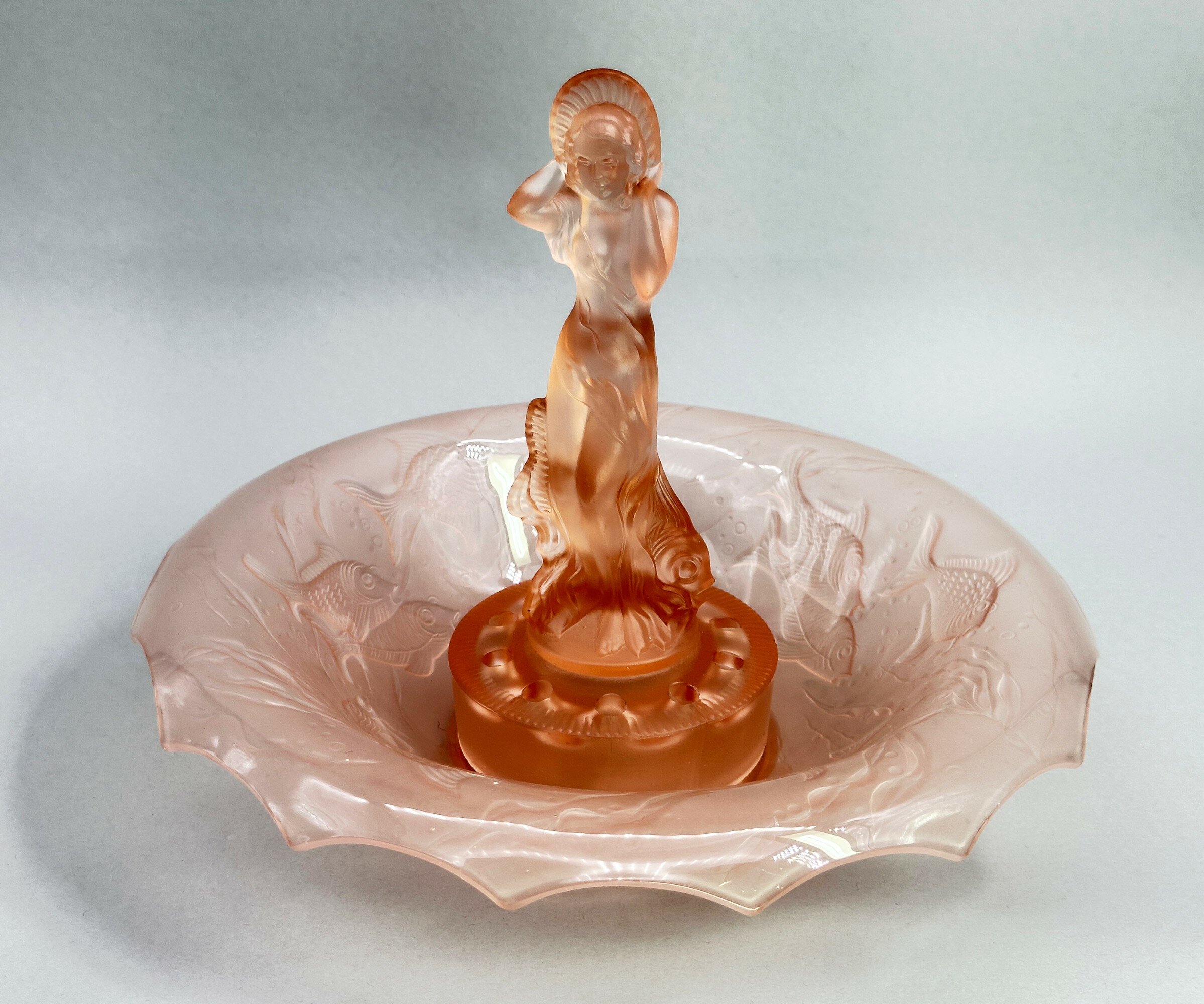
Pink Glass Centrepiece Set, Arabella, Walter and Sohne, 1930s
Price: £55The influence of Art Deco style of this piece is clear and it does indeed date to the 1930s. The model, termed ‘Arabella’ can apparently be seen in the 1934 catalogue of the German glass manufacturers Walther and Sohne, founded by August Walther in 1888 at Ottendorf-Akrilla near Dresden. In the 1930s the firm was famous for its Art Deco designs and also produced a version of ‘cloud glass’ which at one time was held to be exclusive to the English manufacturer Davidson. But some of the English glass makers also drew on their German rival’s work such that Walther and Sohne patented some of their designs in the UK in 1937, presumably to protect their work. This centrepiece set is a classic example of Walther and Sohne’s pre war productions and a distinctive example of Art Deco glassware.

Art deco style necklace with large blue stone c1970
Price: £50
Long Art Nouveau necklace with multiple drops c1930
Price: £75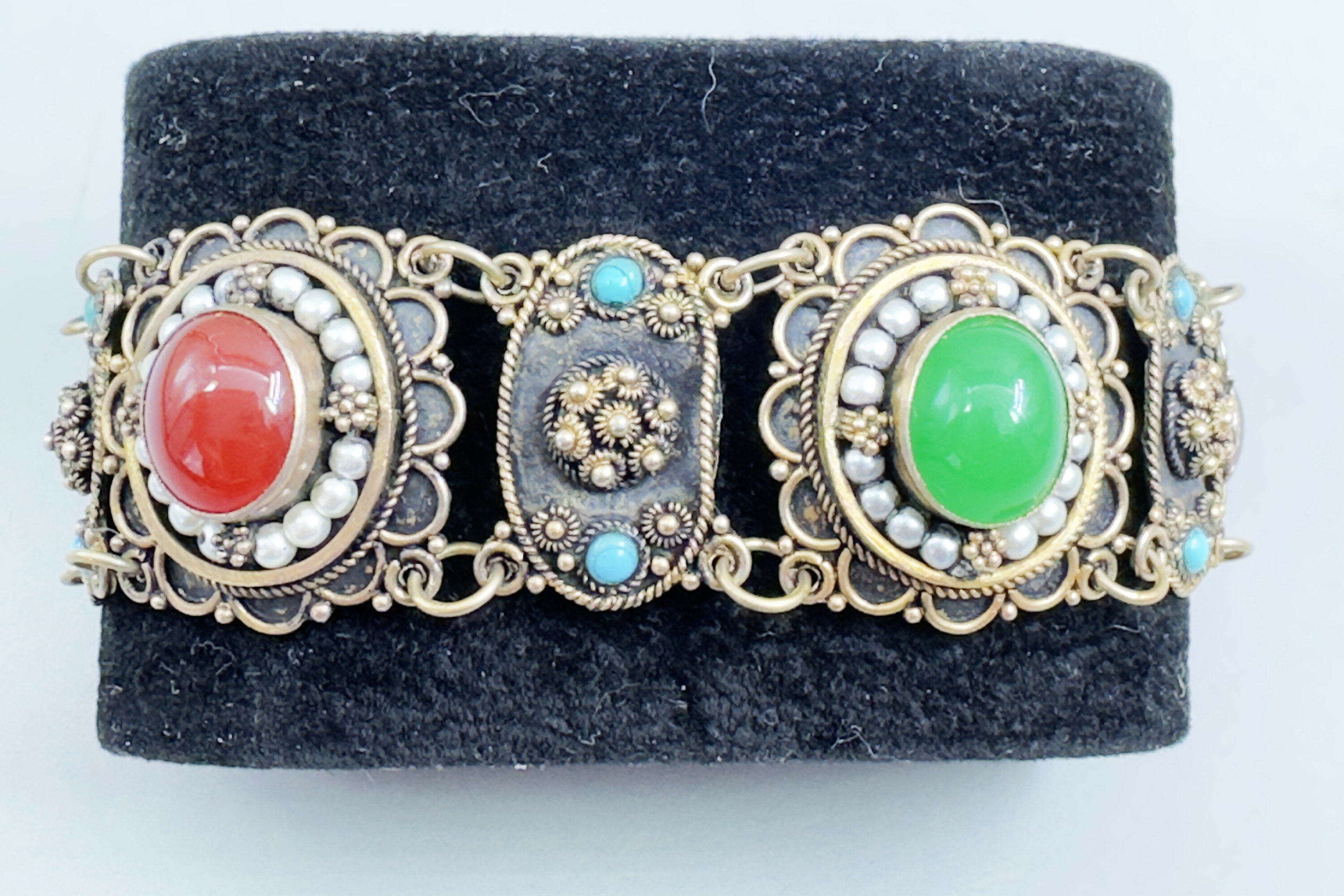
Victorian silver gilt filigree bracelet, Morocco
Price: £95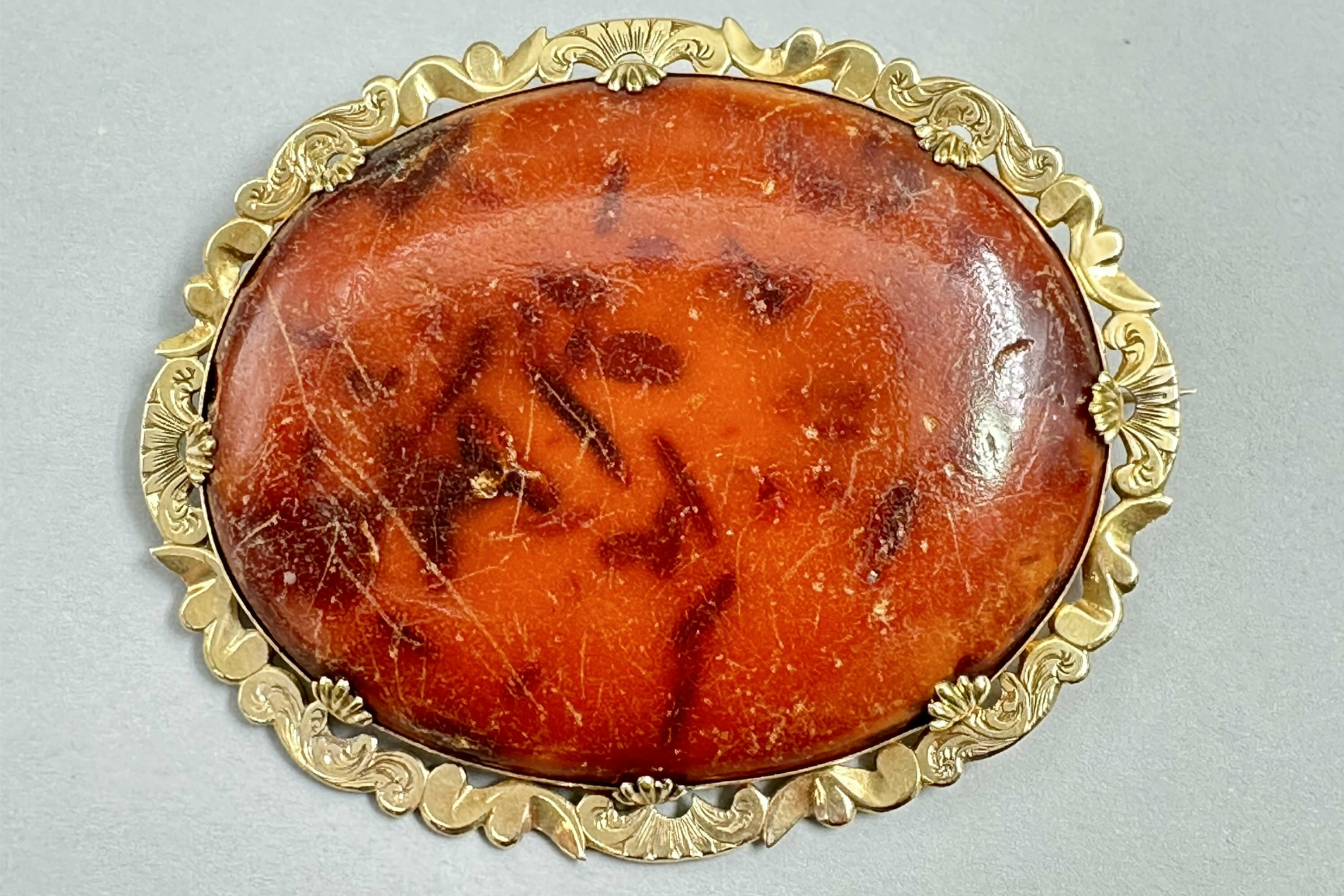
Victorian large 9ct gold brooch set with amber c1900
Price: £200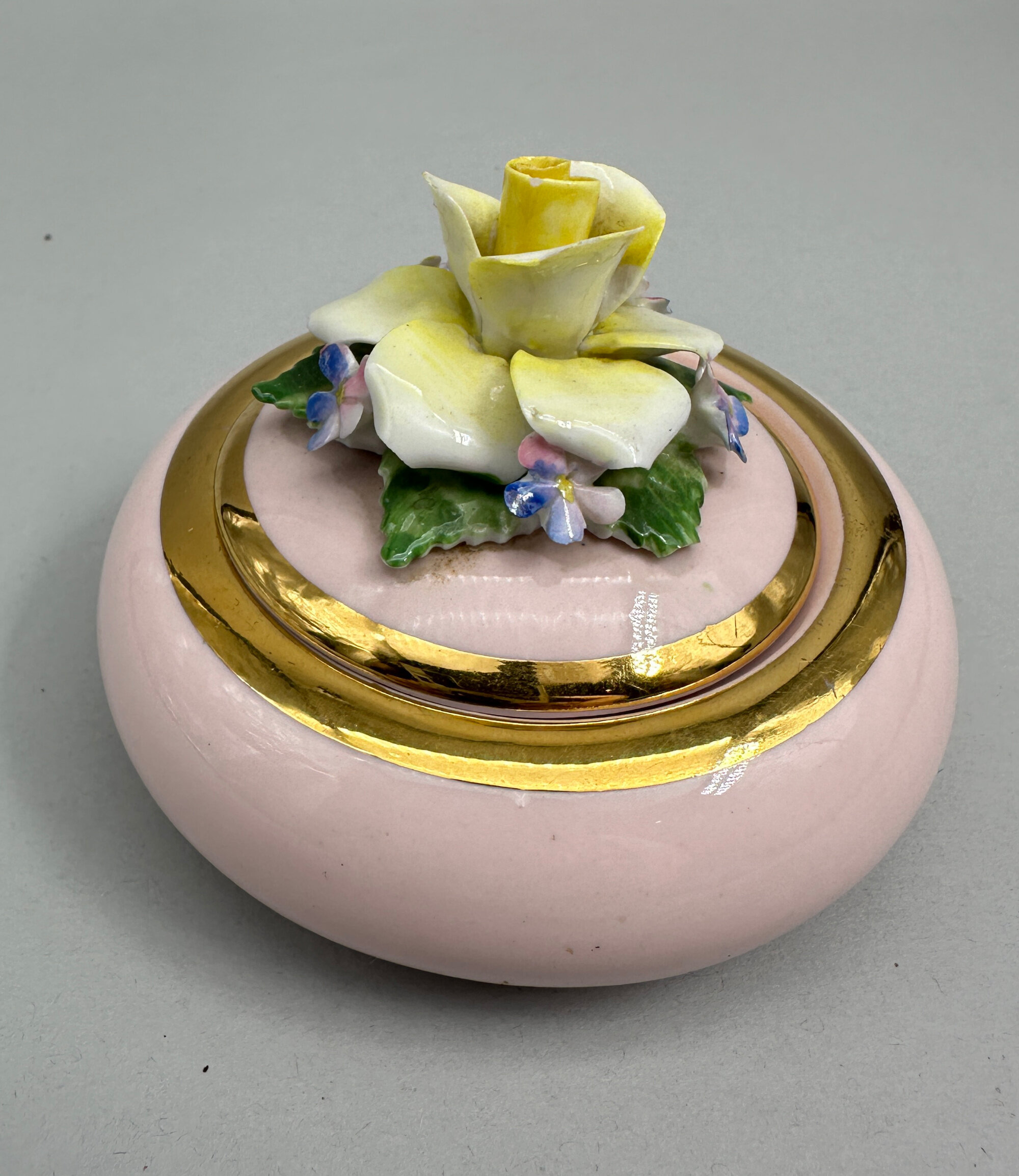
Pink porcelain powder box, Radnor Bone China, English Staffordshire, 1950s
Price: £15Radnor was the trade name used by Hall Bros (Longton) Ltd. Hall Brothers was a China manufacturer based at the Radnor Works, Longton, Stoke-on-Trent, England which traded from 1947 until its liquidation in 1972. It produced figures, birds, toby jugs and floral ware, mainly small porcelain boxes which were distinguished by their decoration of finely modelled flowers (see image XX for an advert from the 1960s). This box is a typical example and survives in excellent condition with just a very small amount of near inevitable damage to the petals.
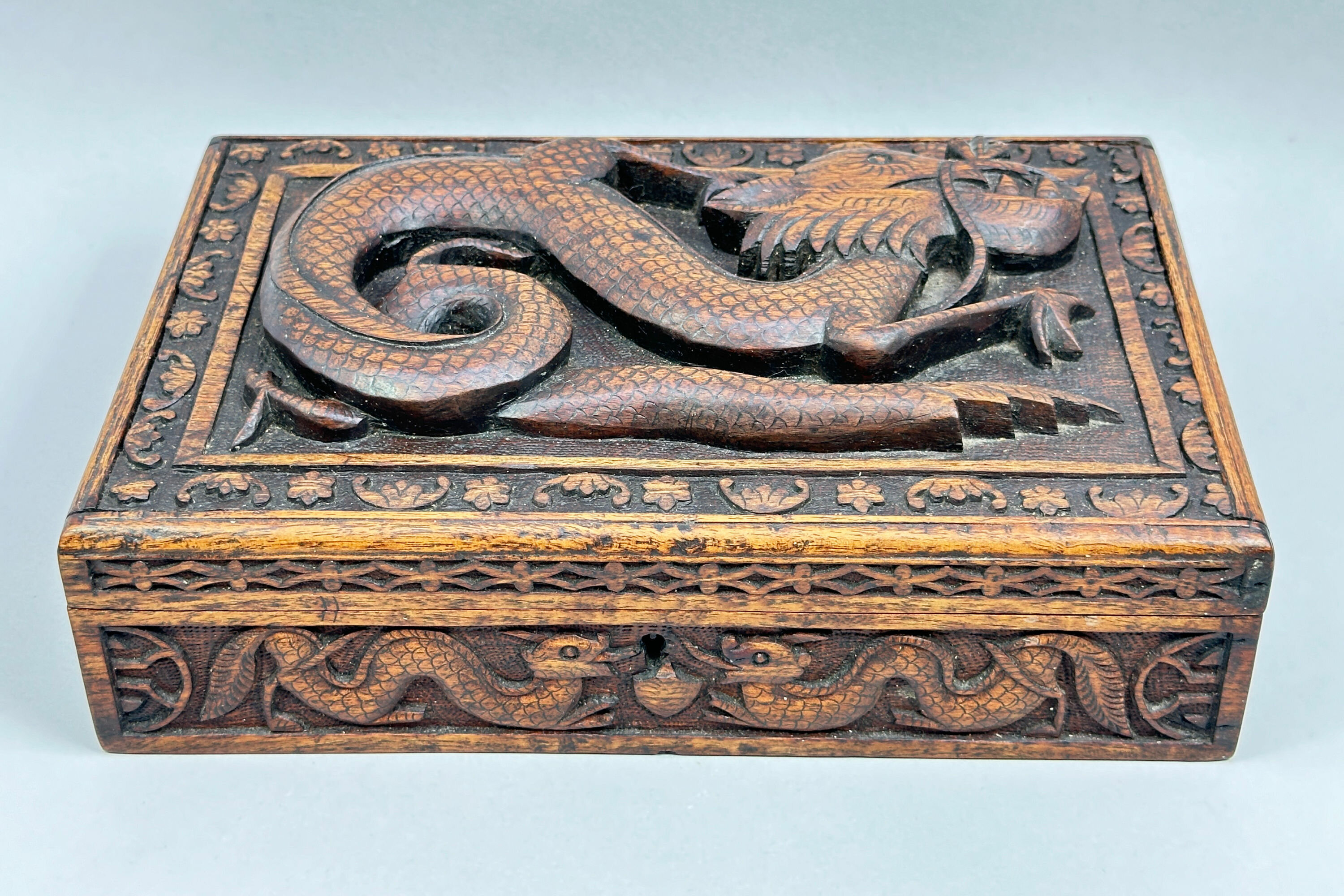
Chinese carved wood Box decorated Dragons, early C20th
Price: £150
Monochrome tubular bead necklace, Modern
Price: £95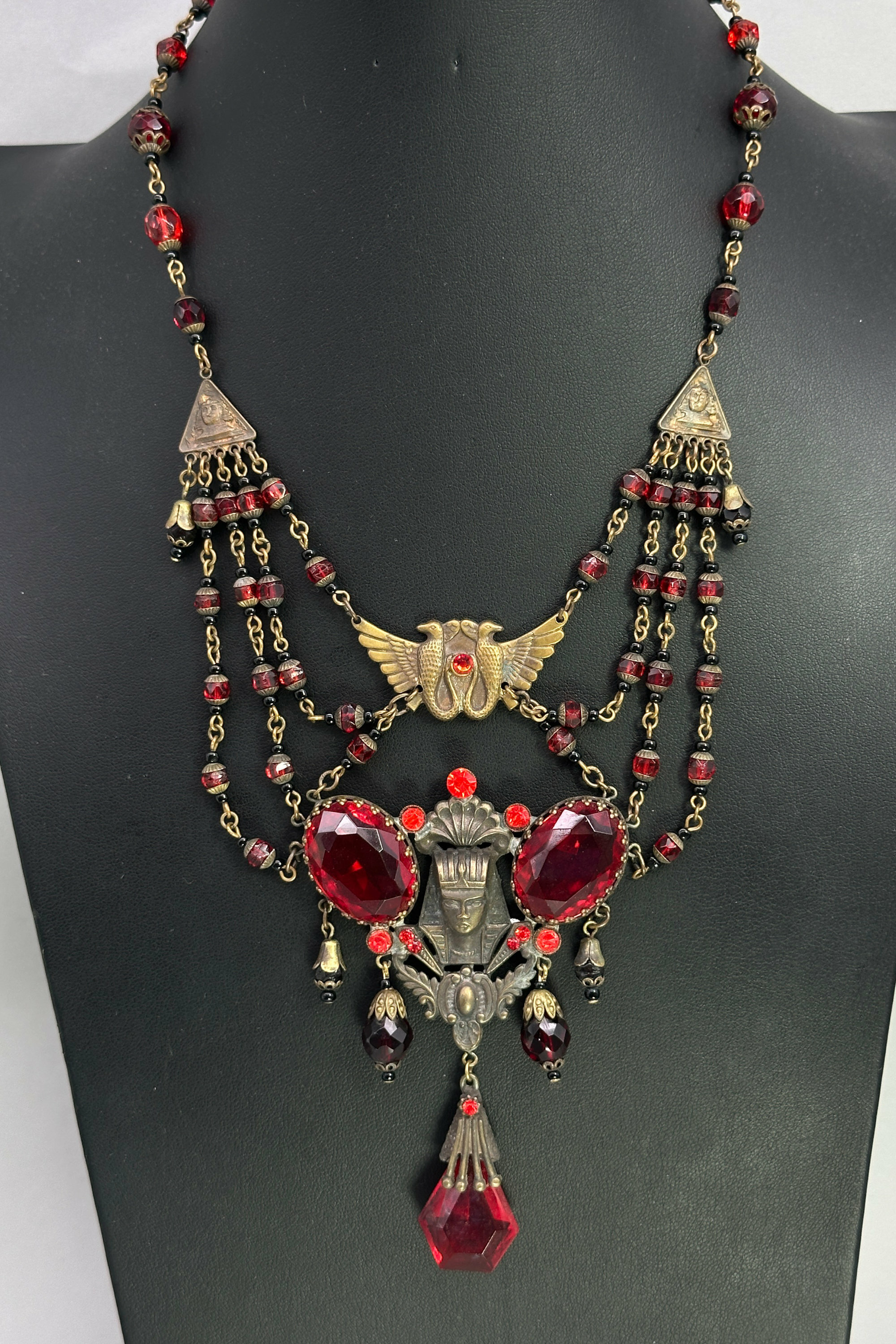
Early Egyptian Revival necklace with ruby glass stones c1900
Price: £175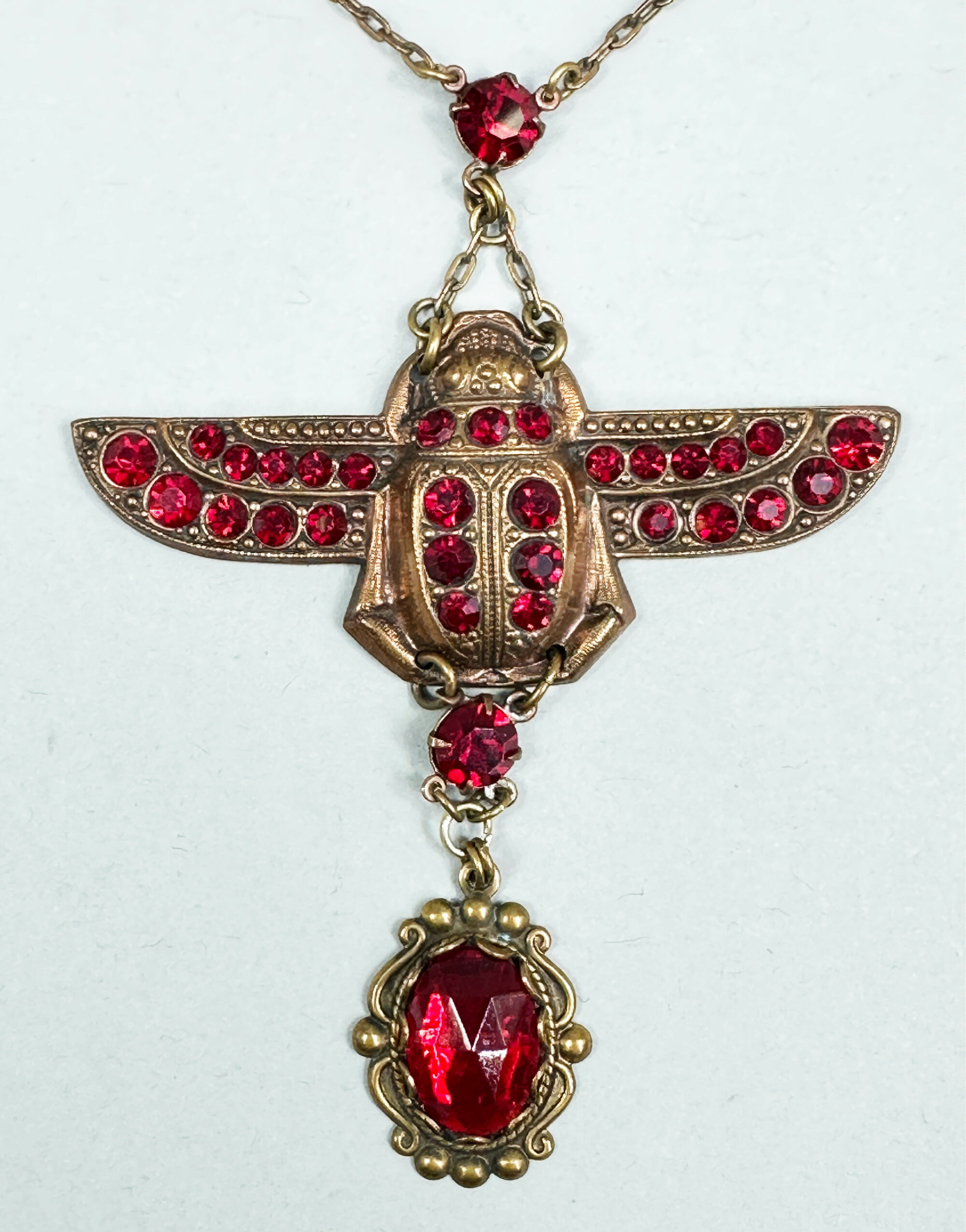
Early Egyptian Revival necklace c1900
Price: £65
Bay Ceramic Ewer No 268-30, West Germany, 1960s
Price: £55Bay Ceramics was founded by Eduard Bay in the 1930s and based in Ransbach Baumbach, the heart of the main West German pottery producing region. Their productions included vases in a wide variety of shapes and designs which continued in production until the 1980s. Bodo Mans was amongst their most famous designers working in the 1950s and 1960s. He seems to have concentrated on organic semi abstract designs and ewers in this form, with the same pattern number but in a variety of different glazes, are attributed to him. This monochrome mustard glaze seems particularly attractive and complements the design very successfully producing a striking and decorative item which might enhance a wide variety of interior settings.
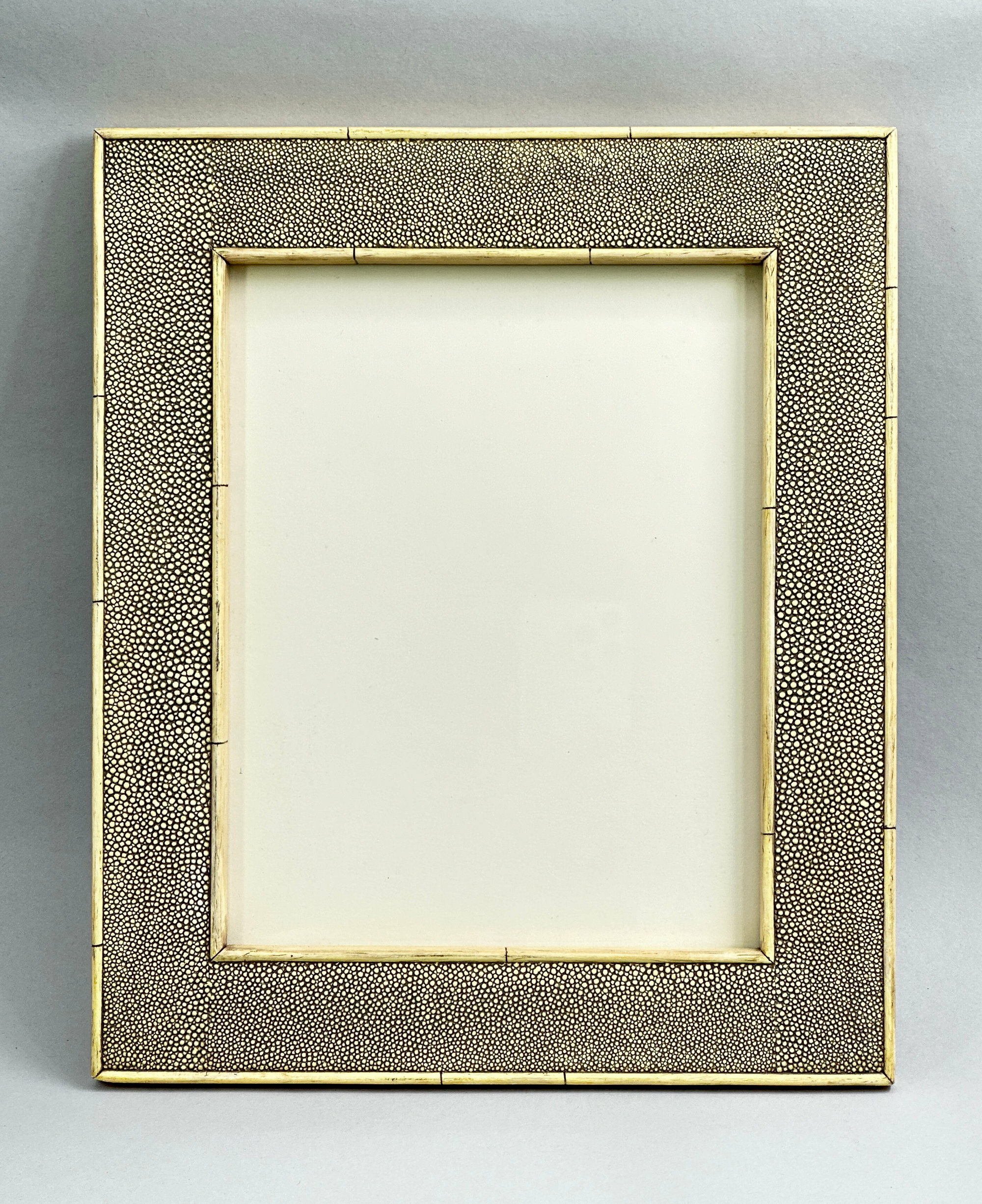
Art Deco Shagreen Picture Frame, 1930s
Price: £110Shagreen is a natural hide, typically from shark, stingray or dogfish, worked through special processes to produce a granular surface effect. Known in China and Japan from the earliest times and popular in Europe in the eighteenth century Shagreen enjoyed its greatest popularity in the Art Deco period where it was used as a covering for writing desks and well-dressed cabinetry and smaller items such as the picture frame we have here. The clean lines of this piece and the palette of colours employed fit exactly with the ethos of the Art Deco period and a dating to the 1930s is extremely likely. A luxury item at the time it could be used now to provide enhanced presentation of a favourite image adding to it a hint of true elegance.
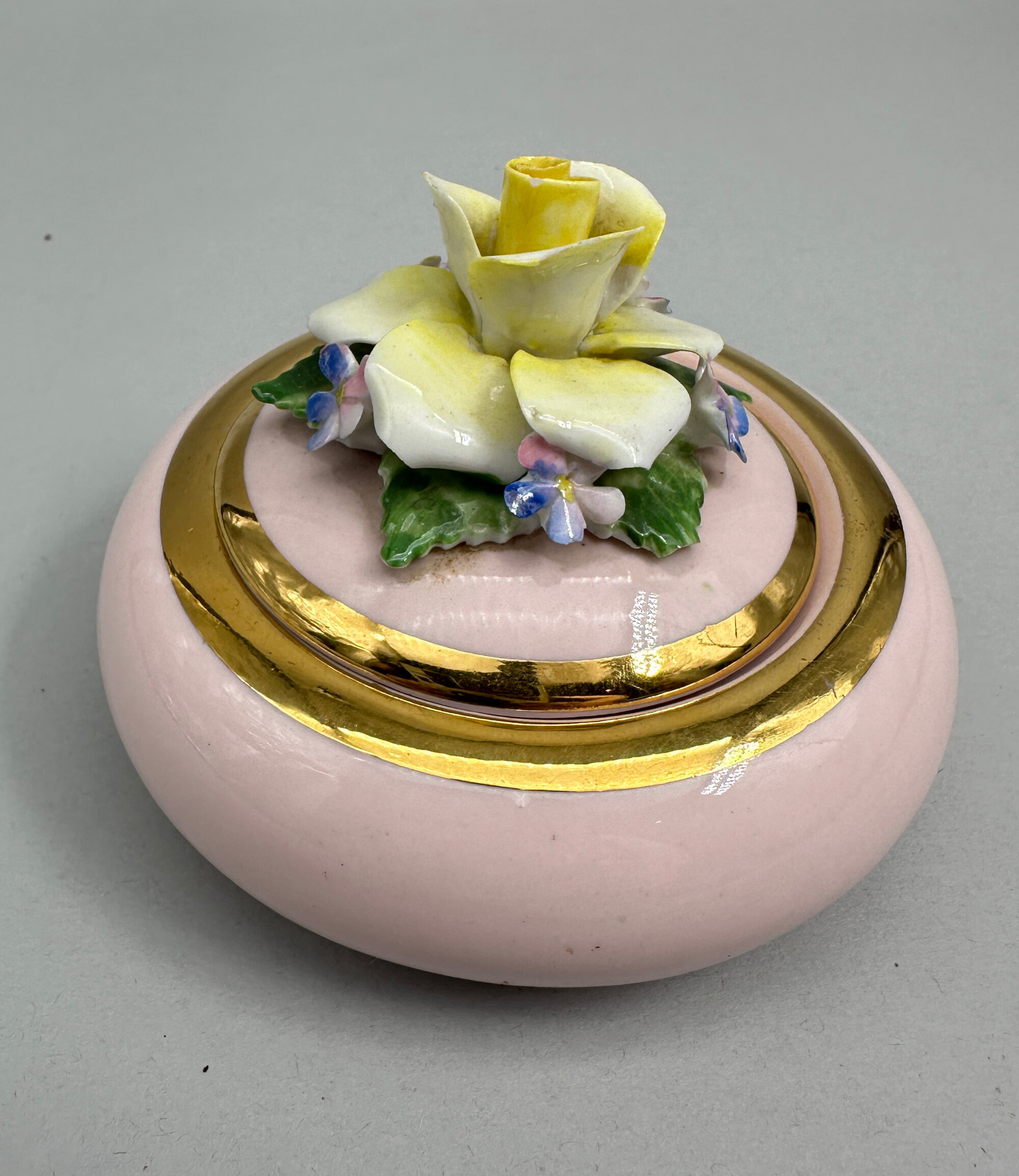
Pink porcelain powder box, Radnor Bone China, English Staffordshire, 1950s
Price: £15Radnor was the trade name used by Hall Bros (Longton) Ltd. Hall Brothers was a China manufacturer based at the Radnor Works, Longton, Stoke-on-Trent, England which traded from 1947 until its liquidation in 1972. It produced figures, birds, toby jugs and floral ware, mainly small porcelain boxes which were distinguished by their decoration of finely modelled flowers (see image XX for an advert from the 1960s). This box is a typical example and survives in excellent condition with just a very small amount of near inevitable damage to the petals.
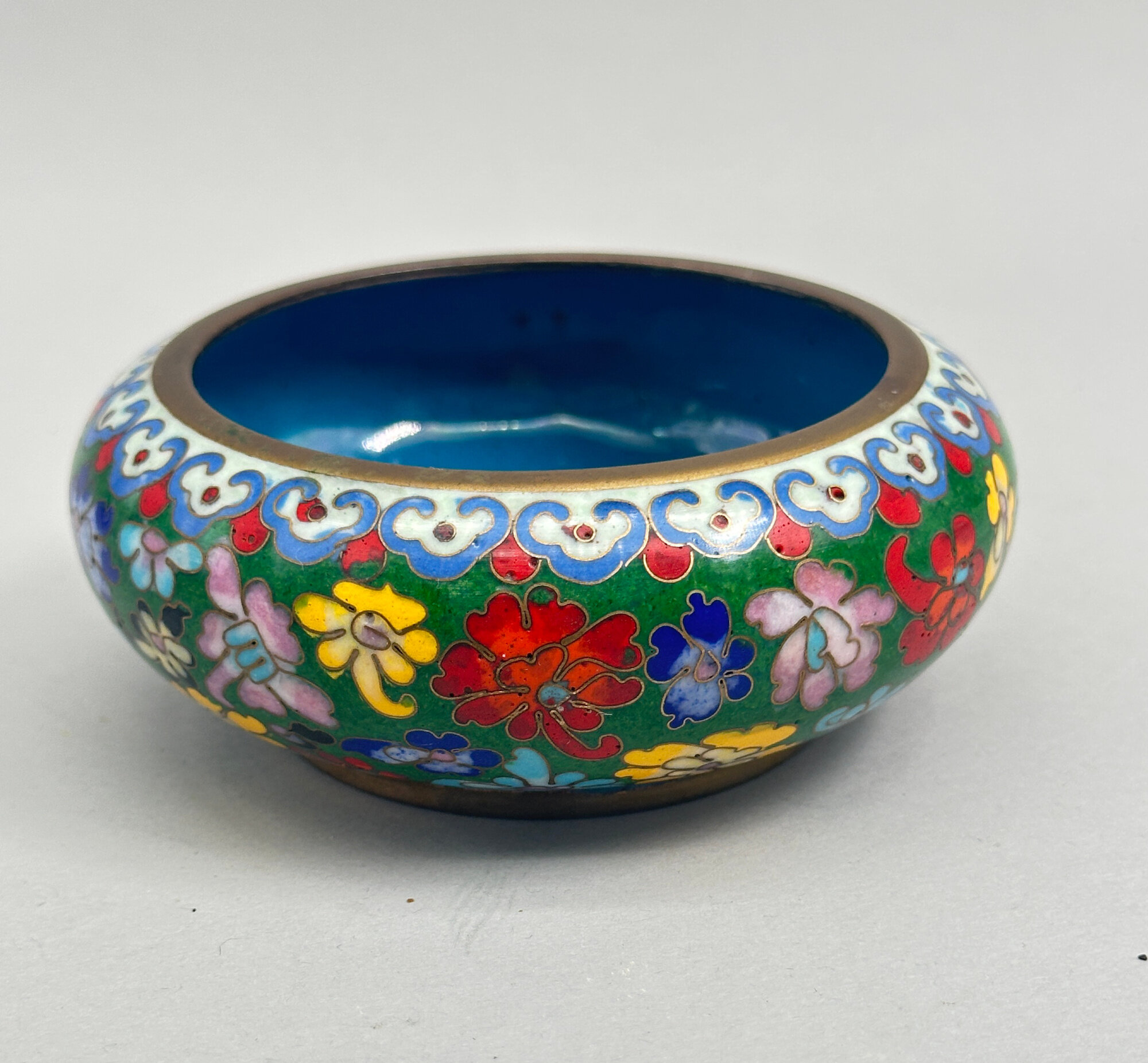
Chinese Cloisonne Shallow Bowl, C19th
Price: £45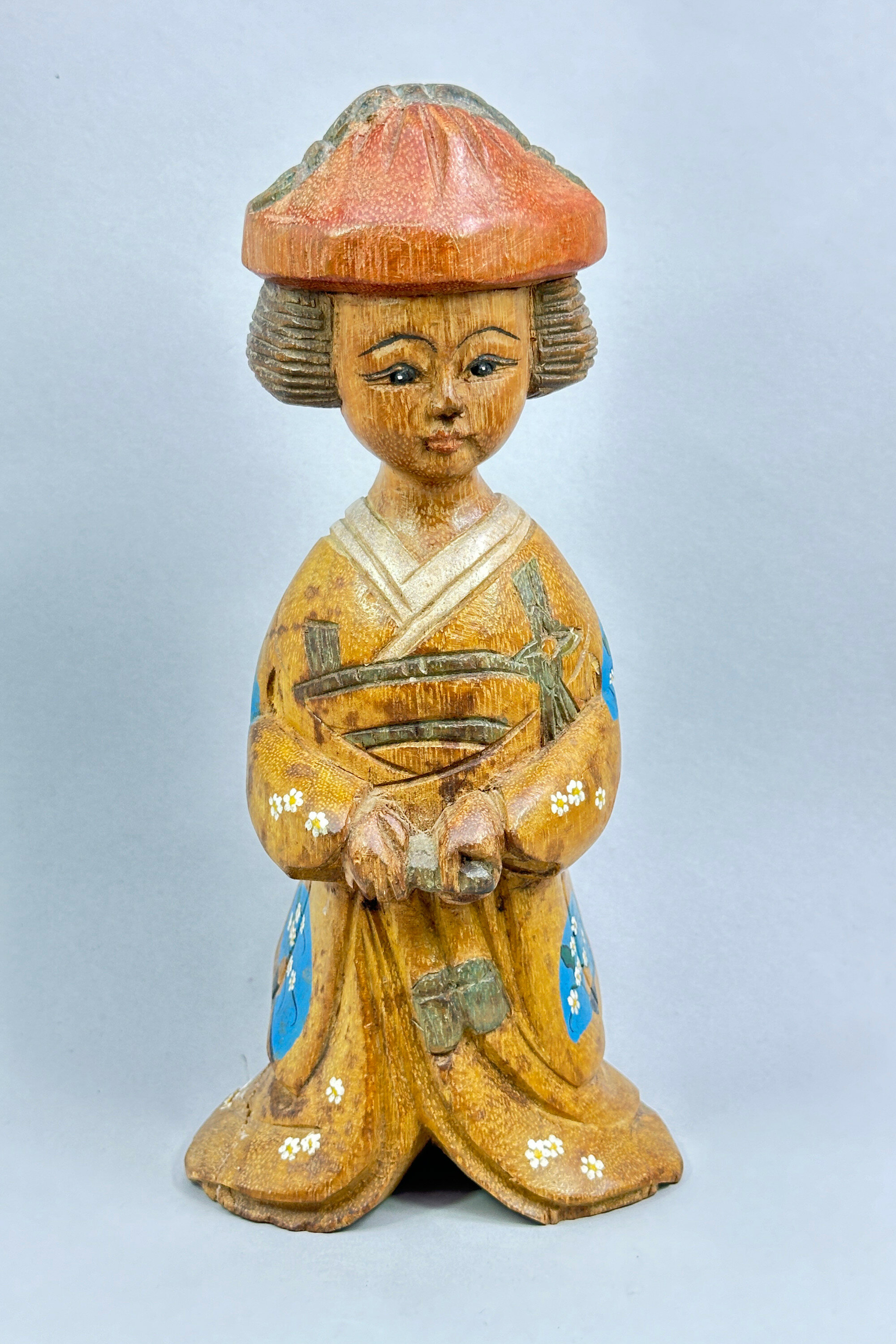
Japanese Carved Wood Figure of a Young girl, Kokeshi doll style, C20th
Price: £45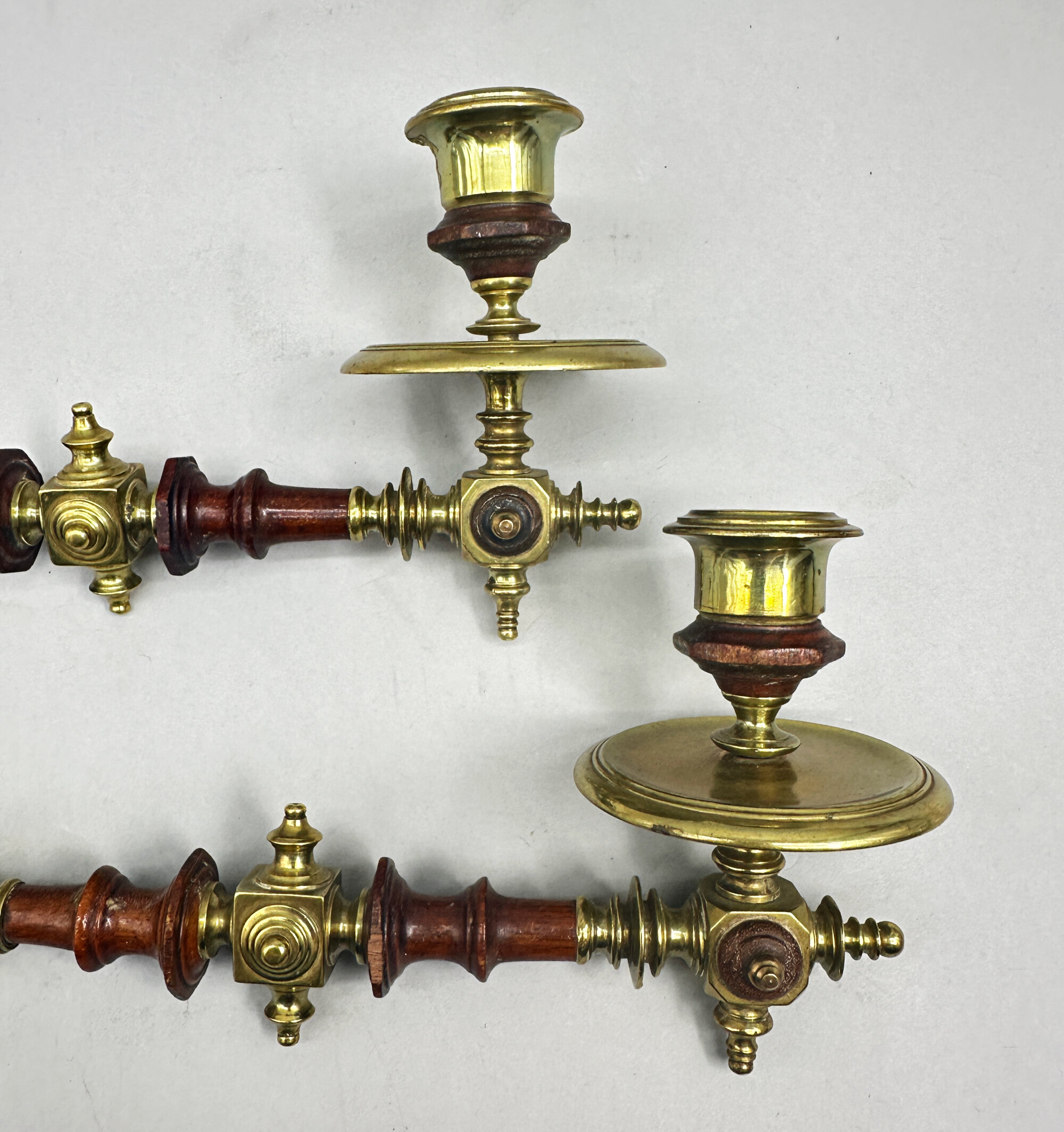
Art Deco piano sconces c1920
Price: £85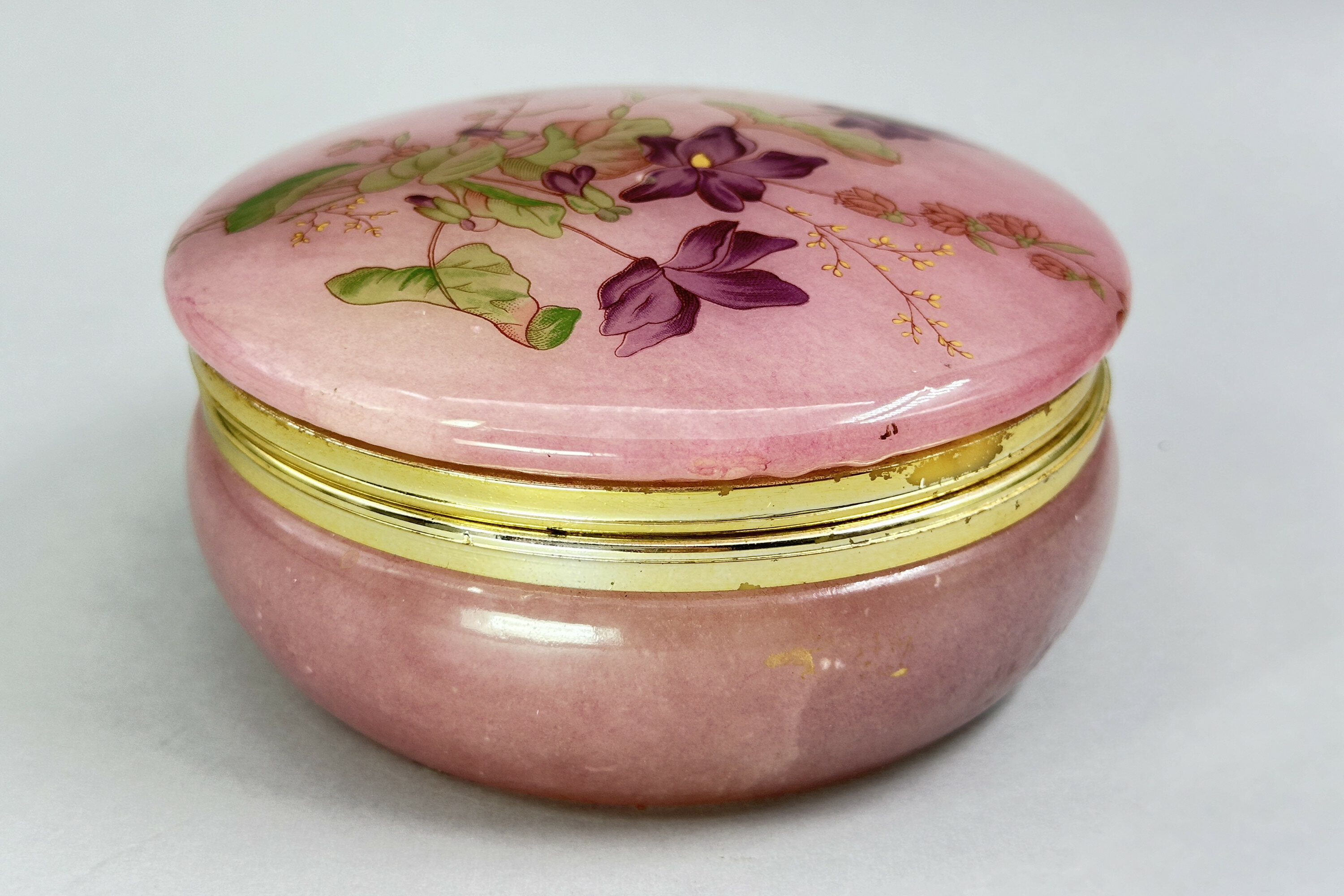
Pink Alabaster Box and Cover, Italy late c20th
Price: £25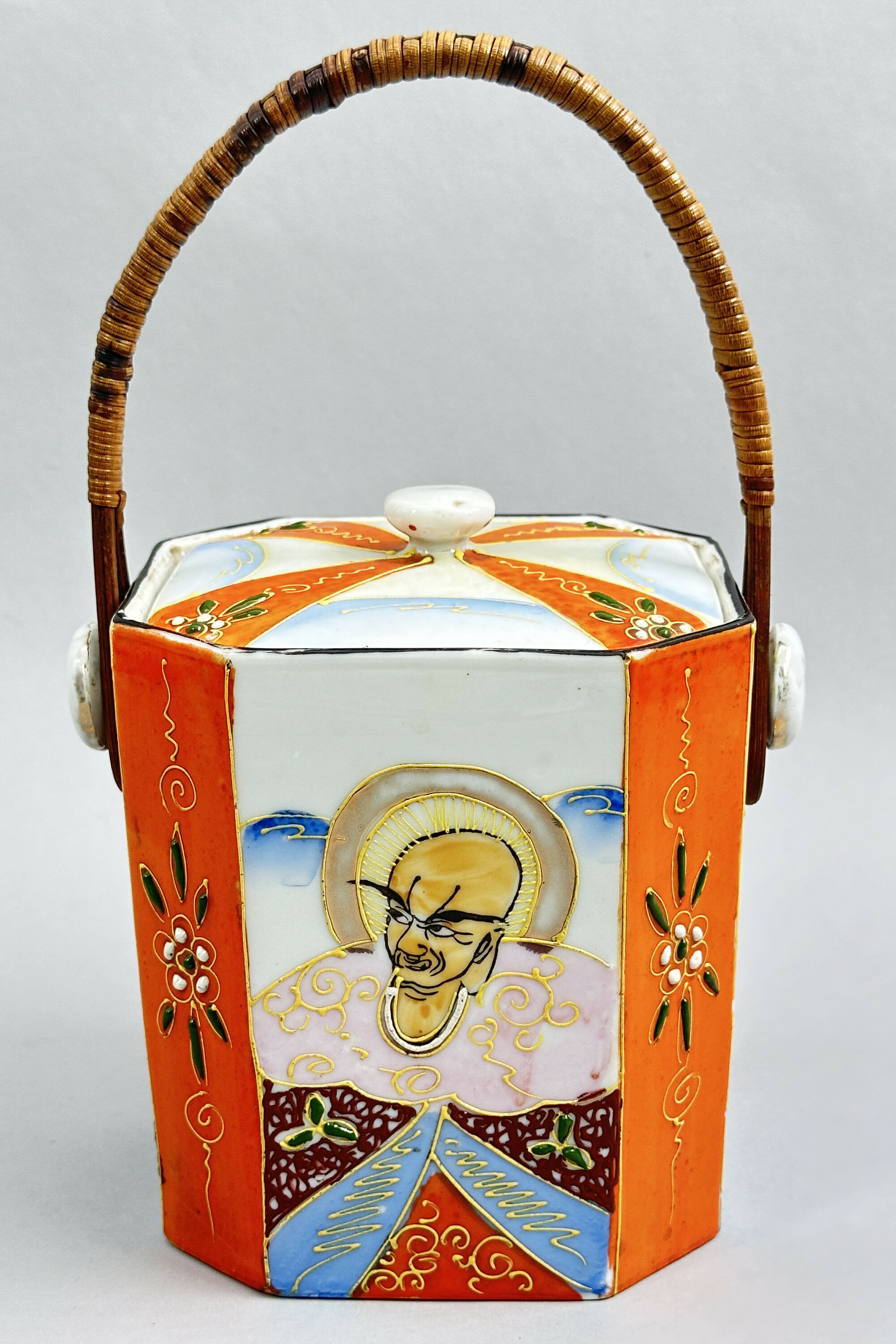
Japanese Samurai China Biscuit Box and Cover, C20th
Price: £25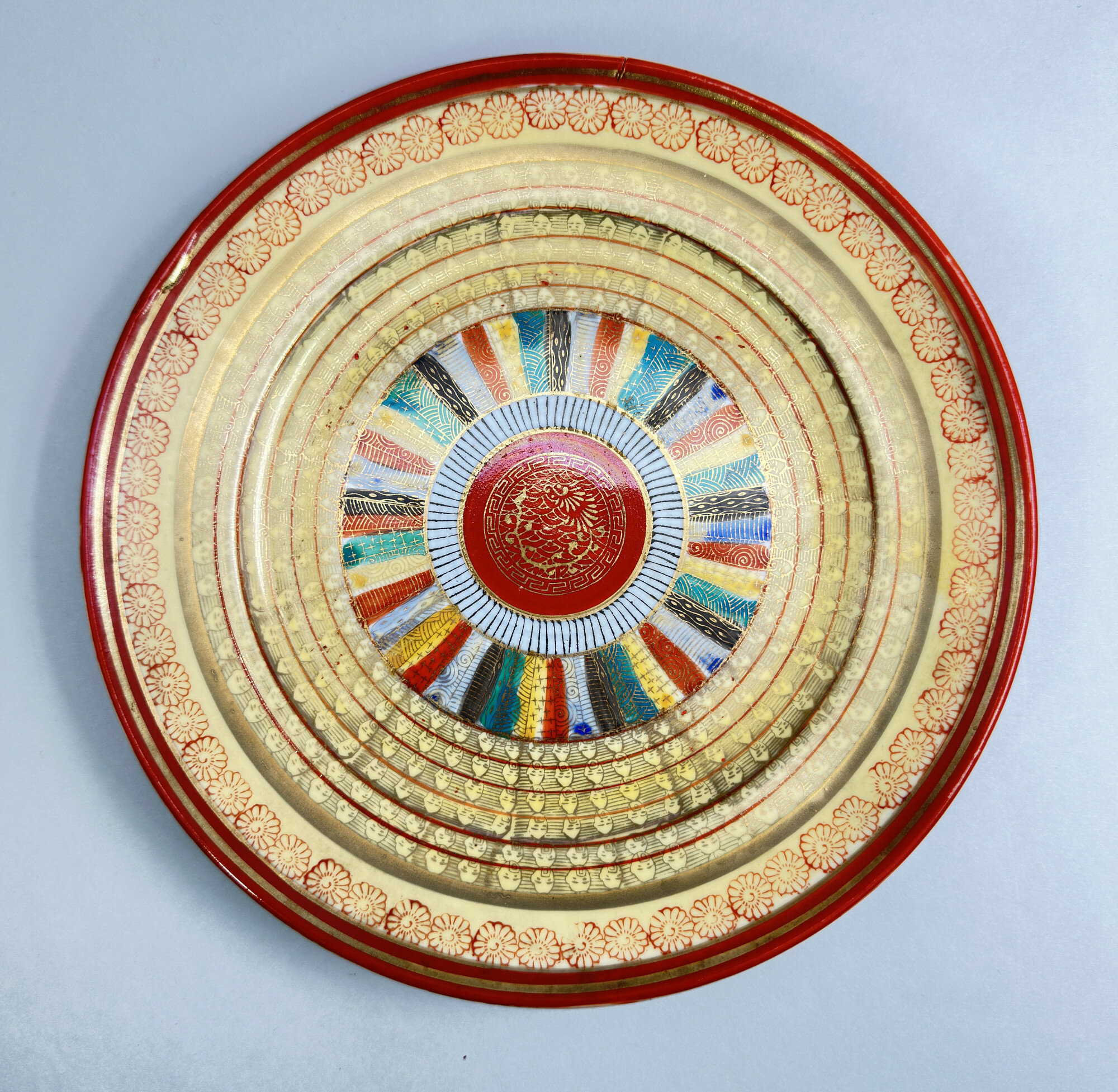
Japanese Kutani Dish decorated with the Thousand Faces pattern, first half C20th
Price: £45The colourings and style of work here clearly indicate the workshops of Kutani (the word means 'nine valleys') in the former Kaga province of Japan. By the nineteenth century the majority of their pieces were decorated in iron red and gold but sometimes with other colours in addition, as here. The ‘thousand faces’ pattern (an apocryphal term and this cataloguer has not attempted to count the number of faces appearing here) seems to have been evolved around the end of the nineteenth century and then continued in production until the mid twentieth. Both plates in various sizes and even tea sets are found in the design. The mark ‘Made in Japan’ was usually employed after 1941 (in the previous twenty years ‘Japan’ was the norm) but there are exceptions and the paste of the foot rim here does suggest a slightly earlier date, perhaps around 1930. In perfect condition, with very little wear to the decoration, this piece is a fine example of a rather eccentric decorative patttern.
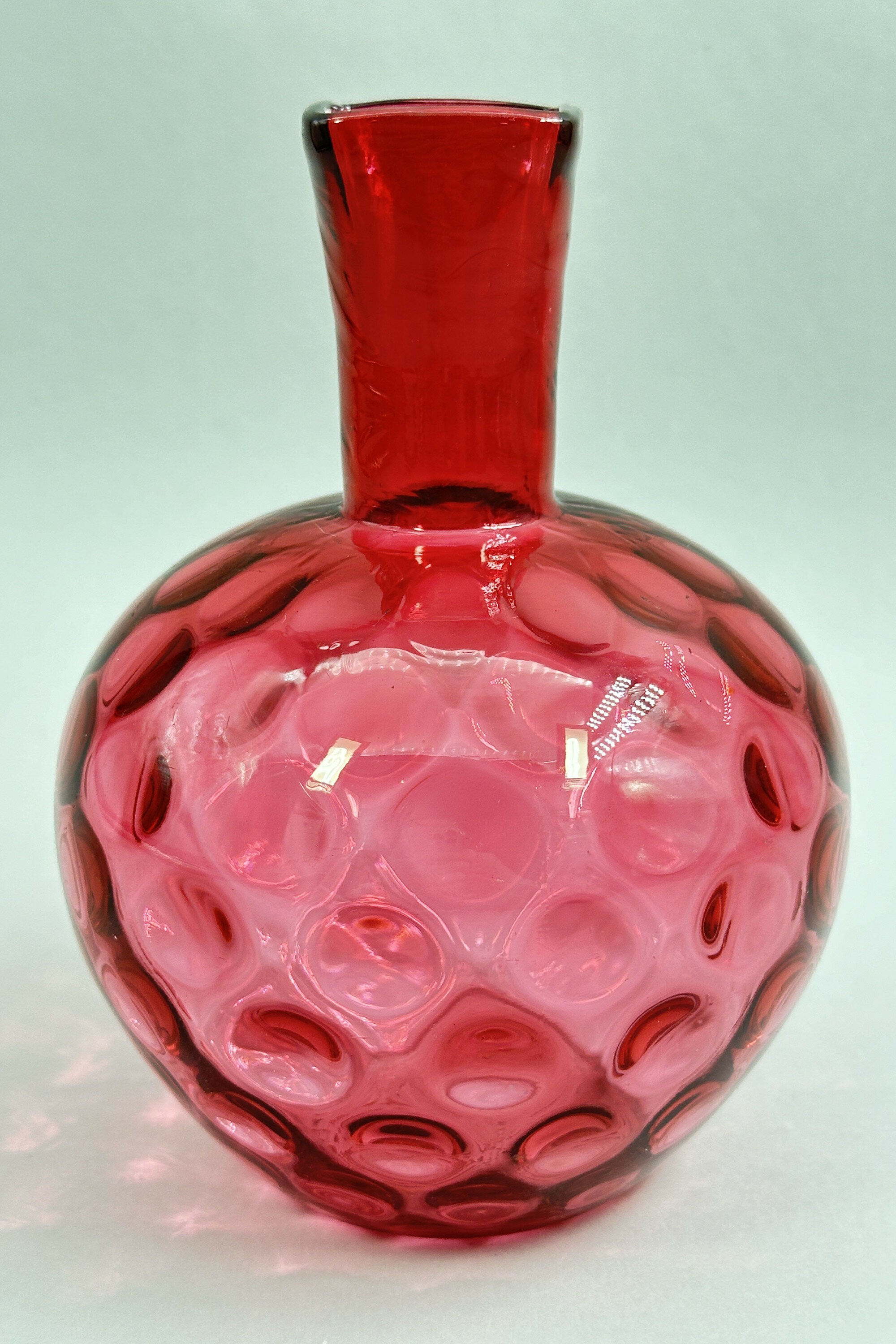
Cranberry Glass Vase circa 1900
Price: £30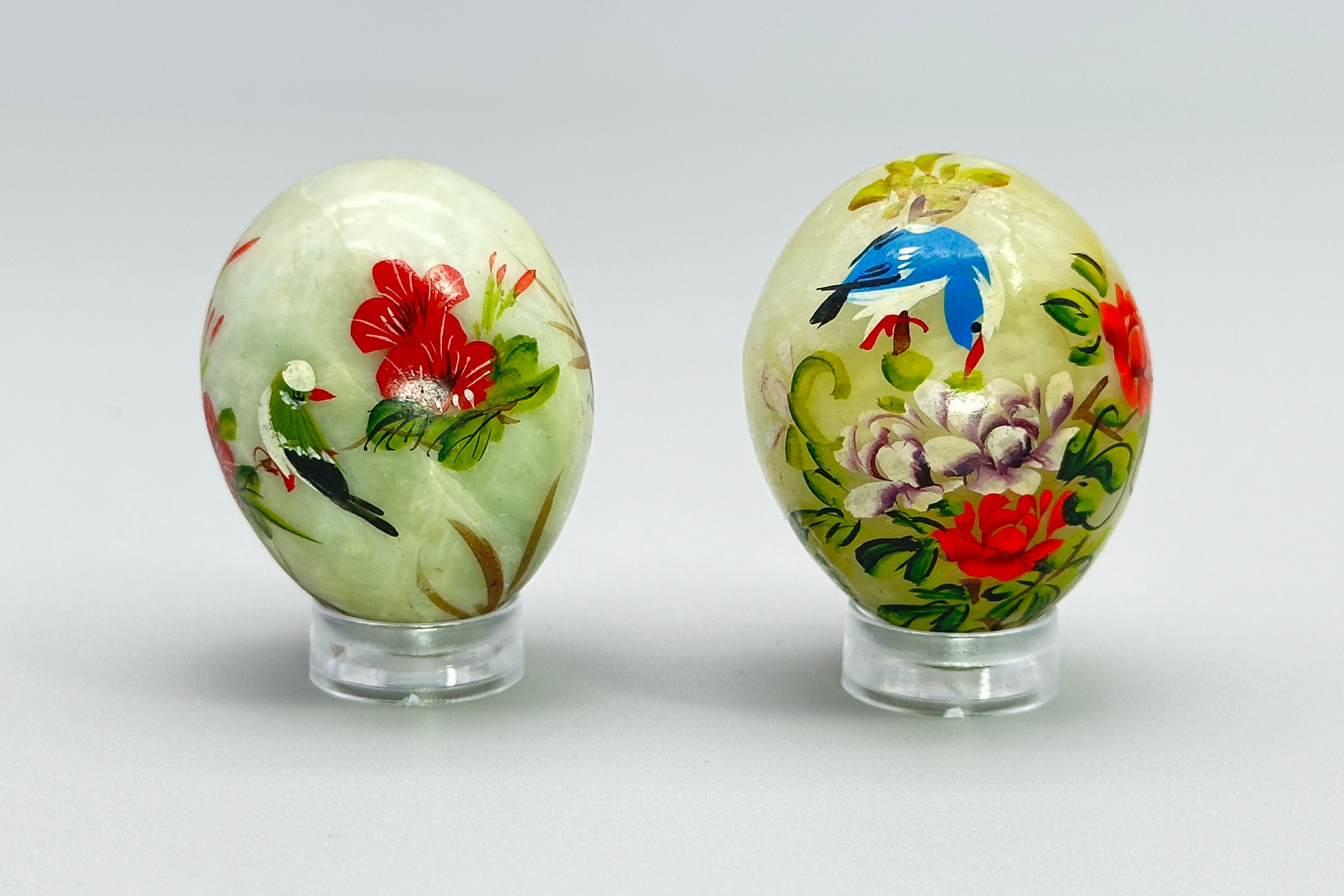
Pair of Chinese hand painted jade Eggs with modern stands
Price: £25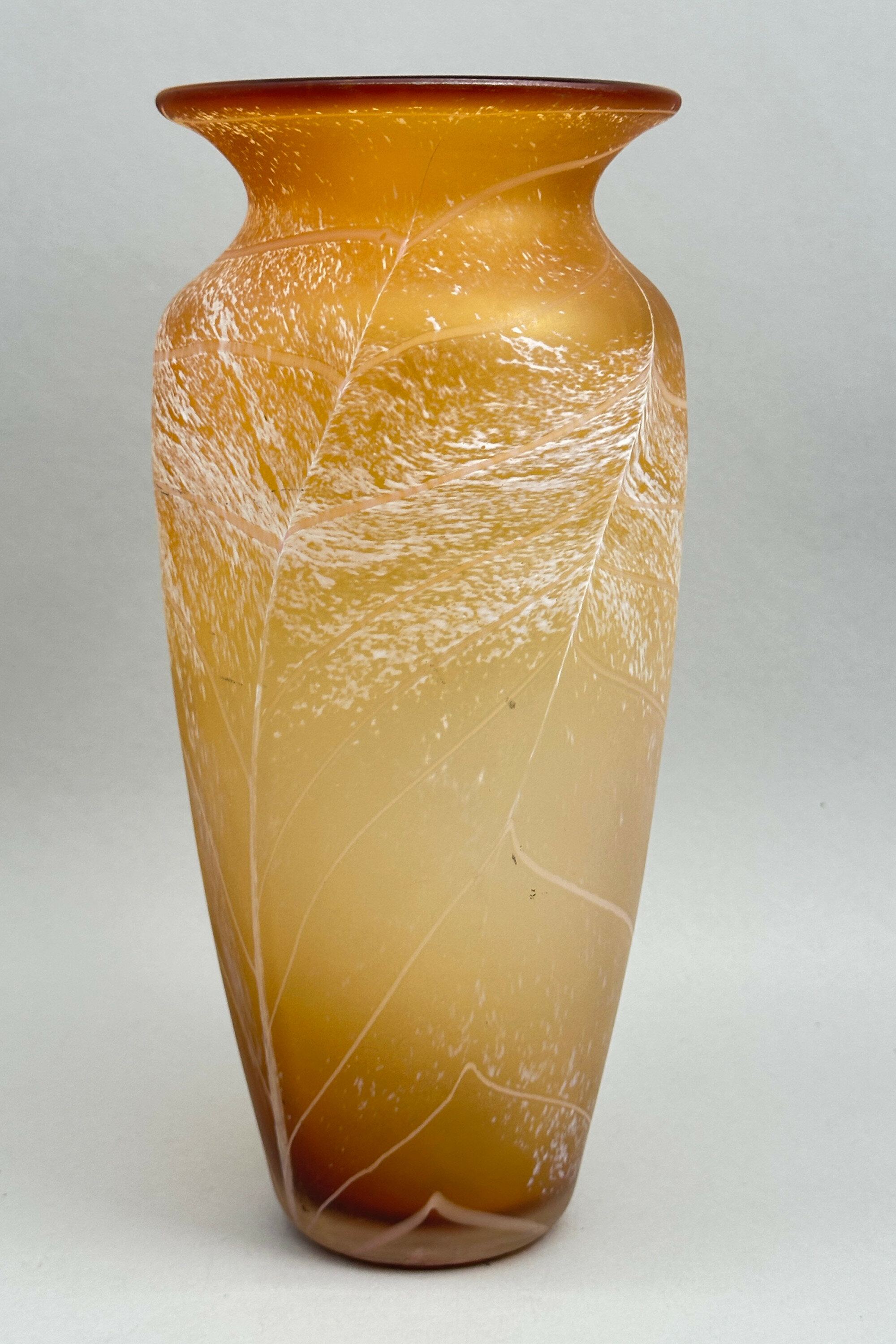
Art glass feather design Vase, probably German second half C20th
Estimate: £30 – 40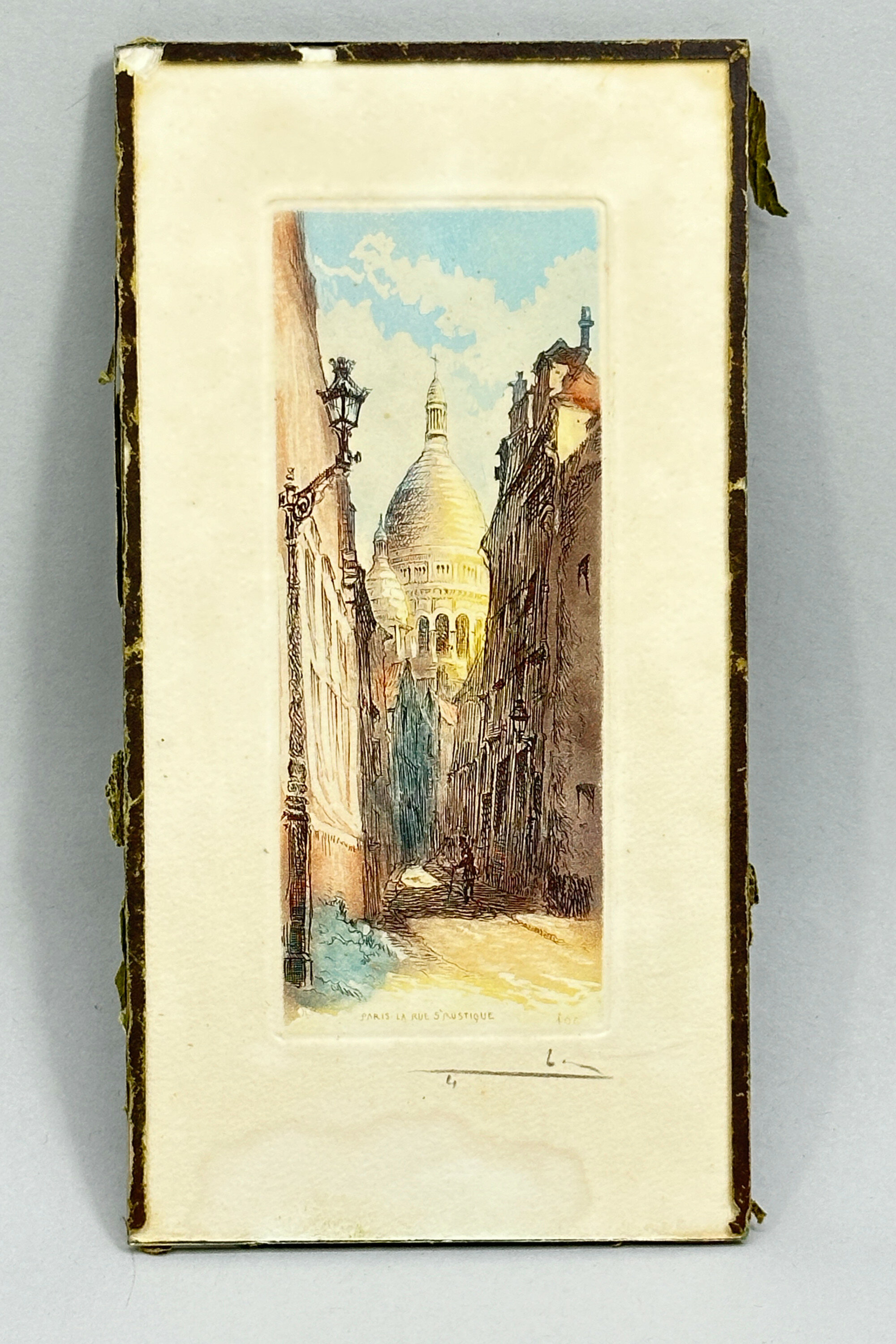
French Orientalist etching aquatint - Paris La Rue Saint Rustique
Price: £35
Show stopping suite of necklace and earrings c1960
Price: £85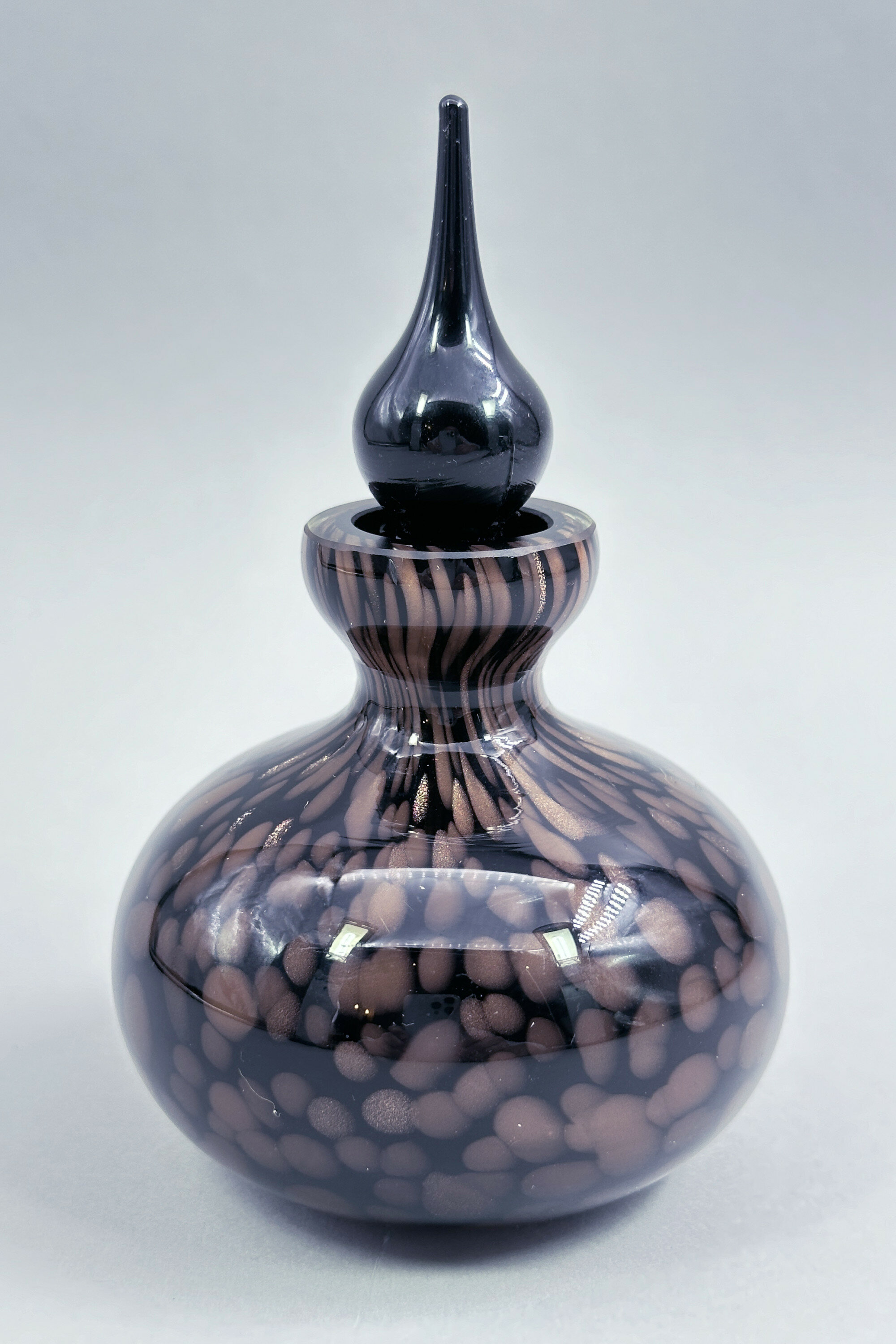
Black and Gold Copper Glitter Art Glass Scent Bottle, probably Murano late C20th
Price: £55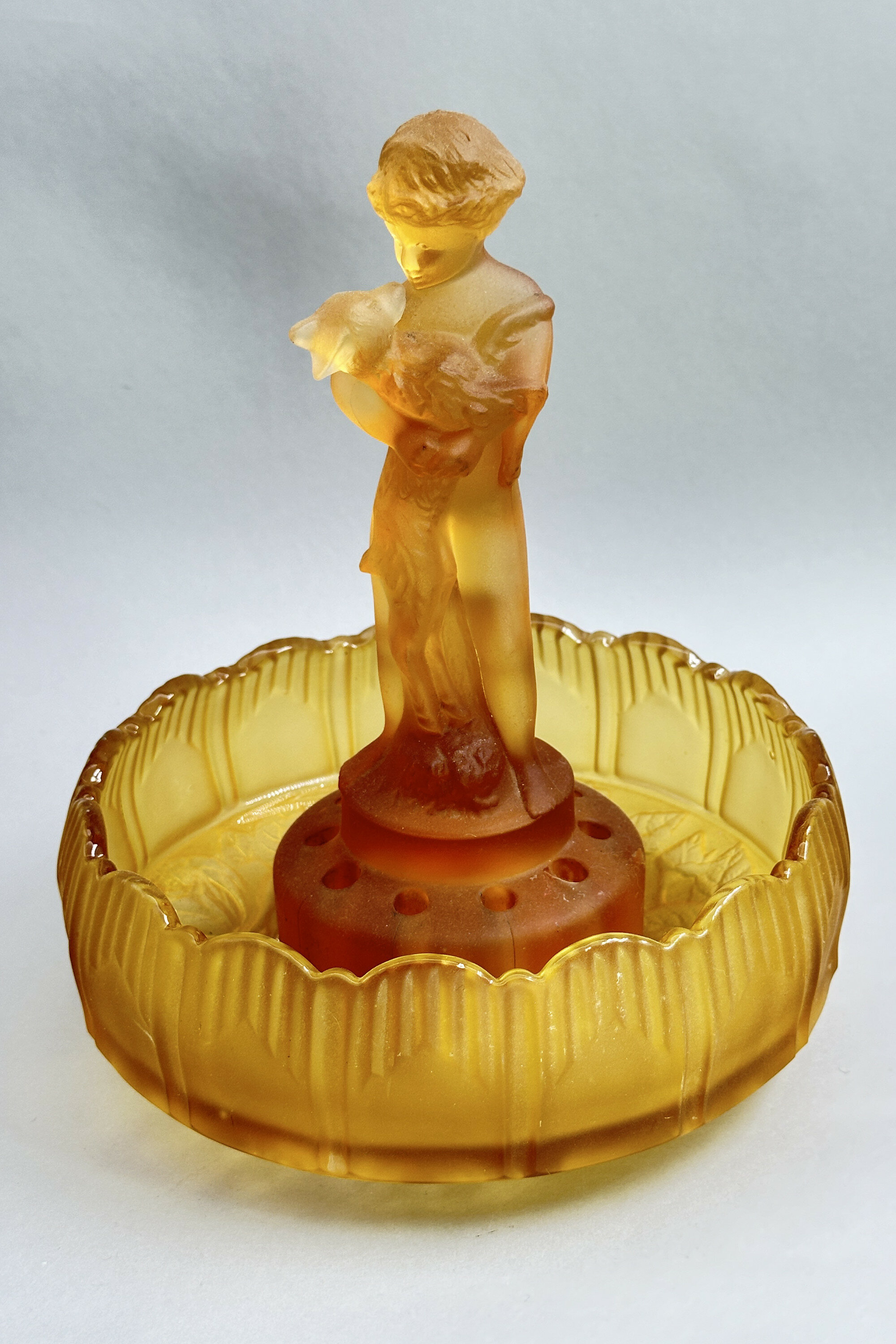
Sowerby Amber Glass Centrepiece circa 1930
Price: £75The Sowerby family came from the North West of England near Carlisle and settled in Gateshead in the late eighteenth century. The firm Sowerby Glassworks is known from 1807 onwards and continued production until 1972, concentrating on pressed glass. Catalogues of their wares still exist and they produced pieces in a wide variety of styles and shapes which retain their popularity today.
The centrpiece figurine, which was intended as a flower holder or ‘frog’, is rather unusual; normally the figures are female but the style of the modelling is identical. Similar designs to the bowl can be found in a 1936 catalogue but versions of it even appear in another catalogue from 1882. Many centrepiece/bowl combinations are found and some of them are not always original. This may possibly be the case here but if so the ‘match’ is extremely pleasing to the eye and the two elements set one another off perfectly to produce a striking example of Art Deco decorative design.

Studio Pottery Vase with flambé glaze, C20th
Price: £75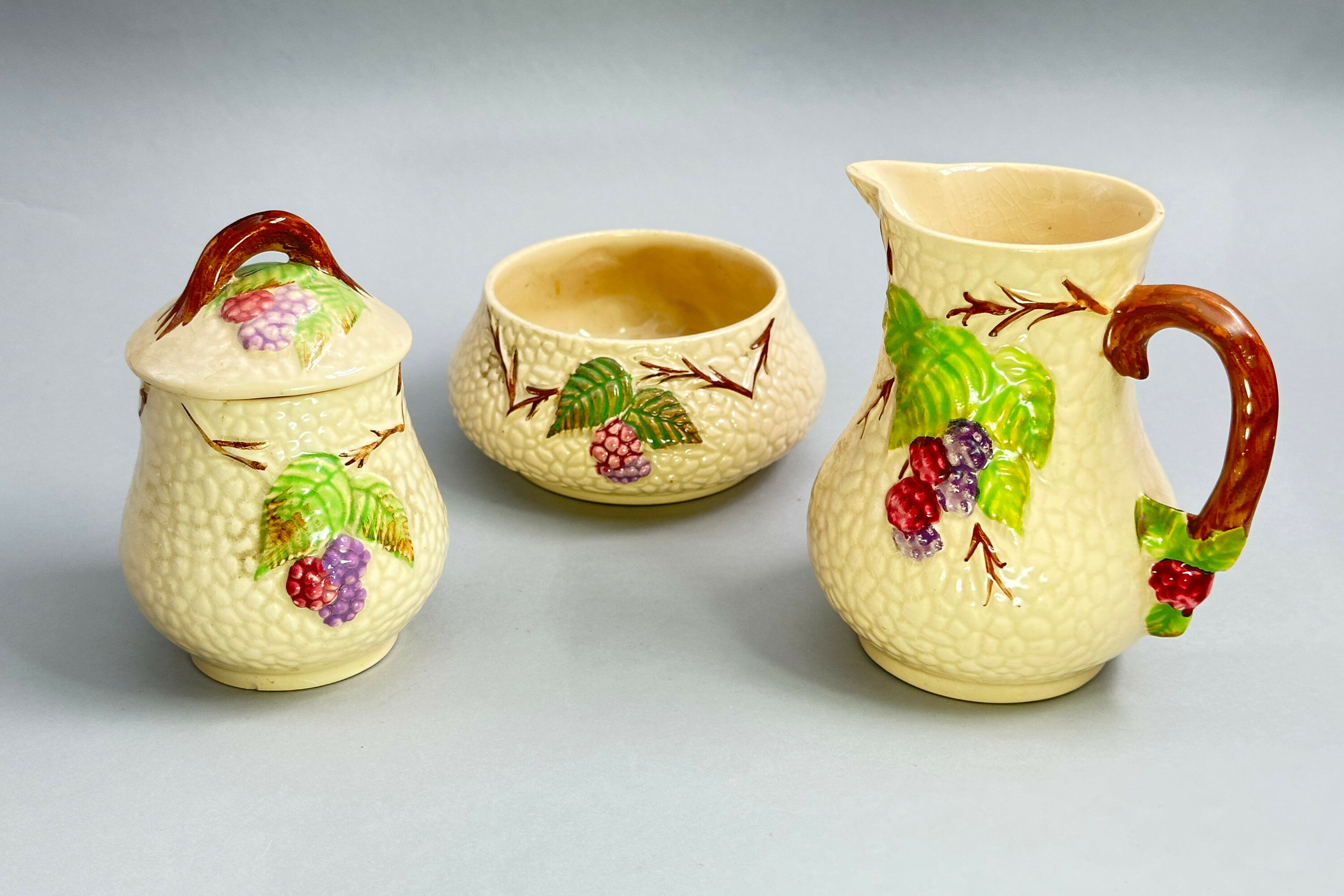
Set of three Wade Bramble Pattern teaware items, 1950s
Price: £25Wade Ceramics Ltd was a manufacturer of porcelain and earthenware, headquartered in Stoke-on-Trent, England. Founded in 1867, it was run by various members of the Wade family until the death of George Anthony Wade in 1987 after which there was a succession of management buyouts. Despite substantial investment in 2009, the firm eventually went into administration in 2022. Wade produced a wide variety of ceramics, including the well known Wade Whimsies animal figurines. A pair of Art Deco green glazed ‘salts’ are also included in this sale. The ‘Bramble’ design was created in the 1950s and a wide variety of tea service shapes were produced in the pattern. Collectors today can attempt to assemble examples from the whole of the range, towards which these three pieces might provide some assistance.
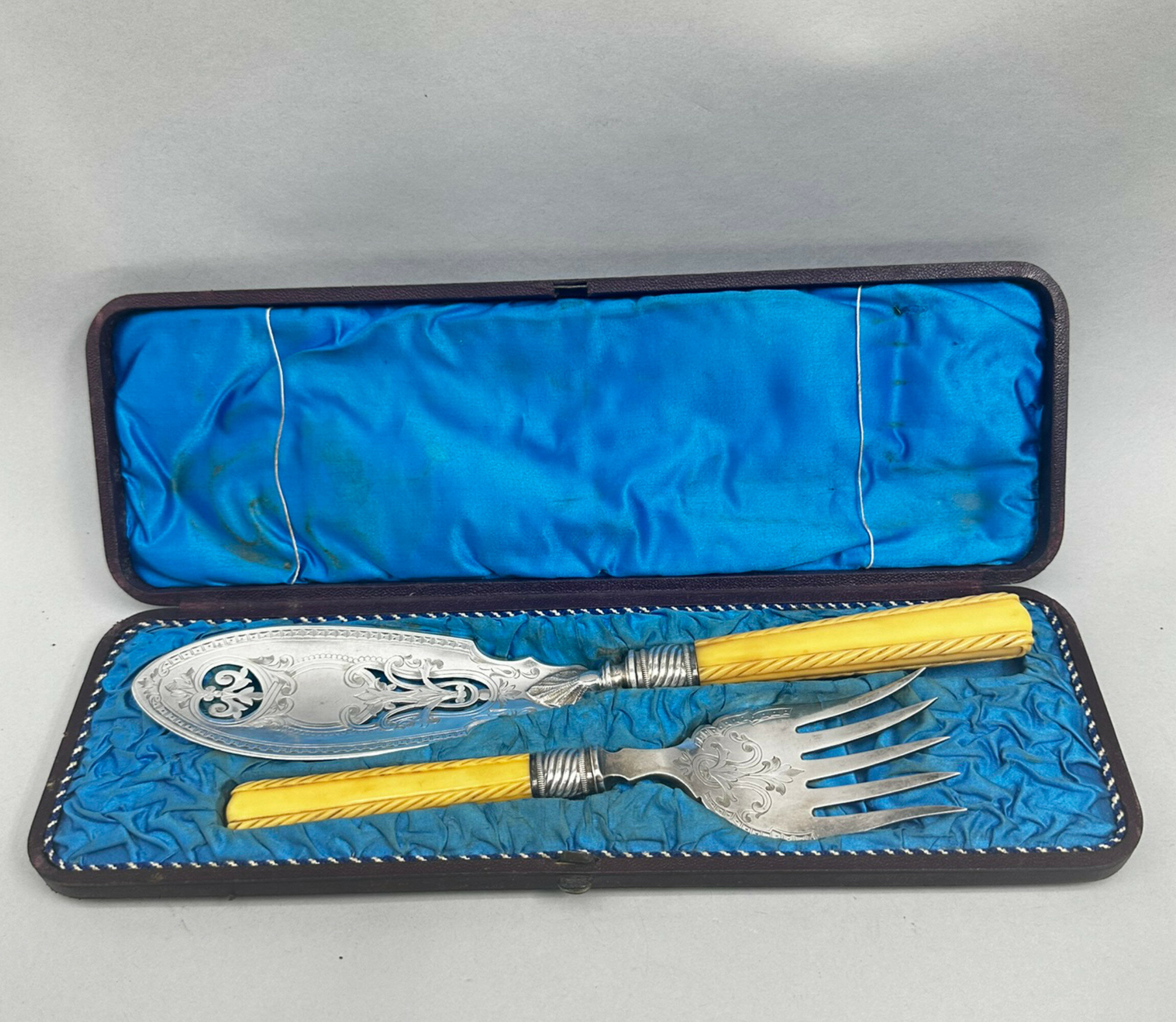
Pair of Silver Plated Fish Servers with fitted box, probably Edwardian
Price: £45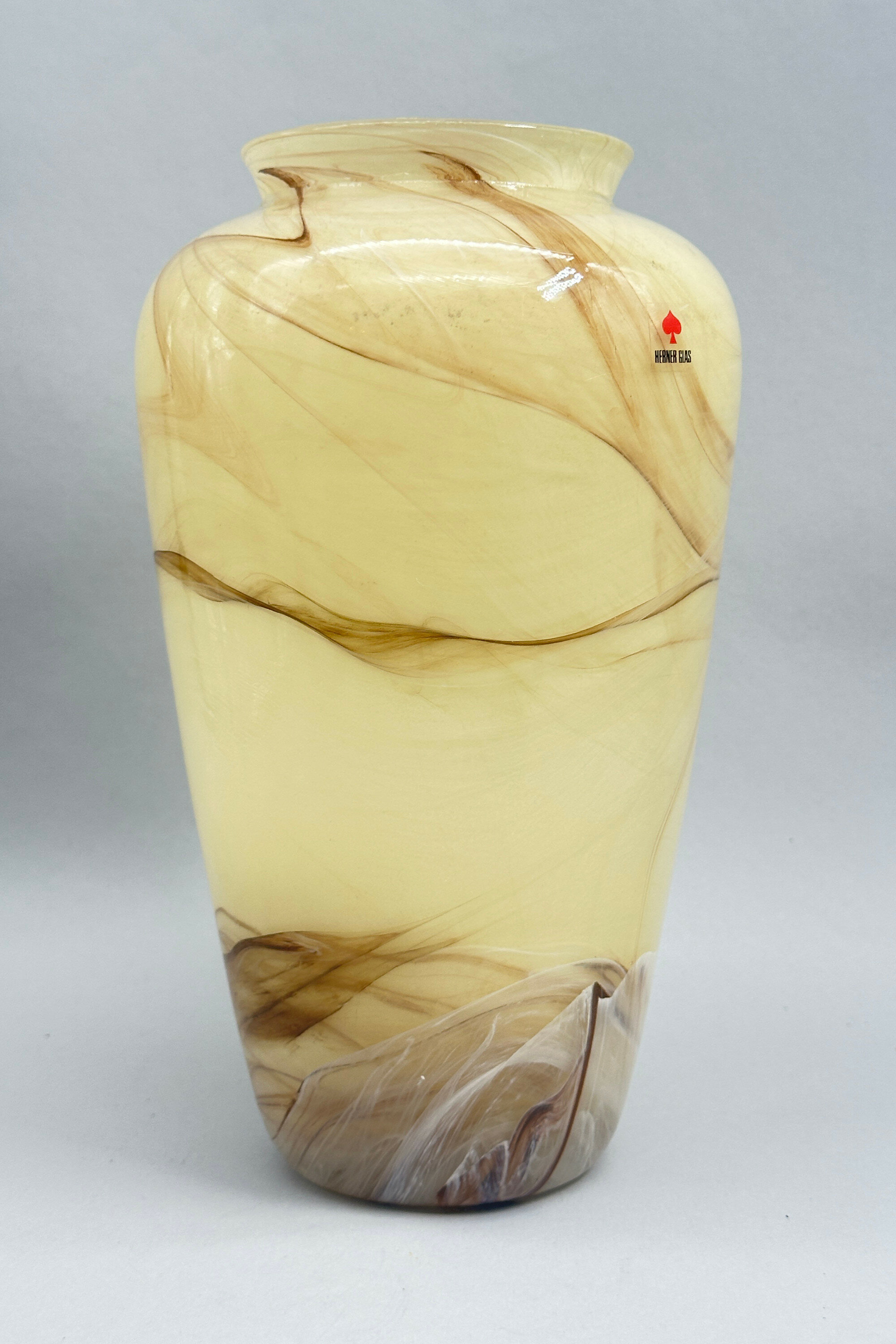
Tall glass swirl design Vase, Herner Glas Germany, late C20th
Estimate: £20 – 30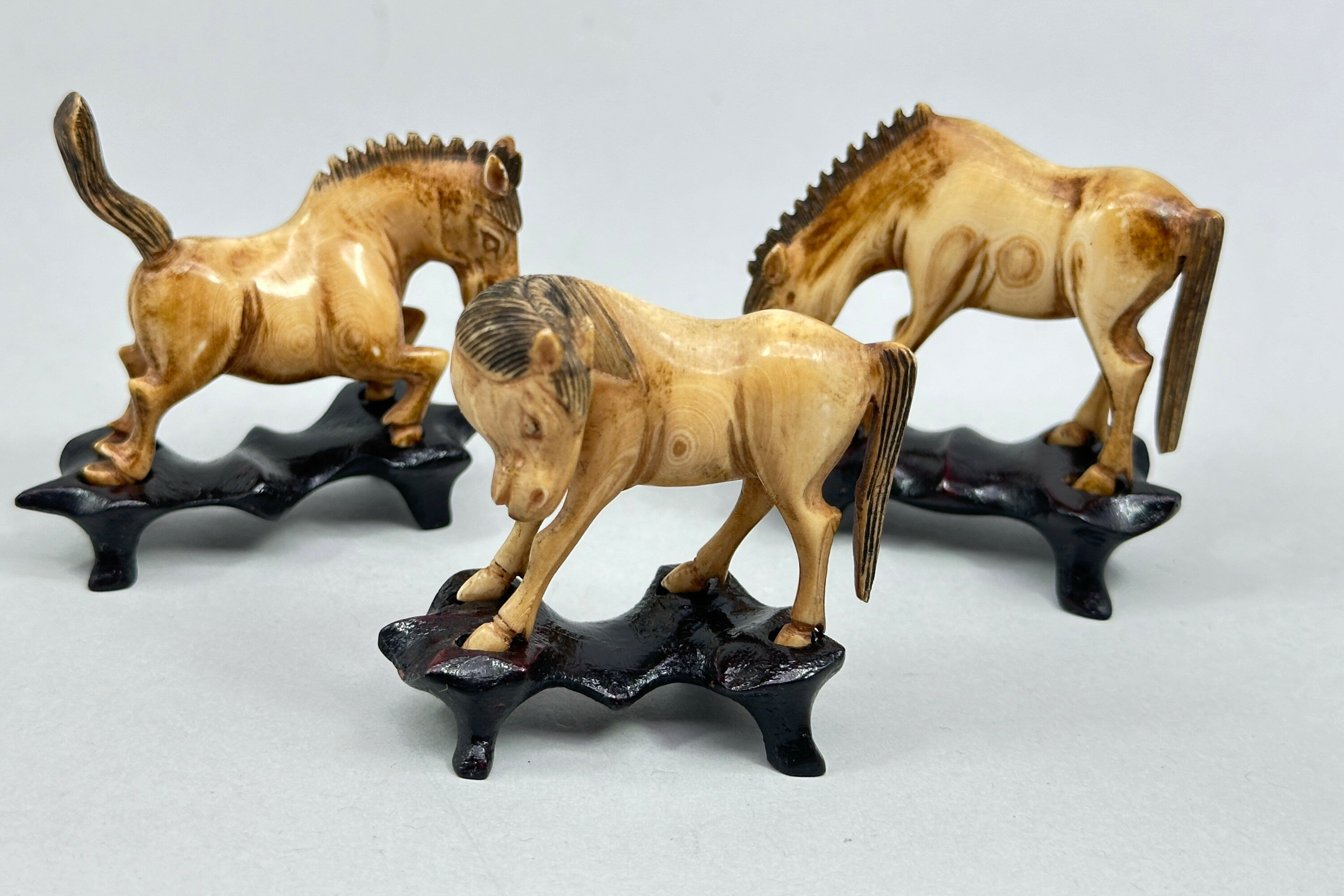
Group of Three Chinese carved bone Horses with wood stands, probably mid C20th
Price: £30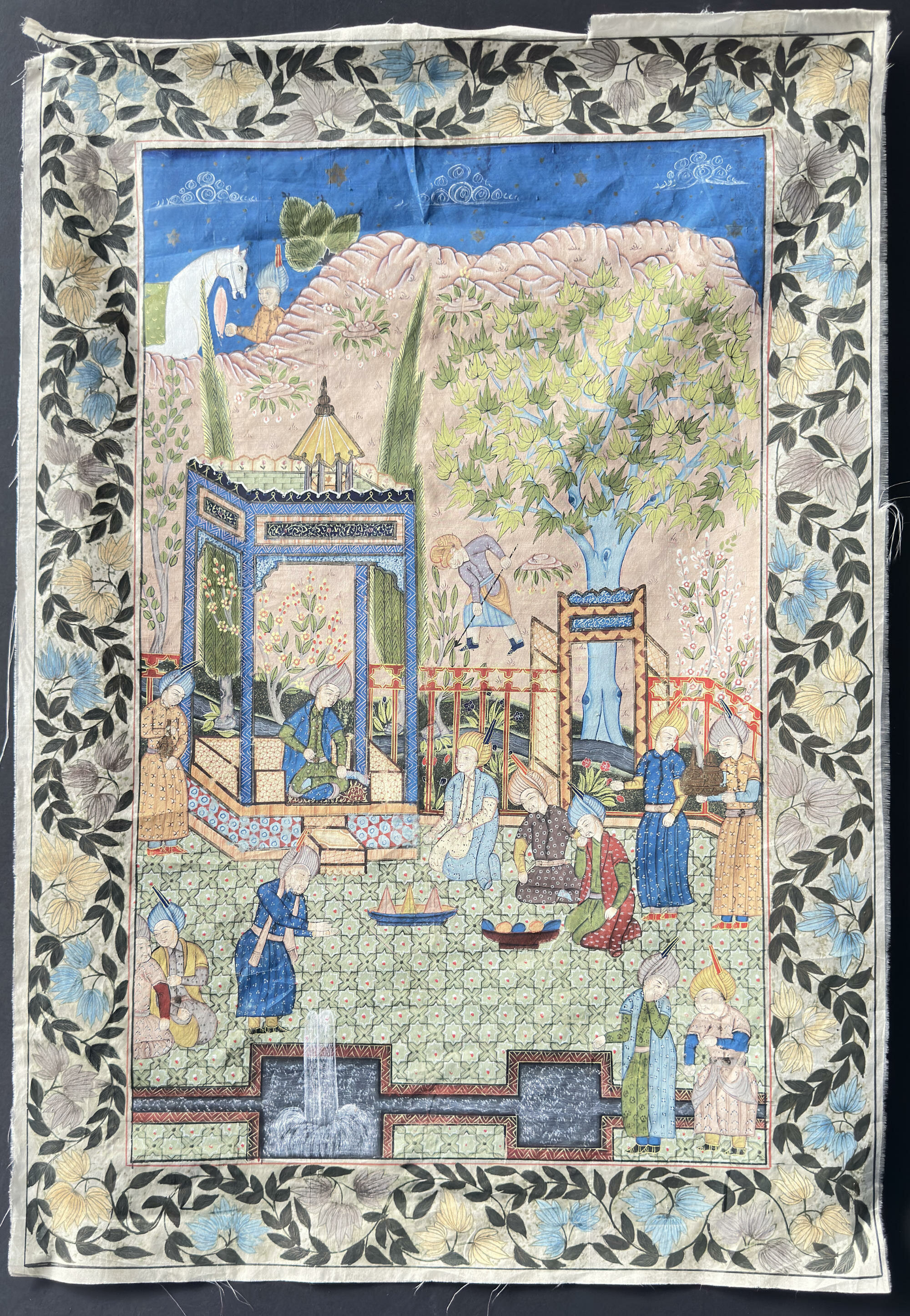
Persian Painting on Silk depicting Courtiers in a Palace Scene, C19th/C20th
Price: £75The ‘Khamsa’ (Quintet or Quinary) is the best known work of Nizami Ghanjavi (c1141 – 1209) considered the greatest romantic epic poet in Persian literature. It comprises five long narrative poems the first of which is ‘Makhzan-ol-Asrar’ (The Treasury or Storehouse of Mysteries) and contains an episode where two physicians agree to fight each other with poison: each would give the other a poison and the doctors would then attempt, by their skill, to provide an antidote. One doctor succeeds but the other has less luck and in the version of the scene mentioned above is depicted lying ill on the ground.
The Khamsa was a popular subject for lavish manuscripts illustrated with painted miniatures at the Persian and Mughal courts in later centuries. The British Museum picture mentioned above, for example, comes from a manuscript created for the Mughal Emperor Akbar in the 1590s. Scenes from these works were then copied or adapted in turn by Persian artists in the late nineteenth and early twentieth centuries which is what we have here. The quality of the execution remains high producing a highly decorative example of the best Persian work.

Japanese Arita Blue and White Bowl, first half C20th
Price: £25This ‘swirling’ pattern is sometimes found on late nineteenth century polychrome plaques. Dating here is probably later, perhaps to around 1920, in the middle of the Taisho period (1912 – 1926), but care has been taken with this piece and the mark, which unfortunately cannot be deciphered, no doubt denotes the studio which created it.

Japanese Arita Dish circa 1880
Price: £45The town of Arita in the former Hizen Province, northwestern Kyūshū island was a major cente for the production of porcelains in Japan. Best known for blue and white pieces it also produced polychrome wares as well, including the familiar imari colourings. While similar to Imari, the wider palette of colours used here is usually termed ‘Arita’ and the decorative appeal of the style is clear. This plate probably comes from an original set of five and its quality is much above average. Dating is to the Meiji era (1868 - 1912) probably around 1880.
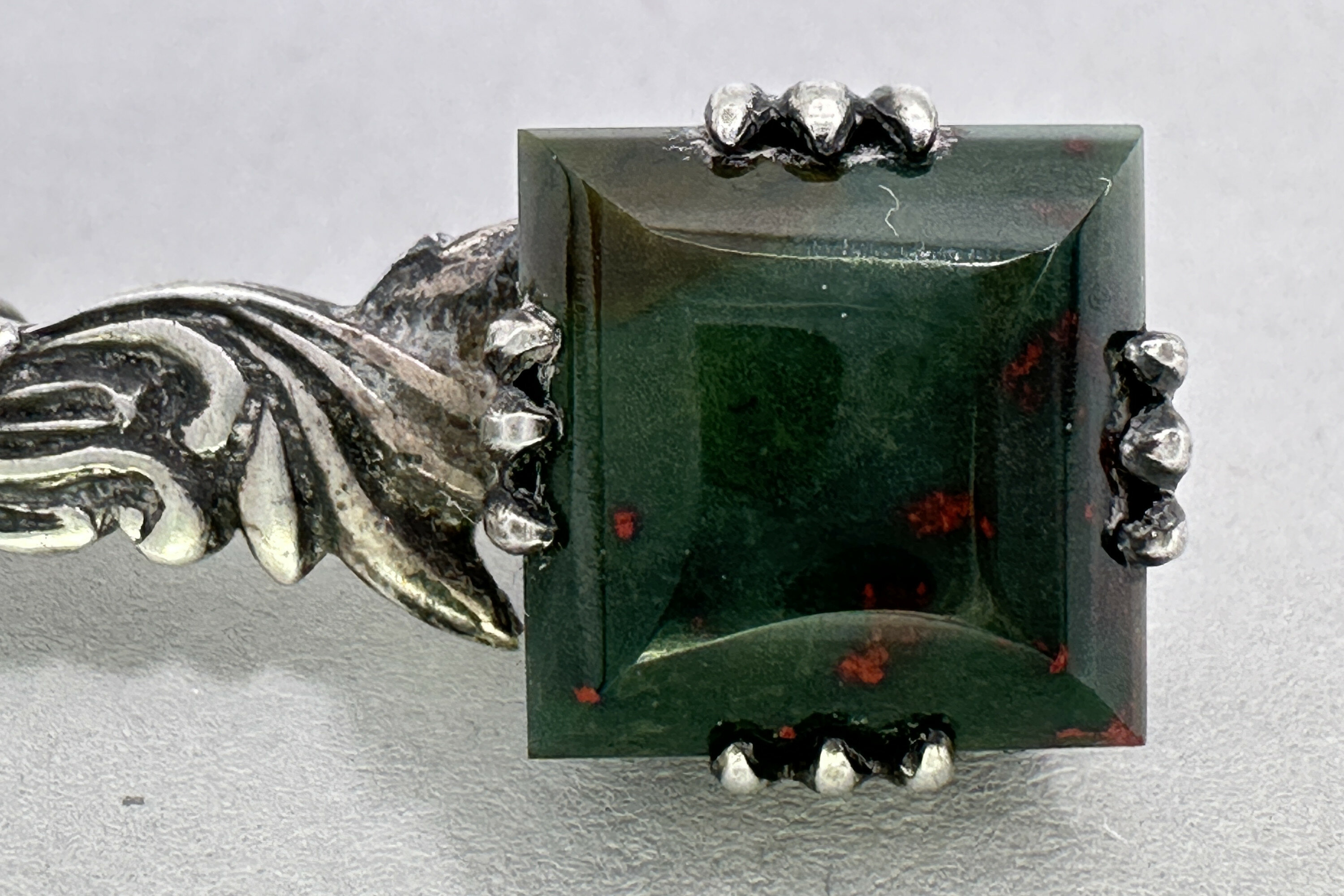
Edwardian Scottish bloodstone bar brooch c1910
Price: £30
Large round Scottish agate cloak pin c 1900
Price: £125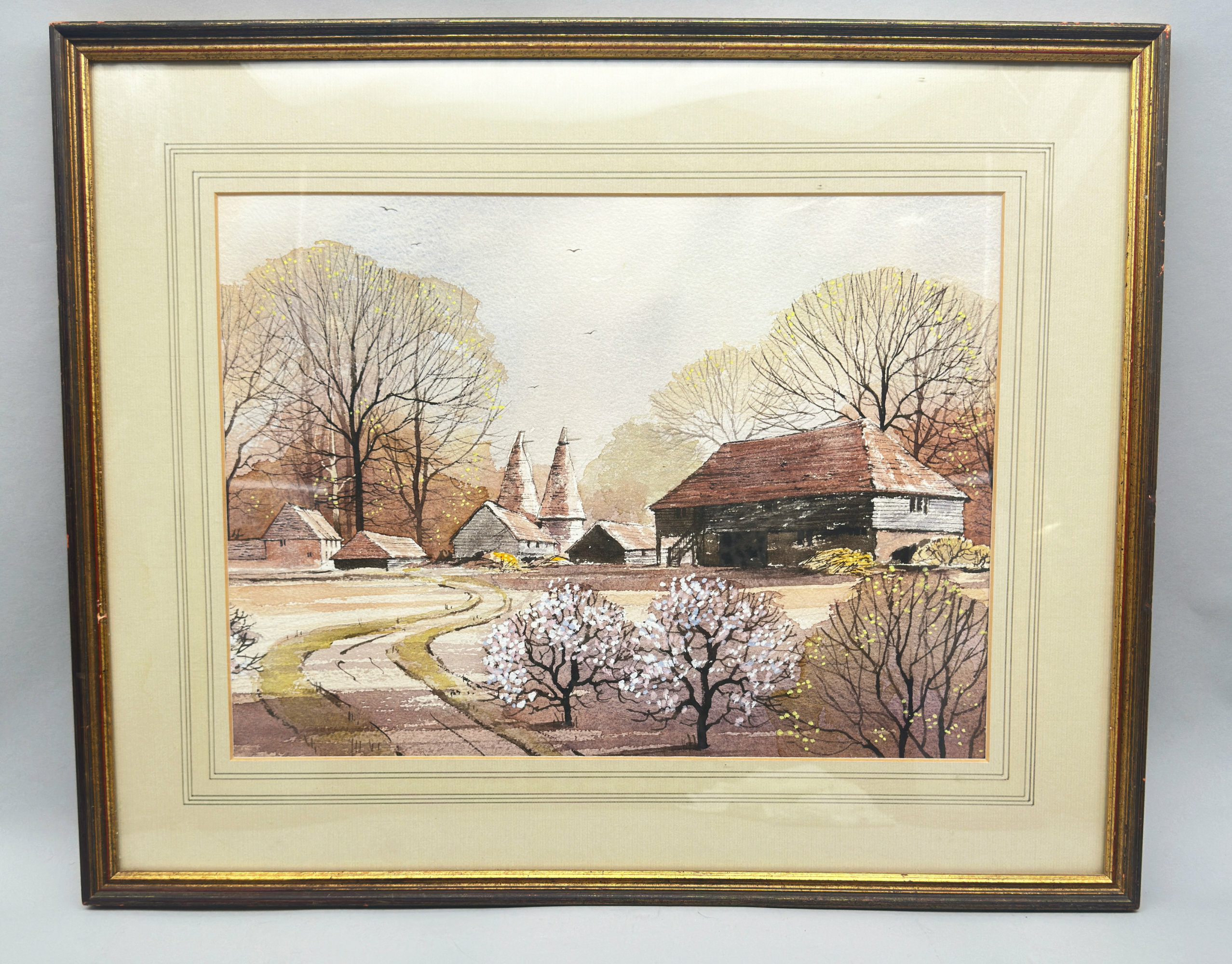
Watercolour by Elisabeth Castle, Kent Landscape Scene, framed, late C20th
Price: £45
Pair of continental style openwork border Dishes, probably Chinese C20th
Price: £20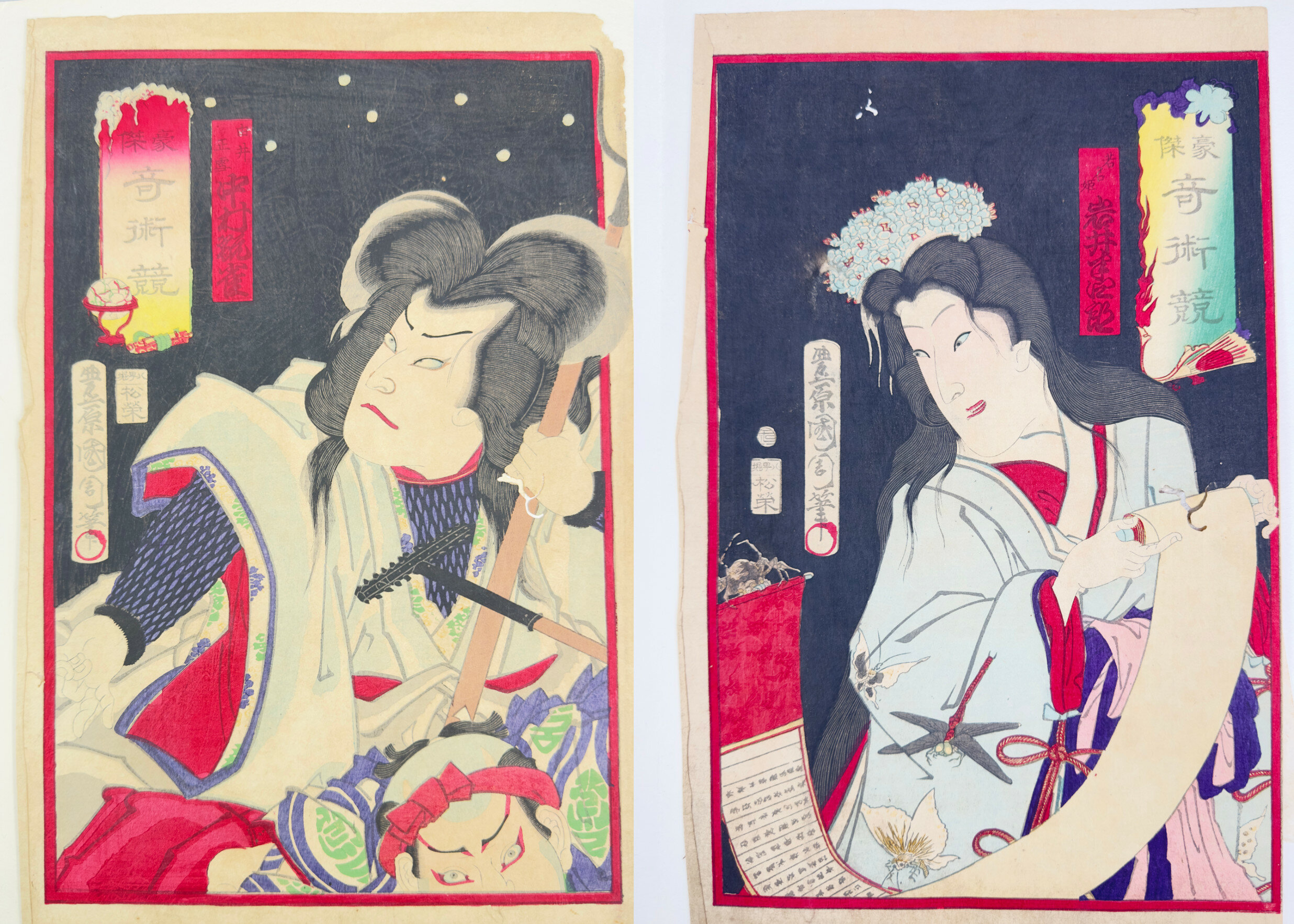
Two Japanese Woodblock Prints by Toyohara Kunichika, second half C19th
Price: £75Toyohara Kunichika achieved great fame and distinction a Japanese print artist. Born in 1835 he studied under Toyohara Chikanobu and then Utagawa Kunisada (also known as Utagawa Toyokuni III) eventually using a combination of both his teacher’s names to create his own professional one. At first he worked within Kunisada’s studio and when his teacher died in 1865 was asked to design two memorial portraits of him. The beginning of the Meiji era (1868-1912) saw Kunichika issuing his own prints, often in themed series and he became known in particular for his portrayals of kabuki actors, indeed he regarded the theatre as almost his second home. A contemporary once wrote ‘"Print designing, theatre and drinking were his life and for him that was enough.’ He achieved great fame and was rated as one of the masters of woodblock printing. Contemporary observers noted Kunichika's skilful use of colour in his actor prints, but he was also criticized for some of his choices for unlike most artists of the period, he made use of strong reds and dark purples rather than the softer colours used previously, exploiting the recent import of new dyes from Germany. Red, for the Japanese, meant progress and enlightenment so there was probably hidden meaning here. Eventually Kunichika’s lifestyle took its toll and he died in poor health, aged 65. It had been a Japanese custom for people of high cultural standing to write a poem before death. Kunichika's own, inscribed on his grave, reads ‘Since I am tired of painting portraits of people of this world, I will paint portraits of the King of hell and the devils.’ For many years his prints fell out of favour but interest has now revived and Kunichika is regarded as one of the eminently collectible Japanese artists in the field and these two prints are an excellent example of his work.
Each print is accompanied by a printed text on fine paper which presumably describes the character represented. The second of them is accompanied by two sheets one of which has become attached in one small place to the print itself but could probably fairly easily be detached by a restorer. In general there are some typical signs of age with minor losses (illustrated), tears and folding but the colours remain bright and fresh.

A very finely carved white pendent on traditional silk cord, Modern
Price: £25
Fun lot of two Indian silver elephant brooches c1930
Price: £45
Taxco collar necklace by Rubi Ramirez c1950
Price: £350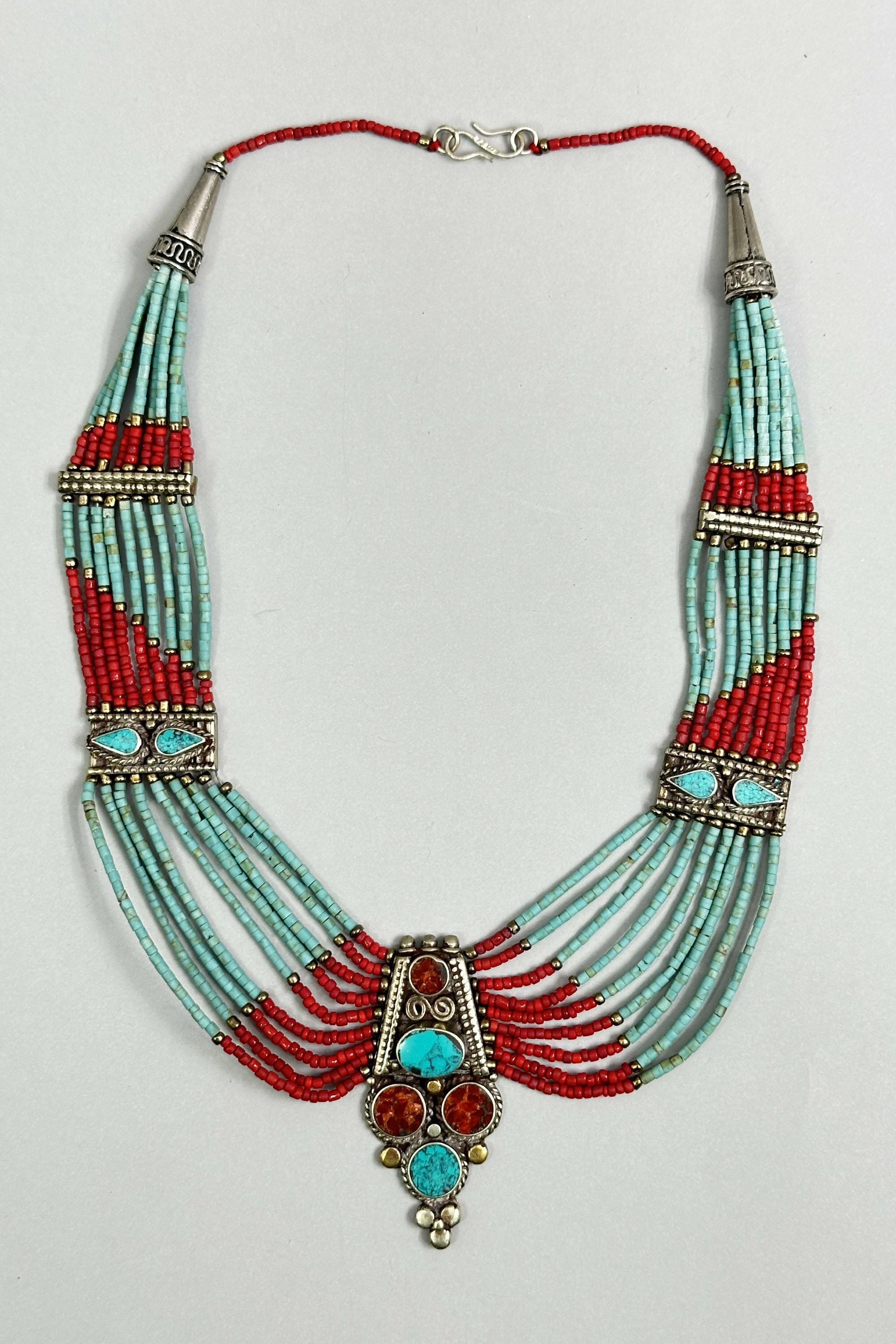
Very fine Berber North African necklace c1950
Price: £45
Amber buddha carving on egg yolk amber and lapis necklace
Price: £175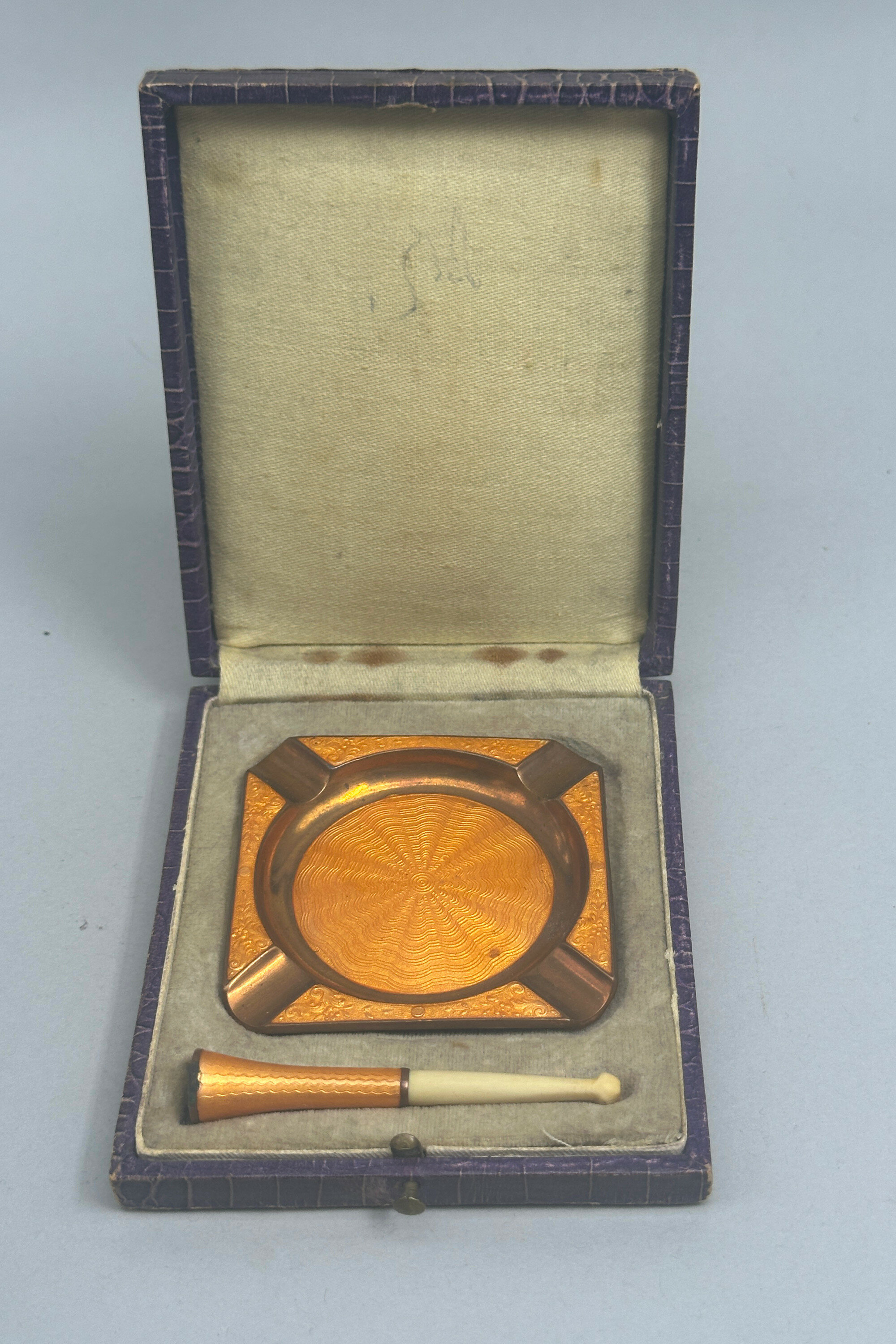
Art Deco Guilloché Copper Ash Tray and matching Cigarette Holder, boxed, c1930
Price: £35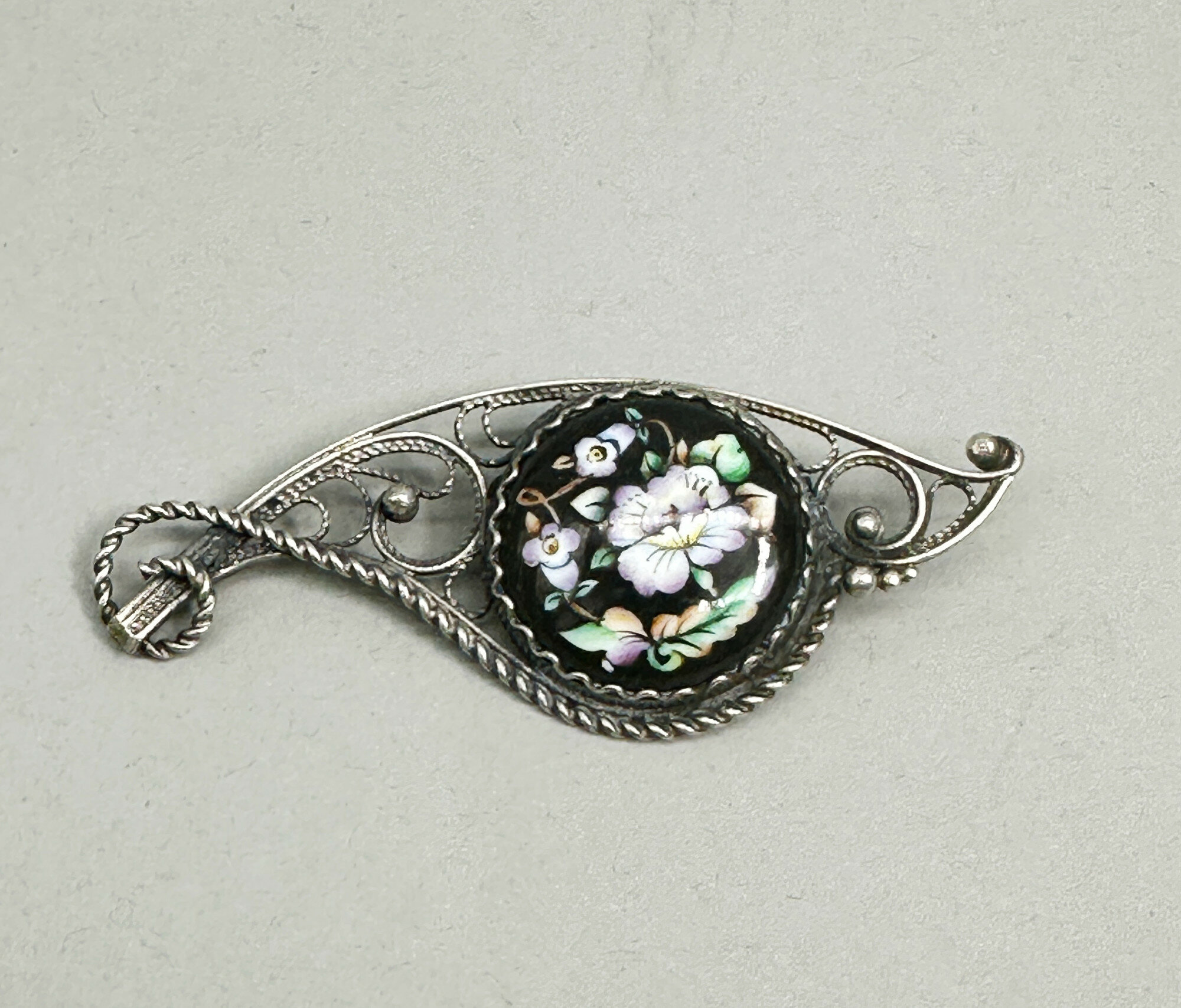
Russian Enamel Brooch, probably Rostov Finift, mid C20th
Price: £20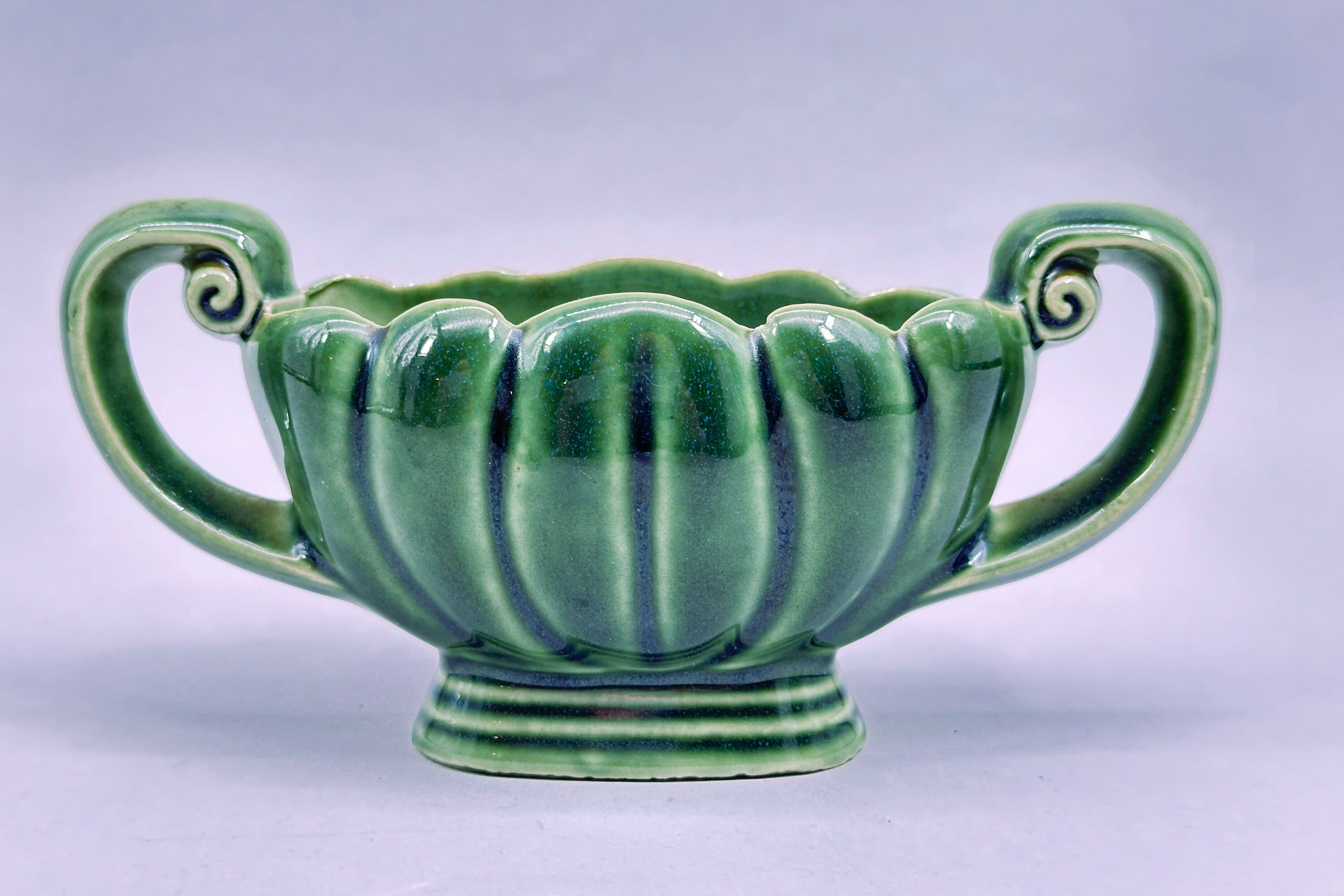
Wade green glazed Posy Vase, 1950s
Price: £20Wade Ceramics Ltd was a manufacturer of porcelain and earthenware, headquartered in Stoke-on-Trent, England. Founded in 1867, it was run by various members of the Wade family until the death of George Anthony Wade in 1987 after which there was a succession of management buyouts. Despite substantial investment in 2009, the firm eventually went into administration in 2022. Wade produced a wide variety of ceramics, including the well known Wade Whimsies animal figurines.
This vase was designed to hold a small bunch of flowers and was produced in a variety of sizes and colours, green being the most common. The form has an almost ‘neo classical’ feel but the piece dates to the 1950s when this particular format of the factory mark was used.

Paris tourist novelty bracelet c1950
Price: £35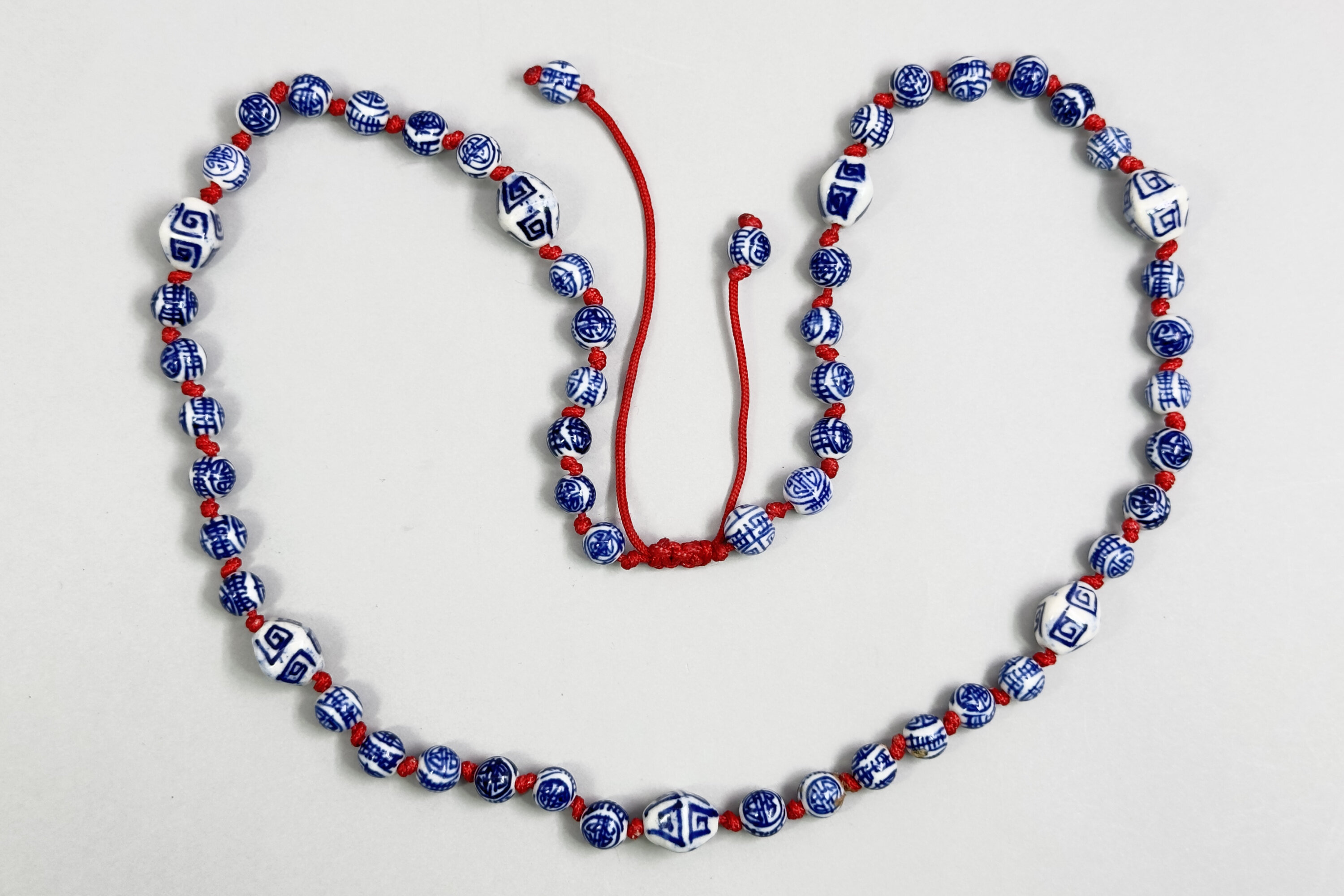
Chinese Blue and white ceramic beads, C20th
Price: £15PLEASE NOTE THAT THERE IS FREE UK SHIPPING ON THIS ITEM. For international buyers the shipping cost will be reduced by the UK shipping cost, so don't worry if you are outside the UK, you still receive this benefit!

Large graduated necklace of nut carving beads, 1930s
Price: £25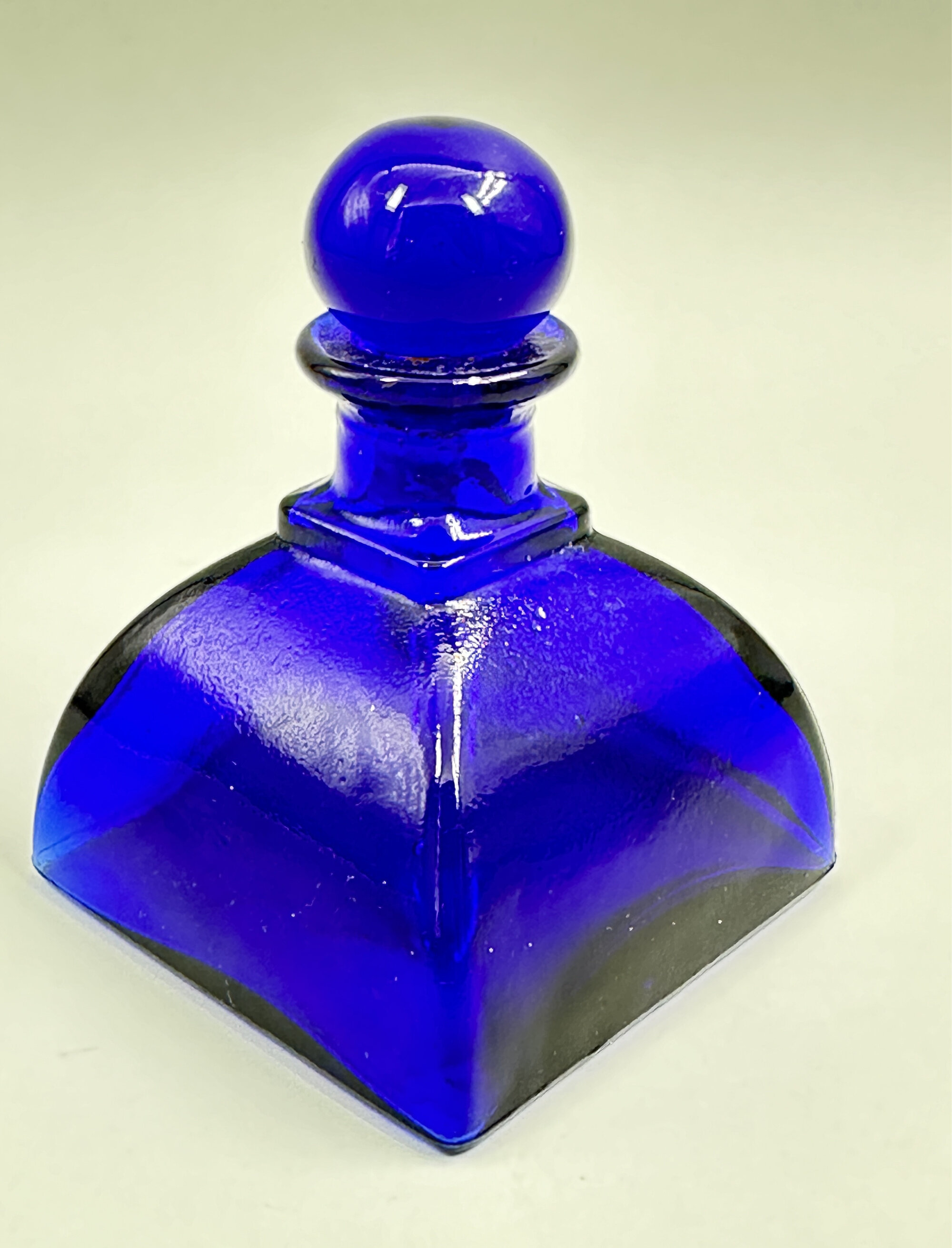
Vintage Cobalt Blue Glass Perfume Bottle and Stopper, 1930s
Price: £25

Pair of Japanese Shaped Saucer Dishes, Maruku China, 1940s
Price: £25The Maruku factory seems to have operated in Japan after the second world war producing modest but good quality wares for export, rather in the style of Noritake pieces. Usually their pieces are marked in addition ‘Made in Japan’ but for some reason not here. The forms, colourings and designs here are quite unusual and while modest, these are good quality decorative items suitable for a contemporary interior.
PLEASE NOTE THAT THERE IS FREE UK SHIPPING ON THIS ITEM. For international buyers the shipping cost will be reduced by the UK shipping cost, so don't worry if you are outside the UK, you still receive this benefit!
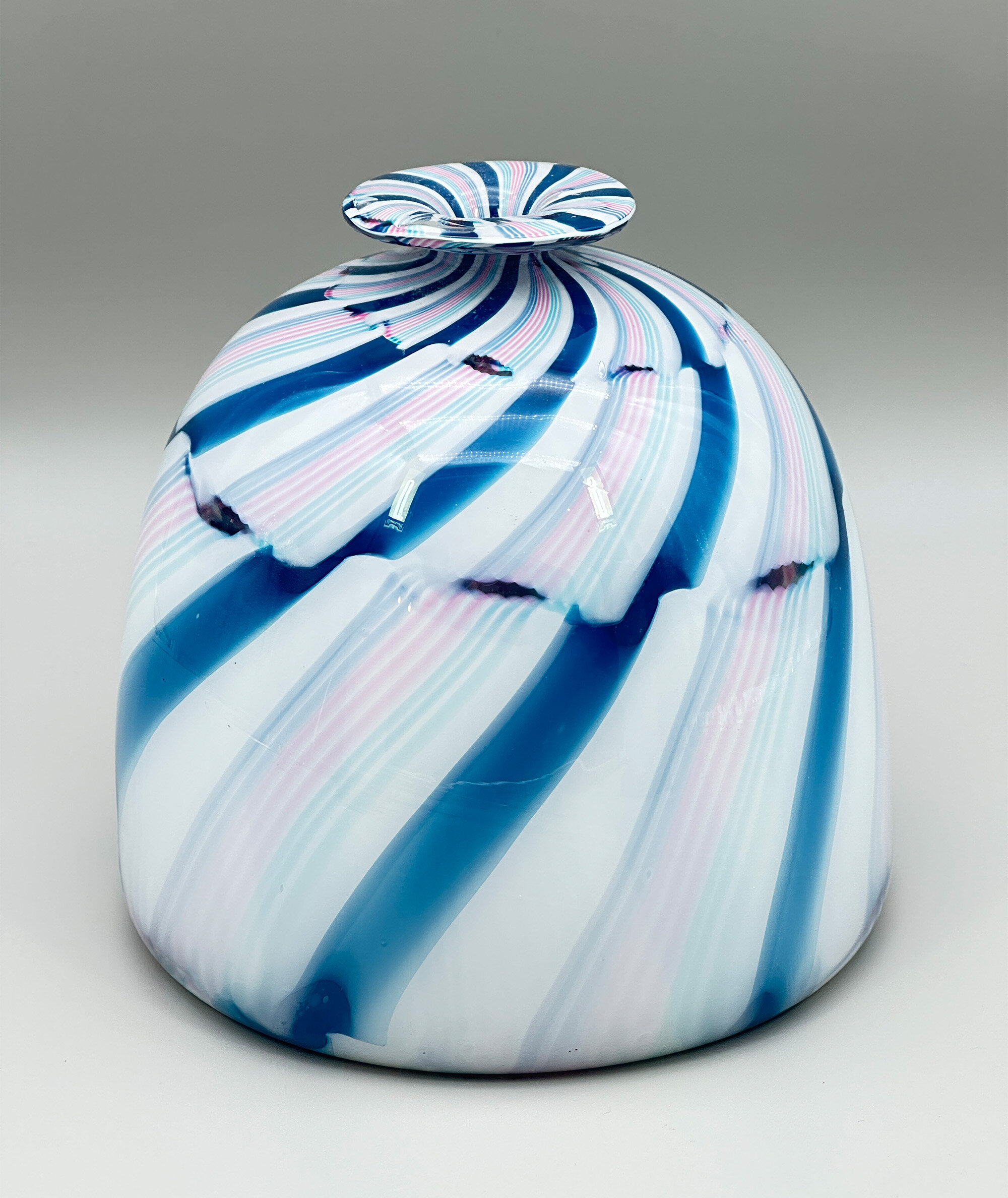
Beehive form glass vase with a swirl design, probably by Charlie Meaker, late C20th
Estimate: £60 – 80
Victorian Rolled Gold Necklace with Pendants, late C19th
Price: £45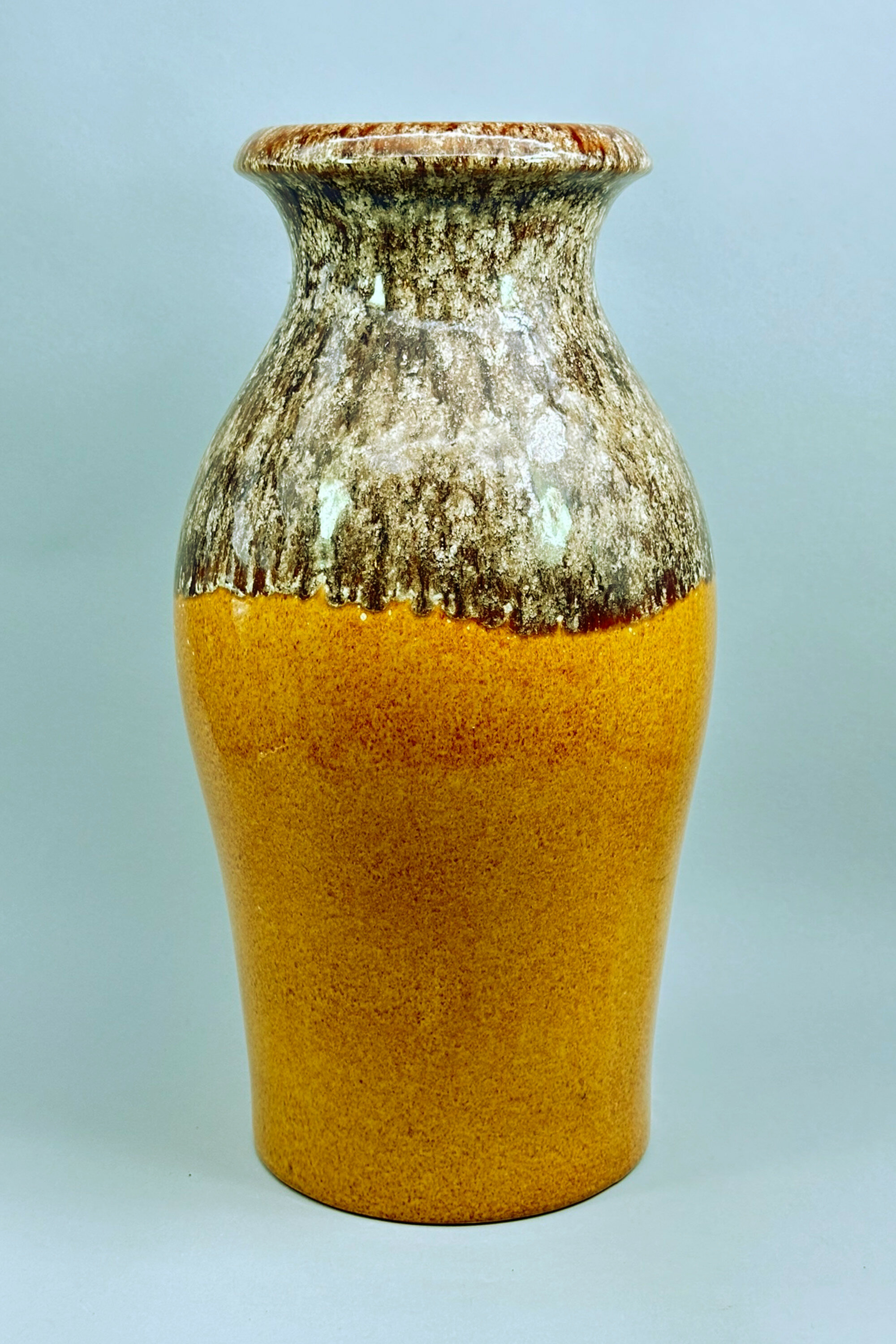
West German ceramic Vase, Scheurich, No 290-40, 1960s
Price: £55Although not marked as such, this vase has all the hallmarks of the firm Scheurich Keramik which started production in 1954, rather later than most of its competitors, but soon became the largest producer of commercial art pottery in Germany. Their pieces rarely carried the factory name but usually the model number followed by the height in centimetres with ‘W.Germany’ below, as here. Scheurich were well known for producing a wide variety of pieces with variegated, almost experimental glazes and this vase is yet another successful example of their work, the simple lines of form combining with a more austere selection of glaze effects than found in some of their other pieces. Dating is to the 1960s.
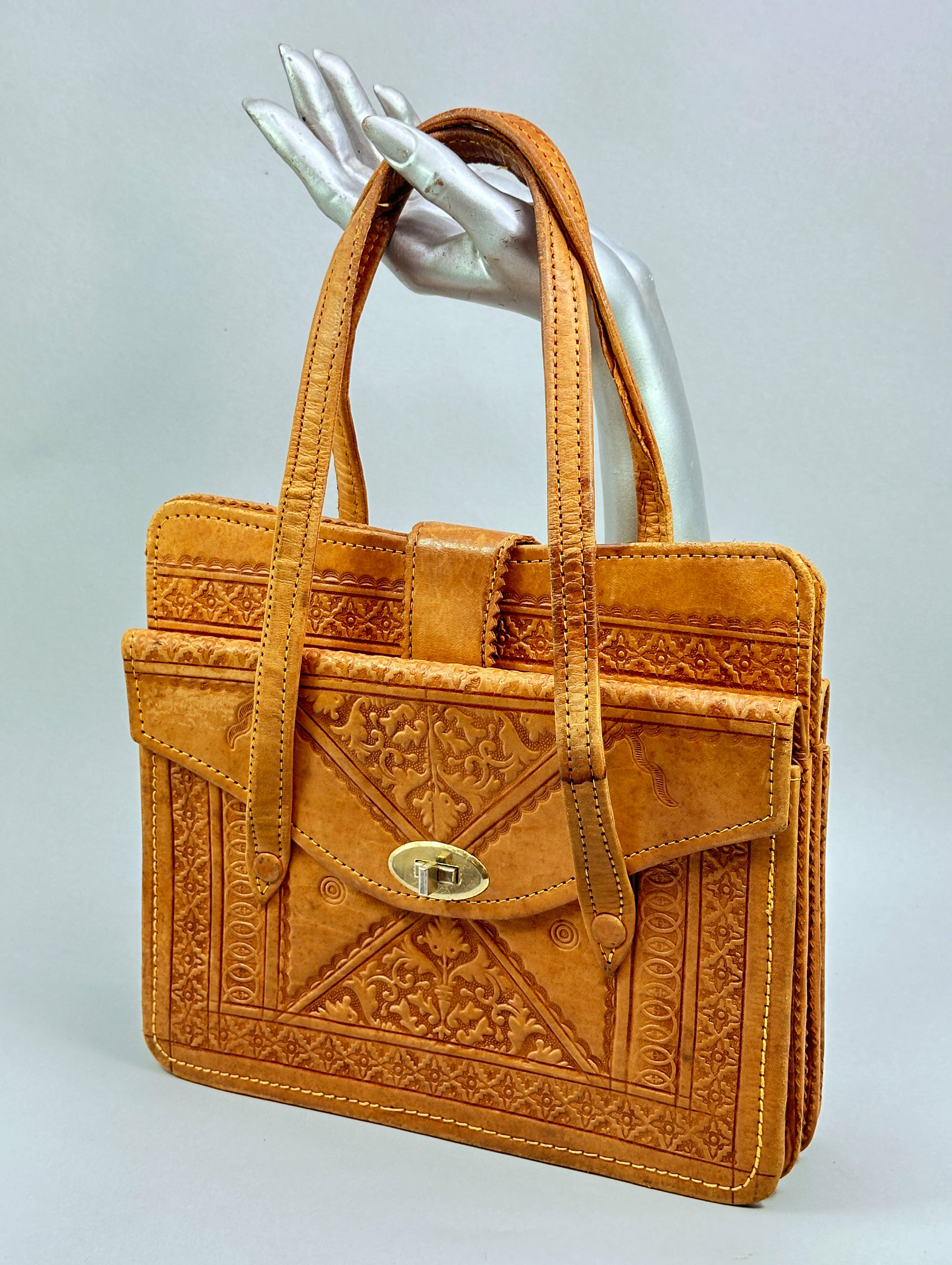
Moroccan tooled leather bag c1960
Price: £65
Art Deco Python Clutch
Price: £85
Outstanding Suede Lanvin Clutch in original box 1950s
Price: £250
Glossy brown crocodile handbag 1960s
Price: £65
Small suede handbag, England 1940s
Price: £25PLEASE NOTE THAT THERE IS FREE UK SHIPPING ON THIS ITEM. For international buyers the shipping cost will be reduced by the UK shipping cost, so don't worry if you are outside the UK, you still receive this benefit!
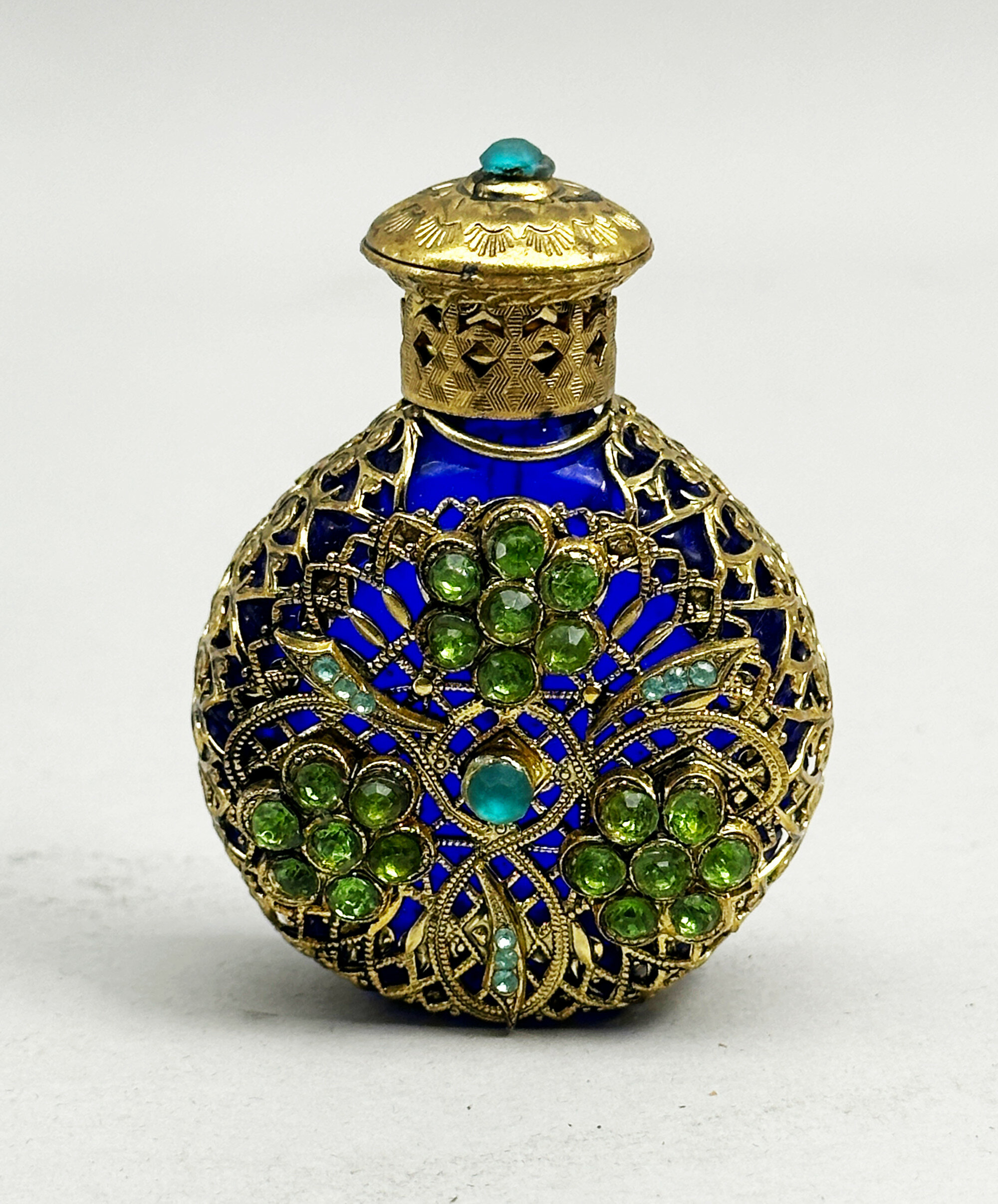
Czech rhinestone jewelled glass metal filigree Perfume Bottle and Stopper, C20th
Price: £45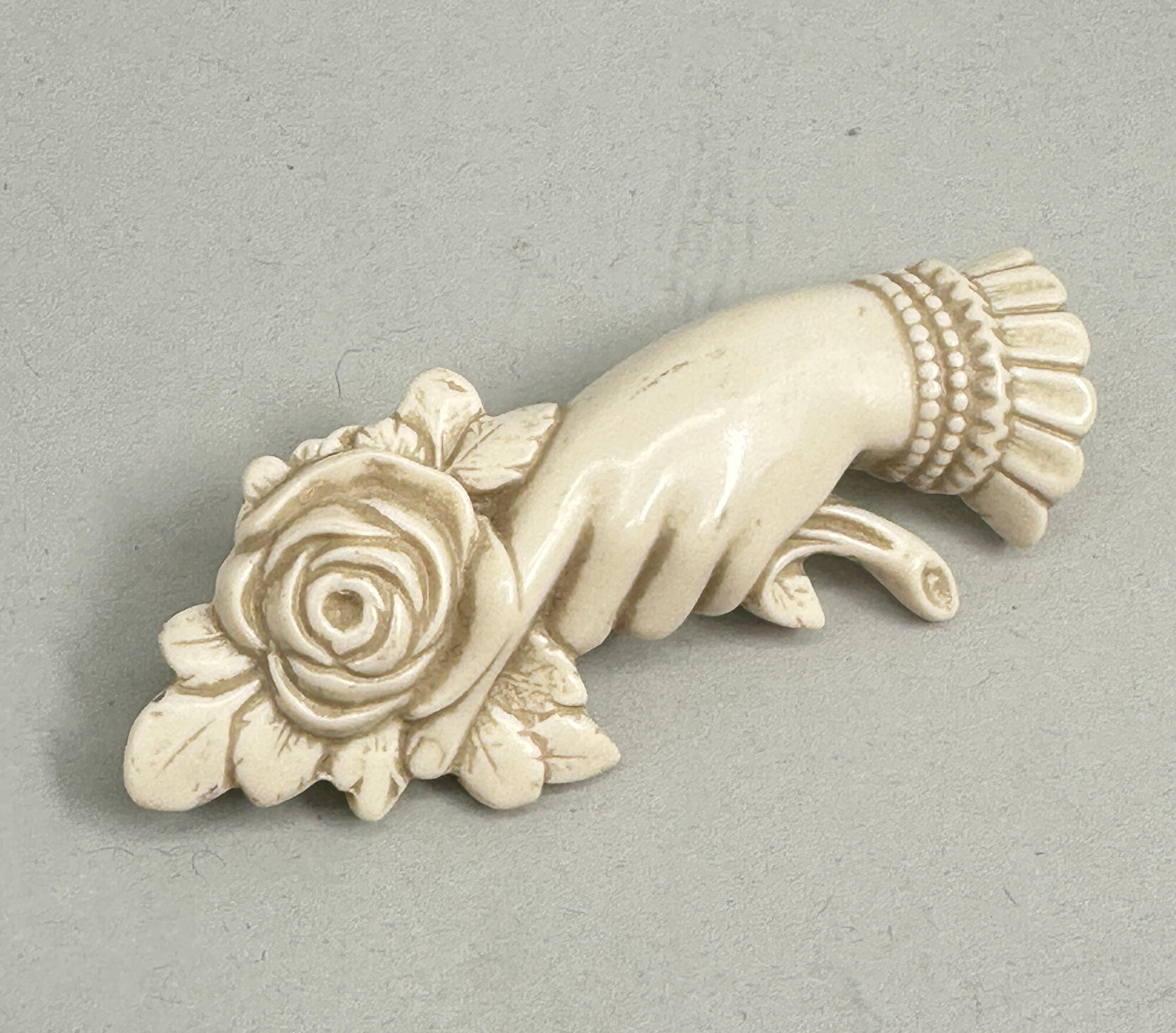
Bakelite Ivorine Mourning Brooch, British c1930
Price: £25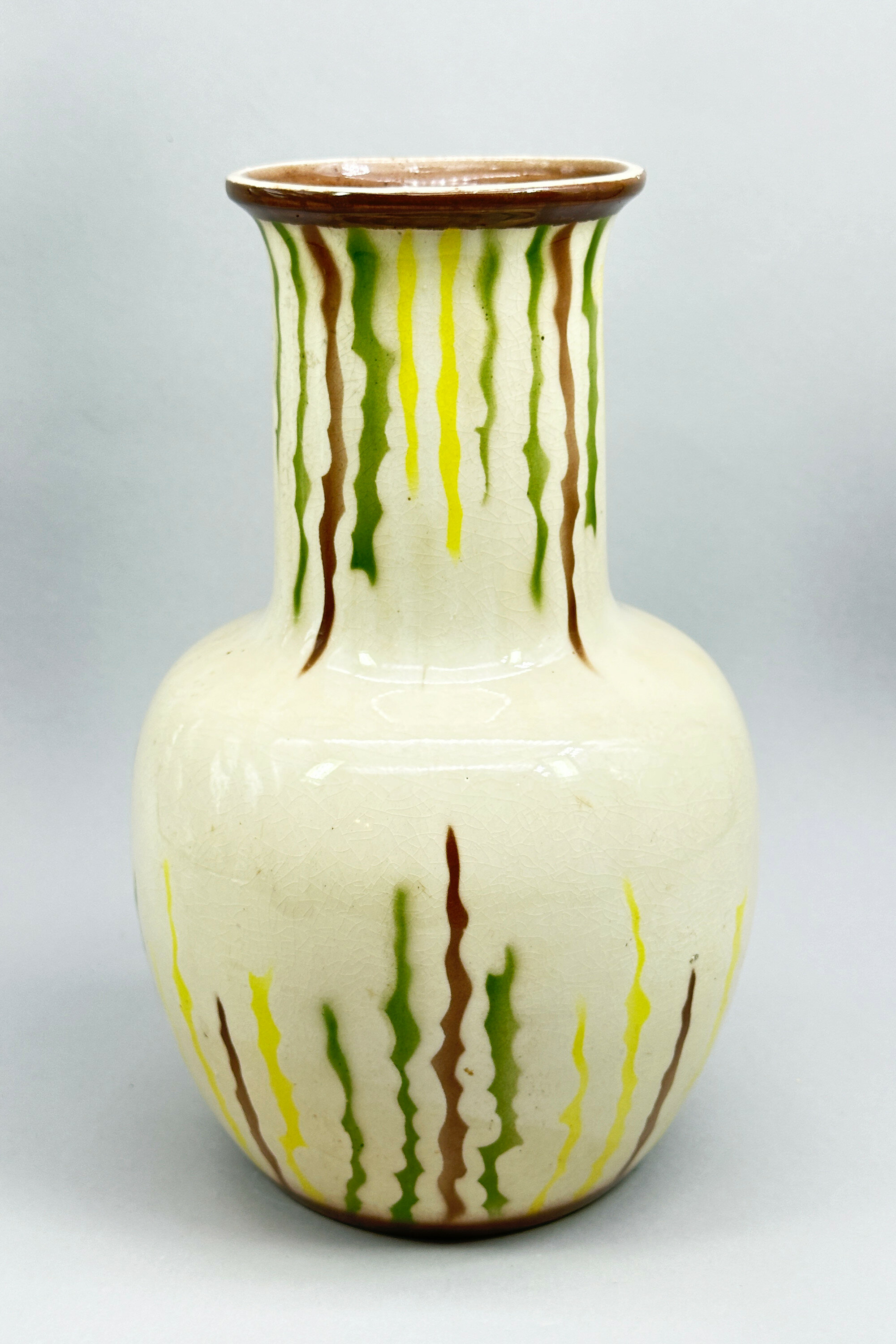
Art Deco style Vase signed E.Radford, mid C20th
Price: £75There were, in fact, two craftsmen working in the C20th British pottery industry with the name Edward Radford, father and son. Radford senior worked for Pilkington’s Royal Lancastrian Pottery in Manchester from 1903 until his retirement in 1936, acting as their main thrower. Radford junior joined his Father in 1905, but the First World War intervened, in which he won a Military Cross for his actions at Passchendaele in 1917 and afterwards he settled in Stoke on Trent, the heart of Britain’s pottery industry. An association developed with H.J.Wood’s Alexandra Pottery in Burslem who produced a range of wares bearing his name in the 1930s, although Radford himself may have acted as more a salesman than the designer. Production continued after the war and even after Radford’s retirement in 1948. The form of mark used here implies the later dating but may have been used earlier. The impressed figures indicate model number. Even if this vase is post war, the style is emphatically that of pre war Art Deco period with the simple lines of the form accompanied by semi abstract decoration vaguely reminiscent of Clarice Cliff combining to produce a piece of timeless attraction.

Triple strand of amber Bakelite beads, British 1930s
Price: £750
West German Bay Keramik Pitcher with stylised floral designs, late C20th
Price: £55Founded by Eduard Bay in the 1930s and based in Ransbach Baumbach in the heart of the main West German pottery producing region, Bay Keramik grew to be one of the most prolific producers of ceramics in the ‘West German’ style and continued production into the 1990s. This piece retains its original paper label and the format of this allows dating to the 1970s/1980s. The jug has almost a slightly rustic feel and recalls much earlier German ceramic items. The numbers on the base indicate the form number but it has not been possible to identify this.
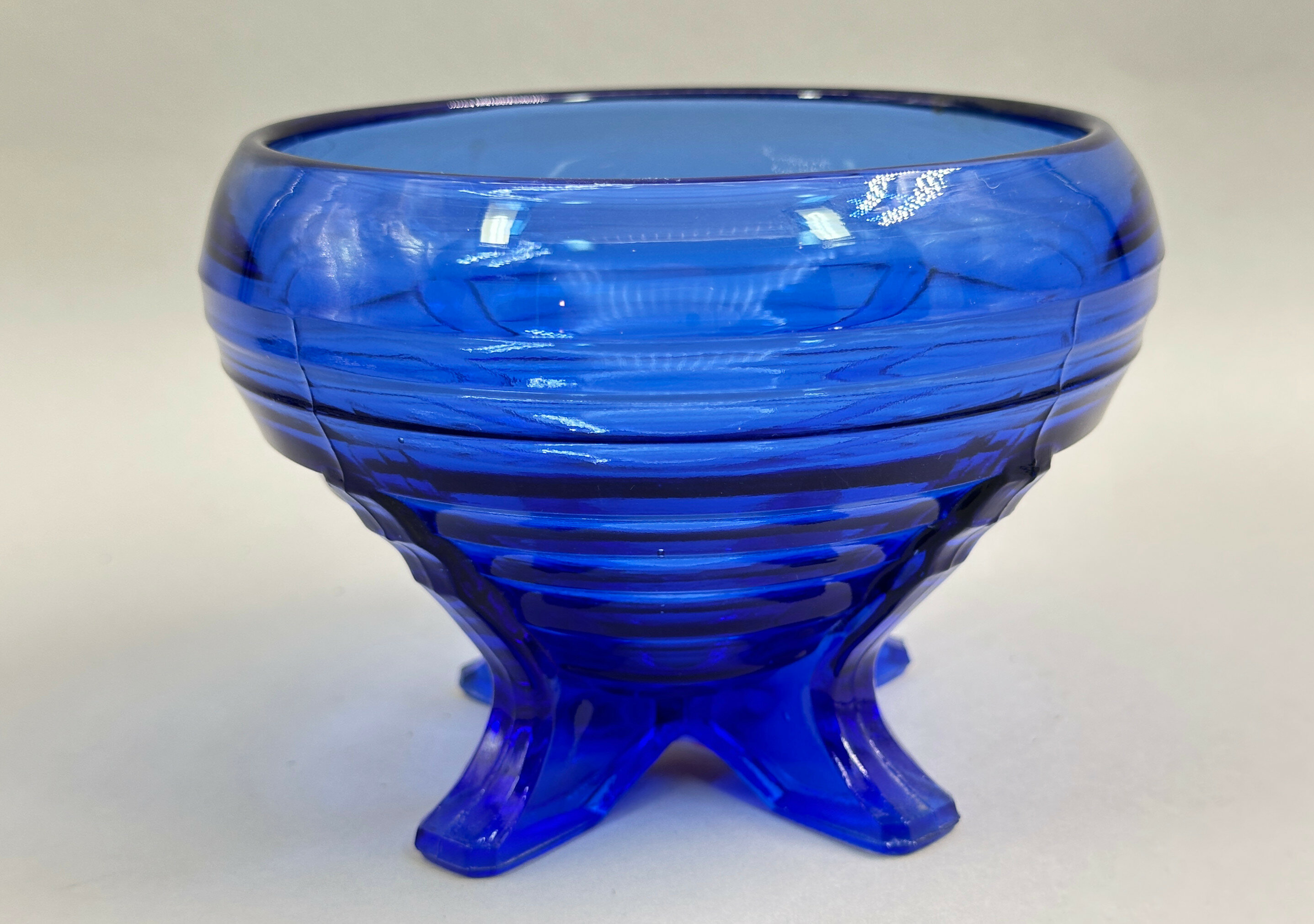
Sowerby Blue Glass Footed Bowl, 1930s/1940s
Price: £25The Sowerby family came from the North West of England near Carlisle and settled in Gateshead in the late eighteenth century. The firm Sowerby Glassworks is known from 1807 onwards and continued production until 1972, concentrating on pressed glass. Catalogues of their wares still exist and they produced pieces in a wide variety of styles and shapes which retain their popularity today.

Yellow ground Bursley Ware Dragon Bowl by Frederick Rhead, circa 1920
Price: £55

West German Keramik Jug with drip glaze, second half C20th
Price: £45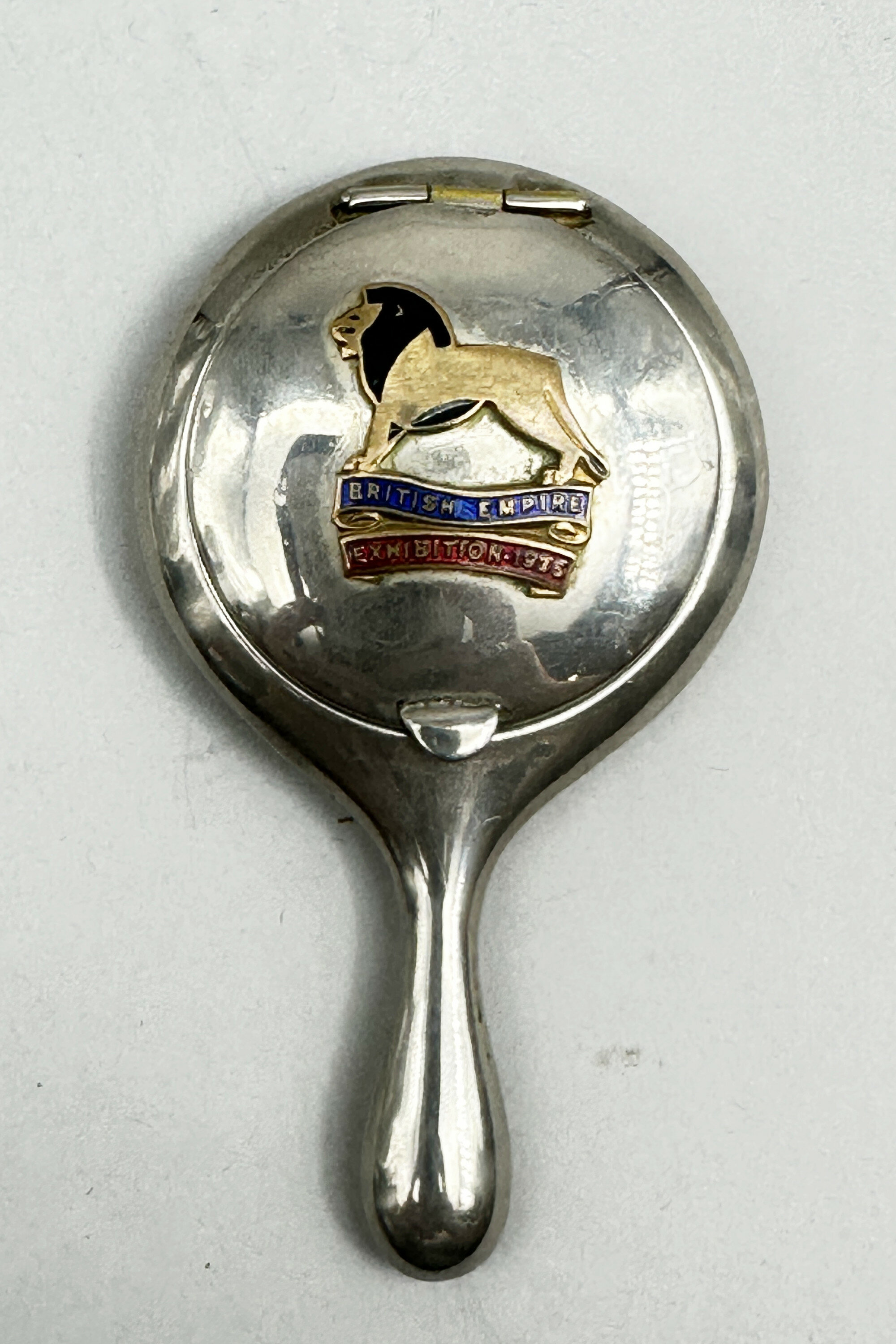
Powder Compact, British Empire Exhibition (1924-1925), dated 1925
Price: £45Souvenirs and medals were produced, amongst which were silver plated powder compacts as here. The round container for the powder has a hinged lid revealing the powder well below, originally fitted with a mauve ribbon tasseled powder puff, and a mirror above. On the surface of the lid, which has a tab for lifting, is a stylised brass lion, a symbol of the British Empire, vitreous enameled in black, red and blue with the wording ‘British Empire Exhibition 1925 ’ There is a short rounded handle and the back has an engraved mark ‘Rd [registered] 689177’ for the patent number. While many were doubtless made (and there is another version with a more slender handle, with a ring at the end, and the background colourings of the lettering reversed) few of these compacts seem to have survived making this a desirable addition to a collection of British memorabilia.
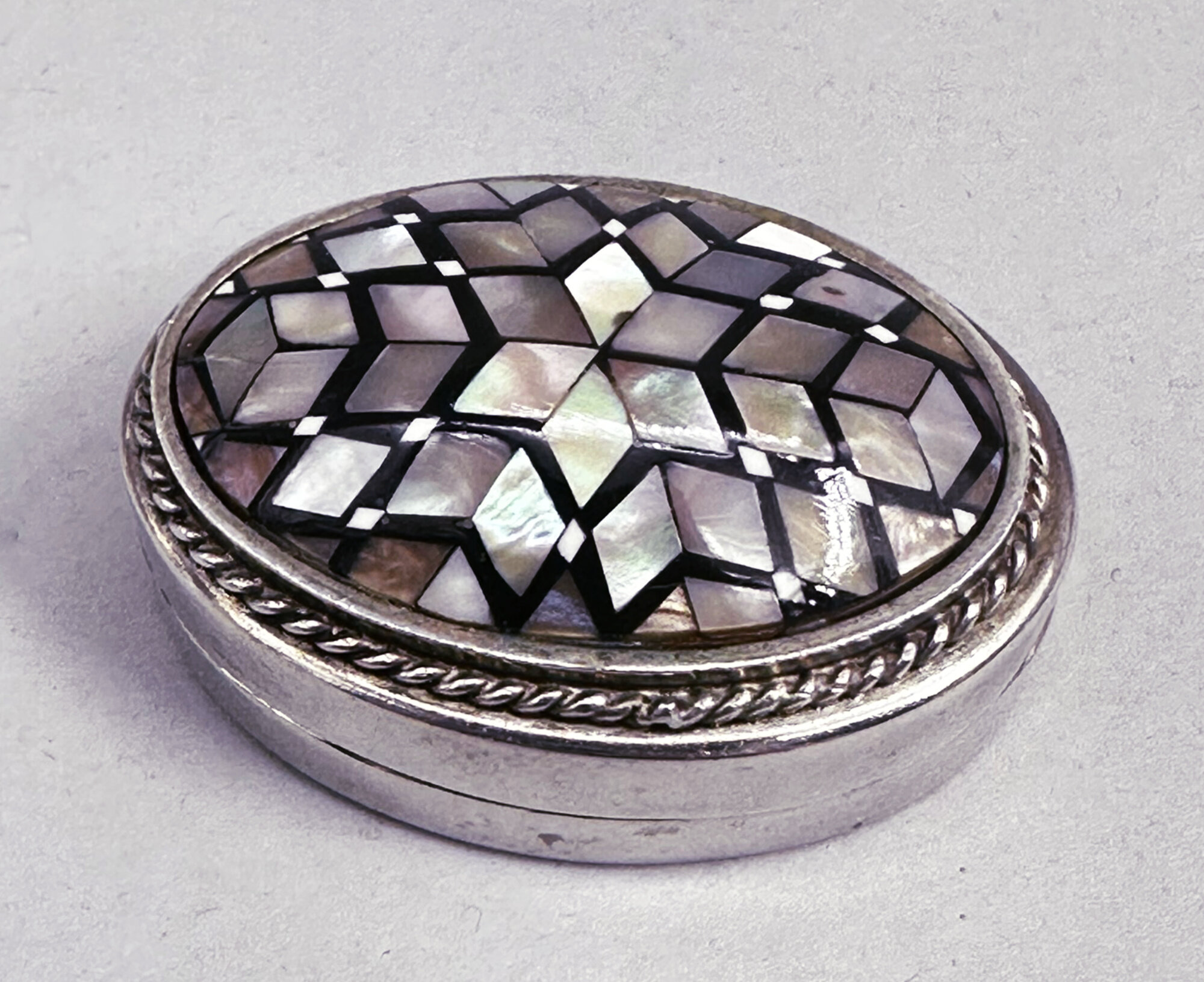
Egyptian Silver Pill Box with Mother of Pearl Inlay, marked, second half C20th
Price: £45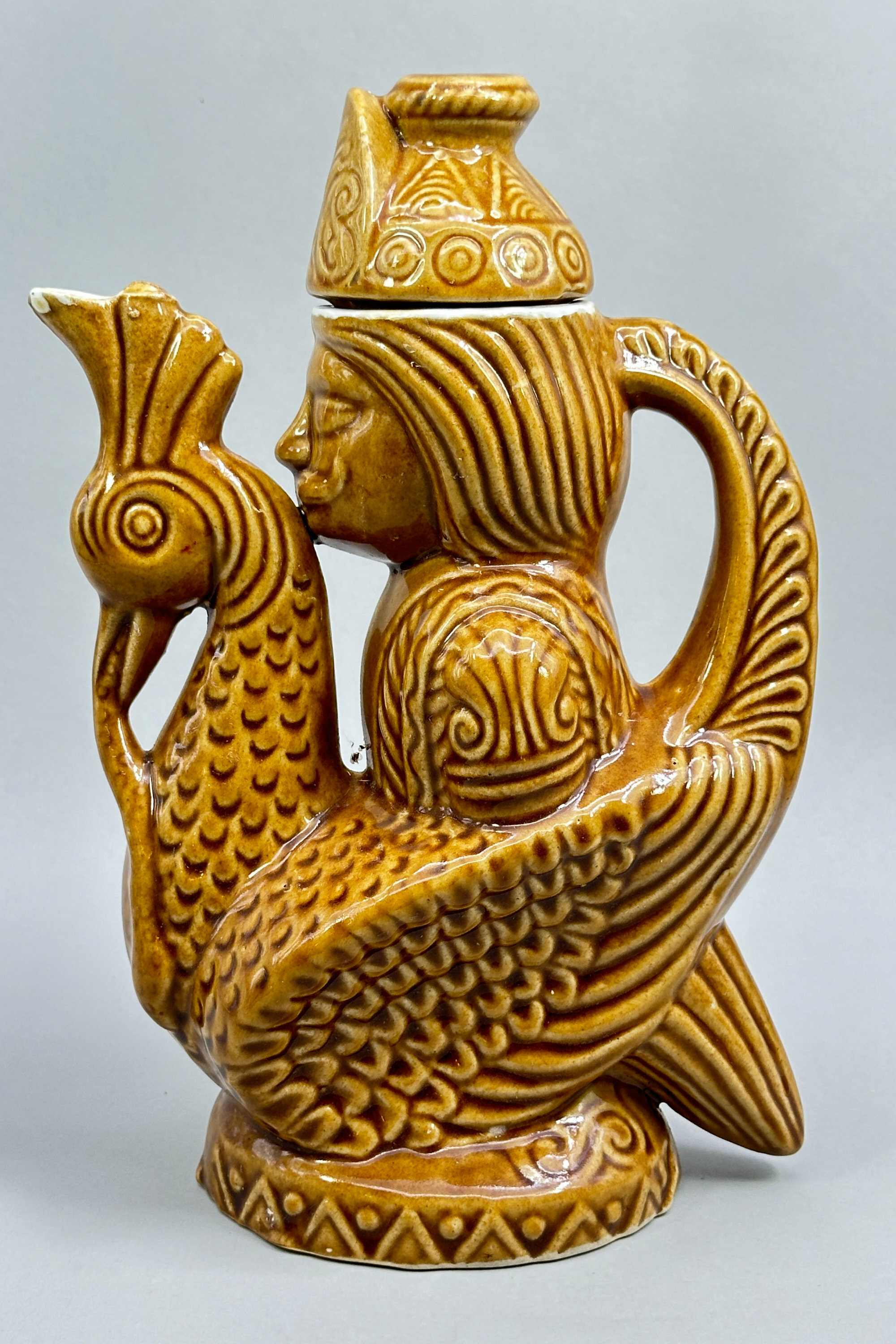
Bird form ewer with cover, possibly Russian c1960
Price: £45
African Carved Wood Figure of a Lady, probably mid C20th
Price: £25
Victorian ladies watch chain c1900
Price: £40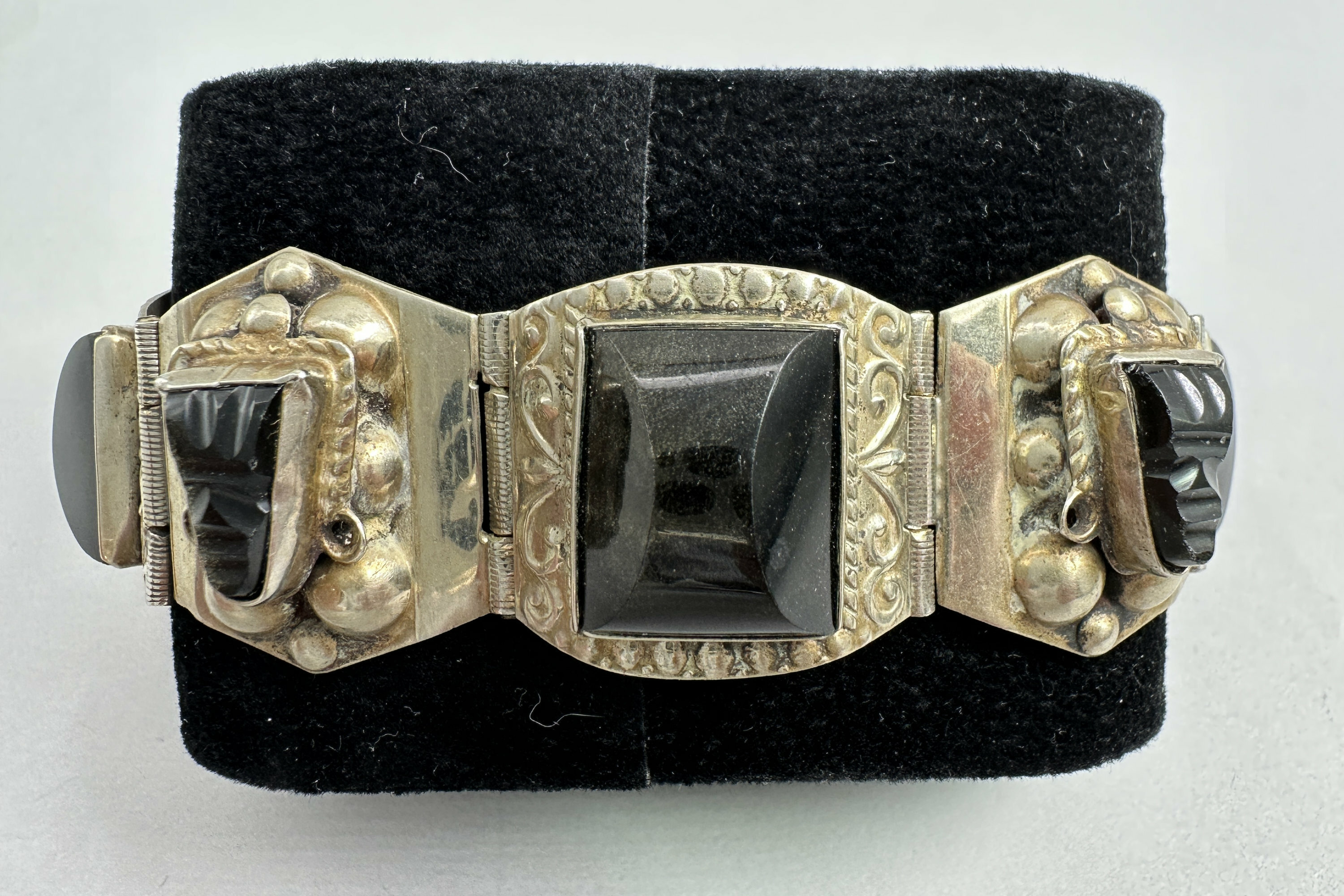
Taxco bracelet set with carved obsidian stones c1950
Price: £55
Fun vintage jade necklace with hook and ring closure c1980
Price: £25
Druzy Quartz and Onyx panel Bracelet, c1940
Price: £125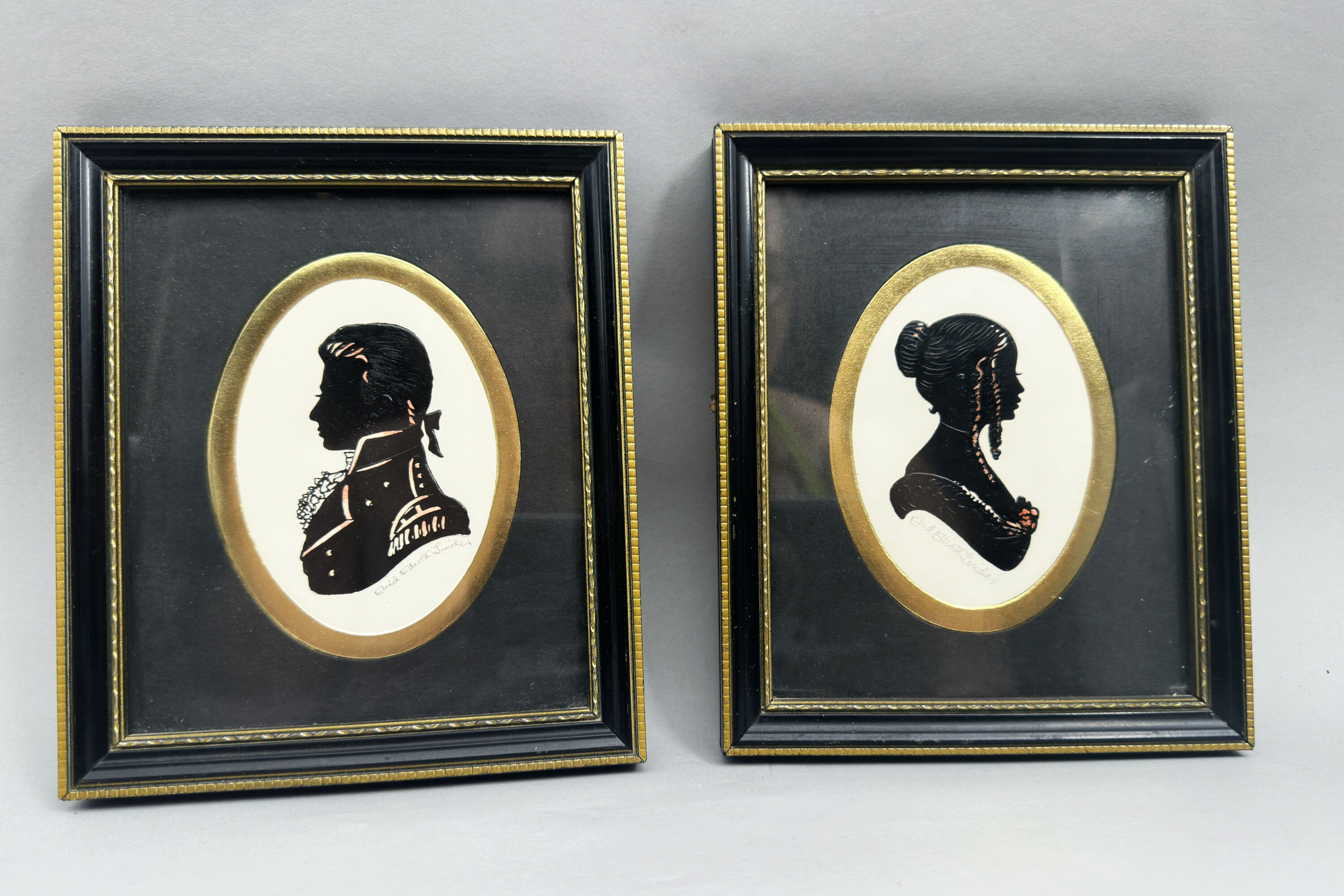
Pair of Silhouette Portraits by Enid Elliot Linder, framed, late C20th
Price: £25Known first as ‘profiles’ or ‘shades’ silhouettes became a common form of portraiture before the development of photography but continued to be made well after and indeed into the C20th. This pair of portrait heads, two from a series of twenty according to the label on the reverse, were produced in a studio set up by Enid Elliot Linder in the 1970s. Starting in a room at the back of a house in Babbacombe, Enid Linder, an artist with a great talent for painting silhouettes, began production in 1972 and, within the space of a few months, helped by her husband and four assistants was producing 500 pictures a week, necessitating a move to larger premises on the Teignmouth Road. By 1980, the ‘Pennyfarthing Galleries’, as they had become known, had sold an estimated 150,000 to 200,000 pictures all around the world. All were all produced at the Teignmouth Road premises, and checked and signed in pencil by the artist. Various series were produced and this pair of portraits come from what seems to have been a series of generic images of early nineteenth century figures. The influence of Jane Austen is obvious and these two silhouette heads are an attractive reminder of a tradition of portraiture with long historical associations.
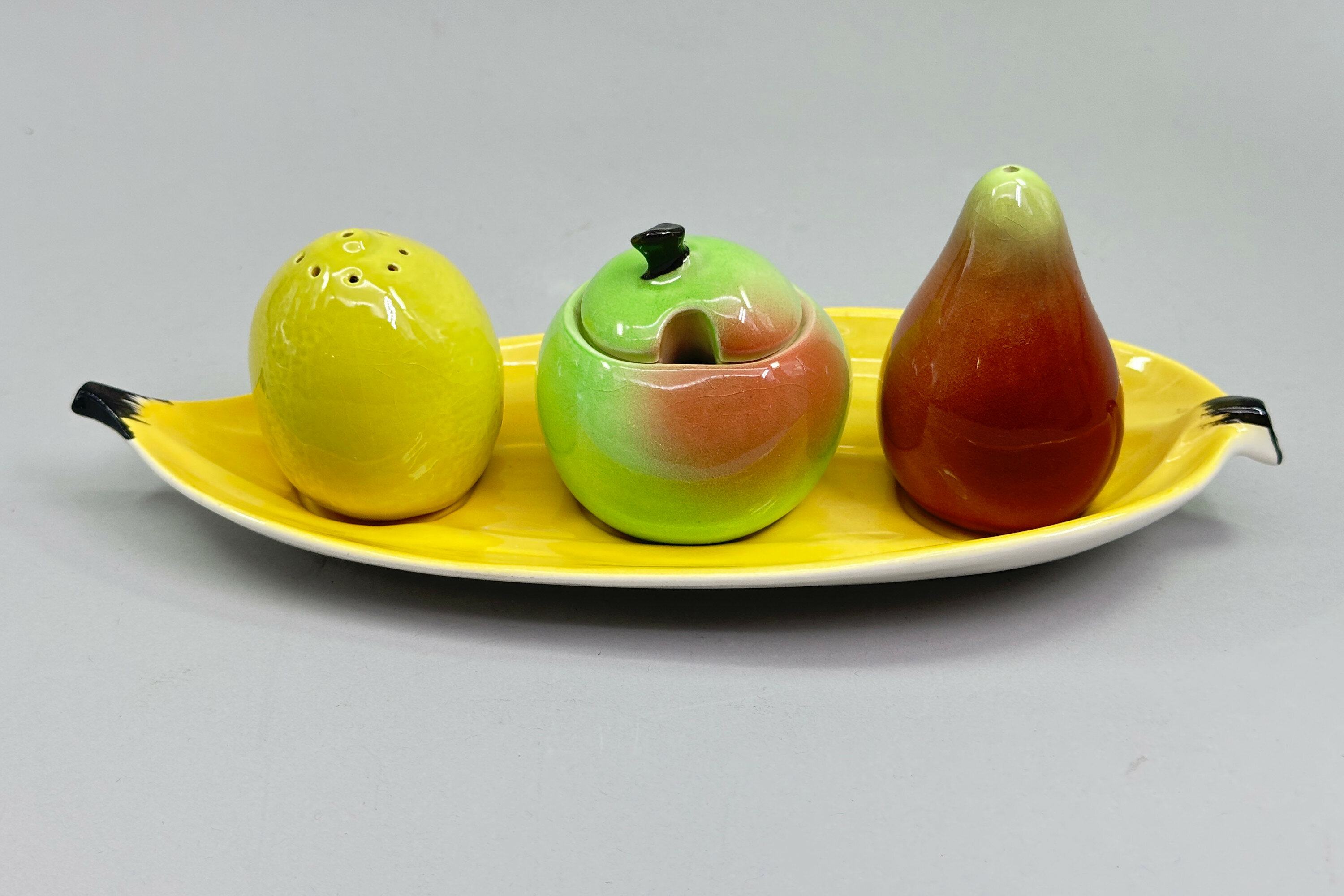
Carlton Ware fruit Cruet Set, Australian Design, 1950s
Price: £35Carlton Ware was the trade mark used by the pottery manufacturer Wiltshaw and Robinson, whose premises were located in Stoke on Trent, four years after the firm’s establishment in 1890. The well known script mark was introduced in 1928. The firm mostly concentrated on decorative giftware and new methods of production introduced in the 1920s put it at the forefront of the earliest Art Deco pottery pieces produced, firstly with designs originating from Tutankhamun’s tomb and then with pieces with an Oriental chinoiserie influence. Tablewares were also produced and this cruet set is an example of the imaginative designs made after the second world war and most likely dates to the 1950s. The appeal is obvious and today this set, complete with the original stoppers for the salt and pepper, can fulfil both a practical and decorative function.
Some examples appear to have an original matching spoon for the mustard pot; if that is the case, then it is absent here, but the spoon often illustrated looks quite generic and may not necessarily have been an integral component.

Miniature Staffordshire flatback model of two spaniels and a barrel, second half C19th
Price: £55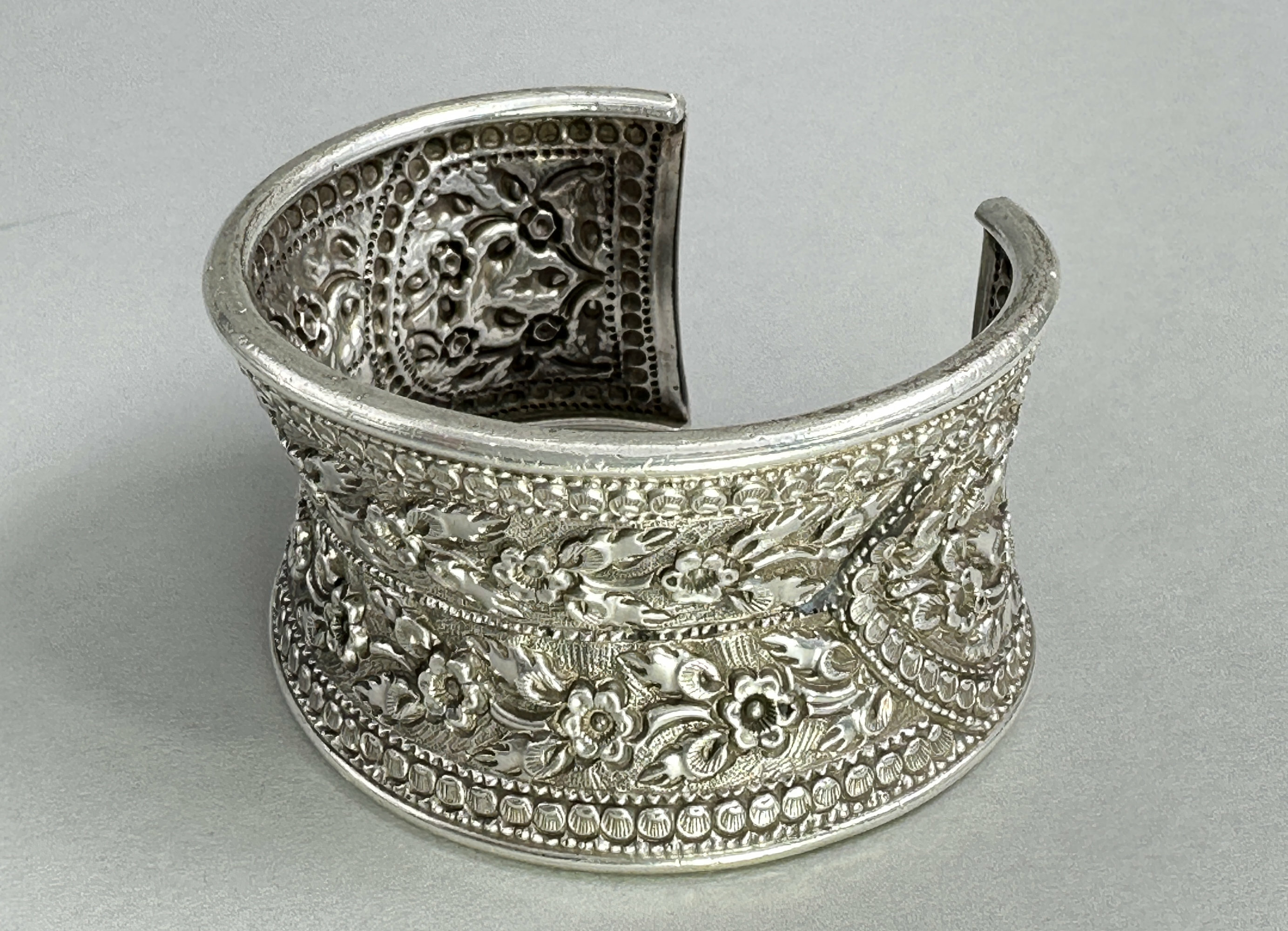
Indian silver repousse cuff bracelet, c1920
Price: £85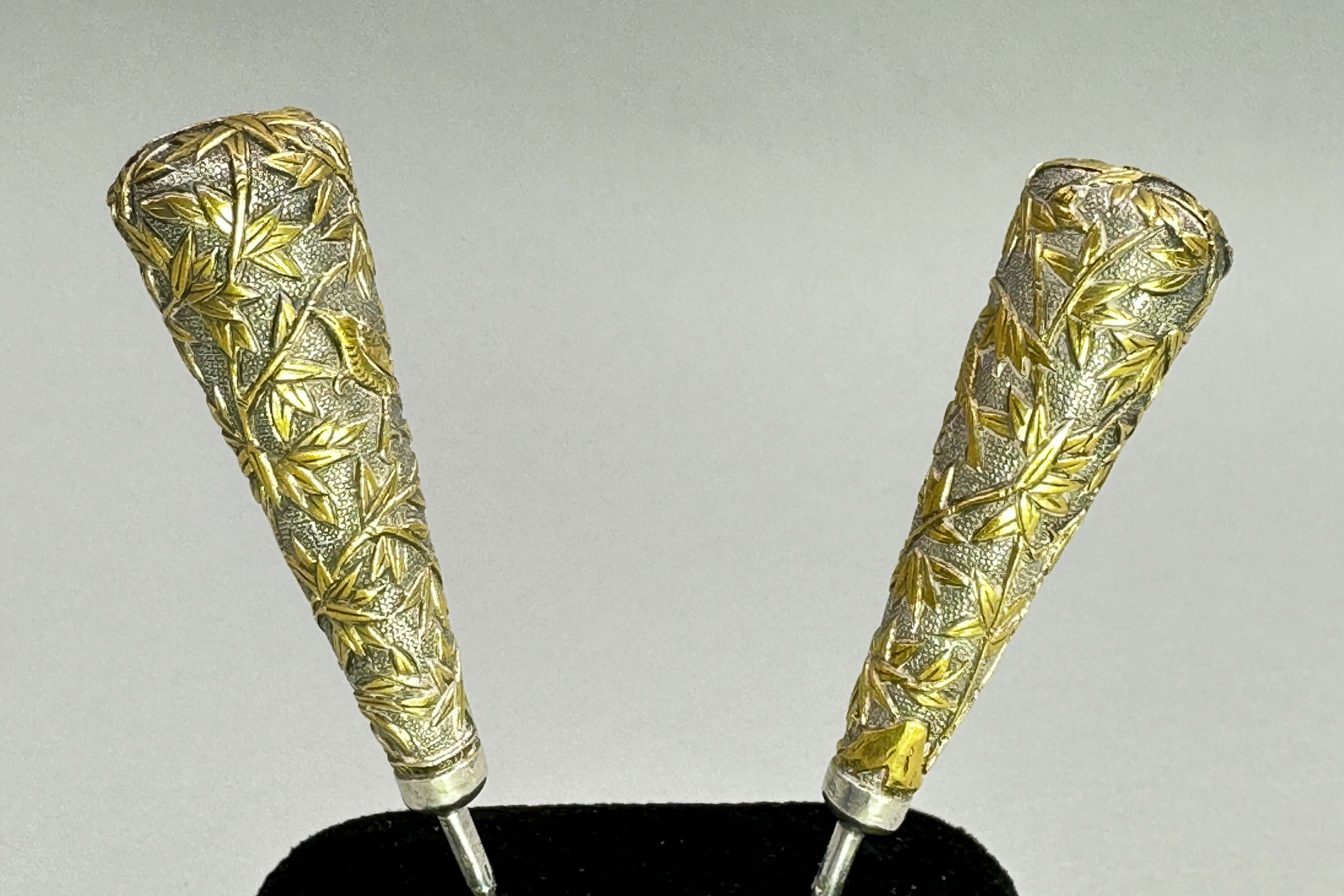
An Unusual Pair of Bradawl Form Sewing Tools, probably Persian C20th
Price: £45
Tigers Eye bracelet with a large central carved dragon bead, certificate for 2012
Price: £15PLEASE NOTE THAT THERE IS FREE UK SHIPPING ON THIS ITEM. For international buyers the shipping cost will be reduced by the UK shipping cost, so don't worry if you are outside the UK, you still receive this benefit!

Art Deco paste bracelet by Schreiber & Hiller c1930
Price: £75
Taxco silver bracelet, c1980
Price: £50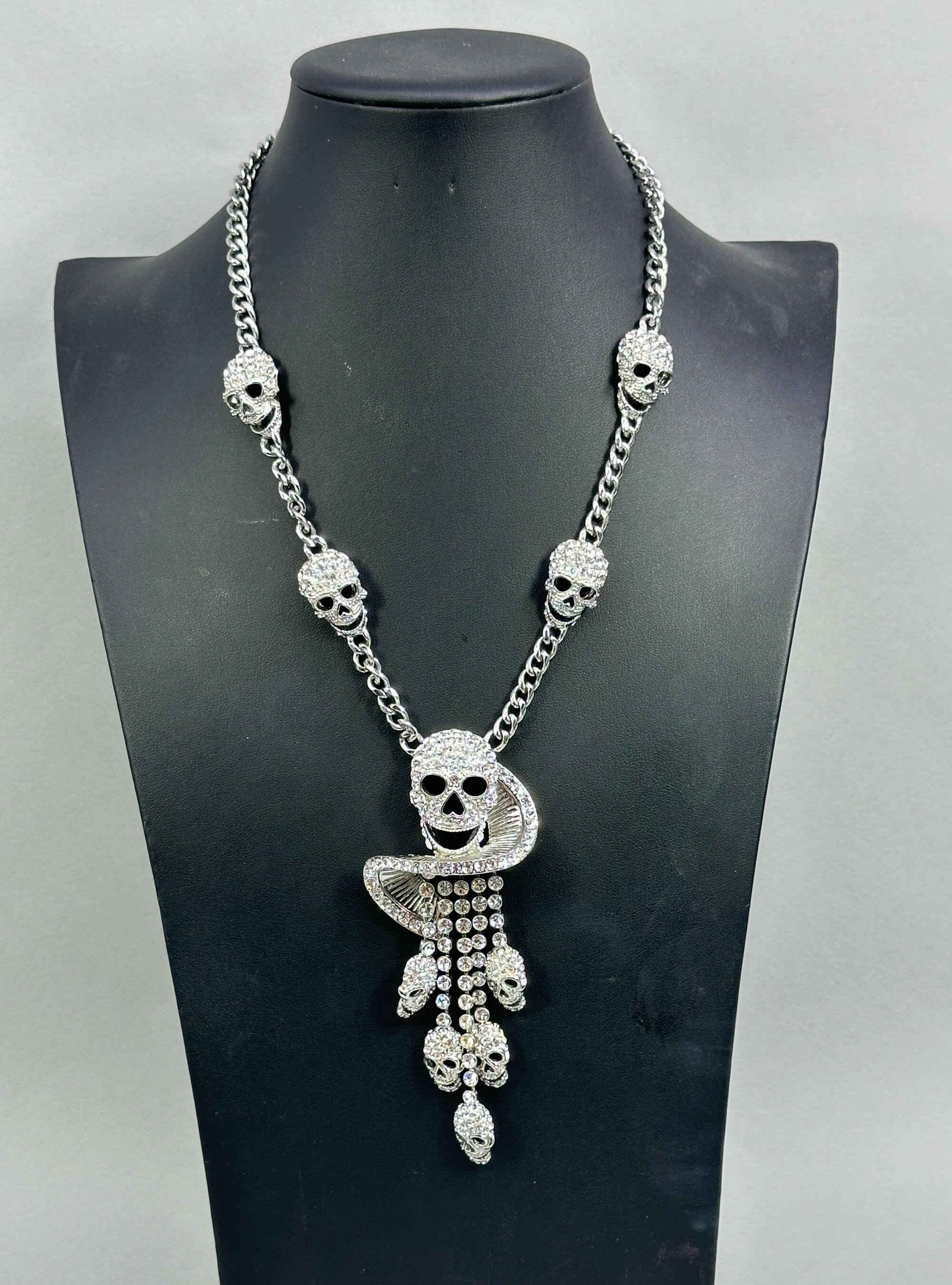
Butler and Wilson Skull Necklace, boxed, modern
Price: £125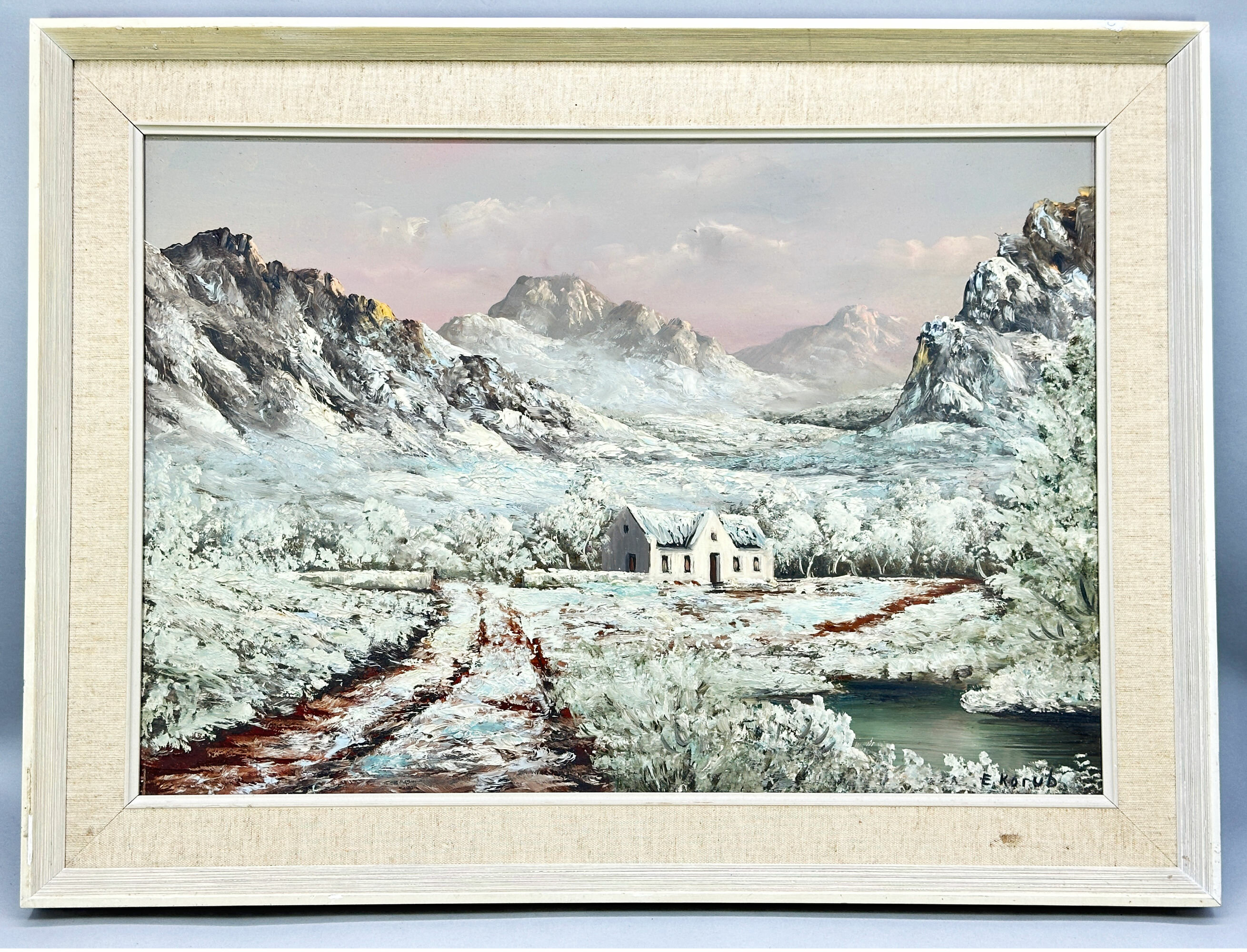
Framed Oil Painting on Board of a Winter Landscape Scene, C20th
Price: £55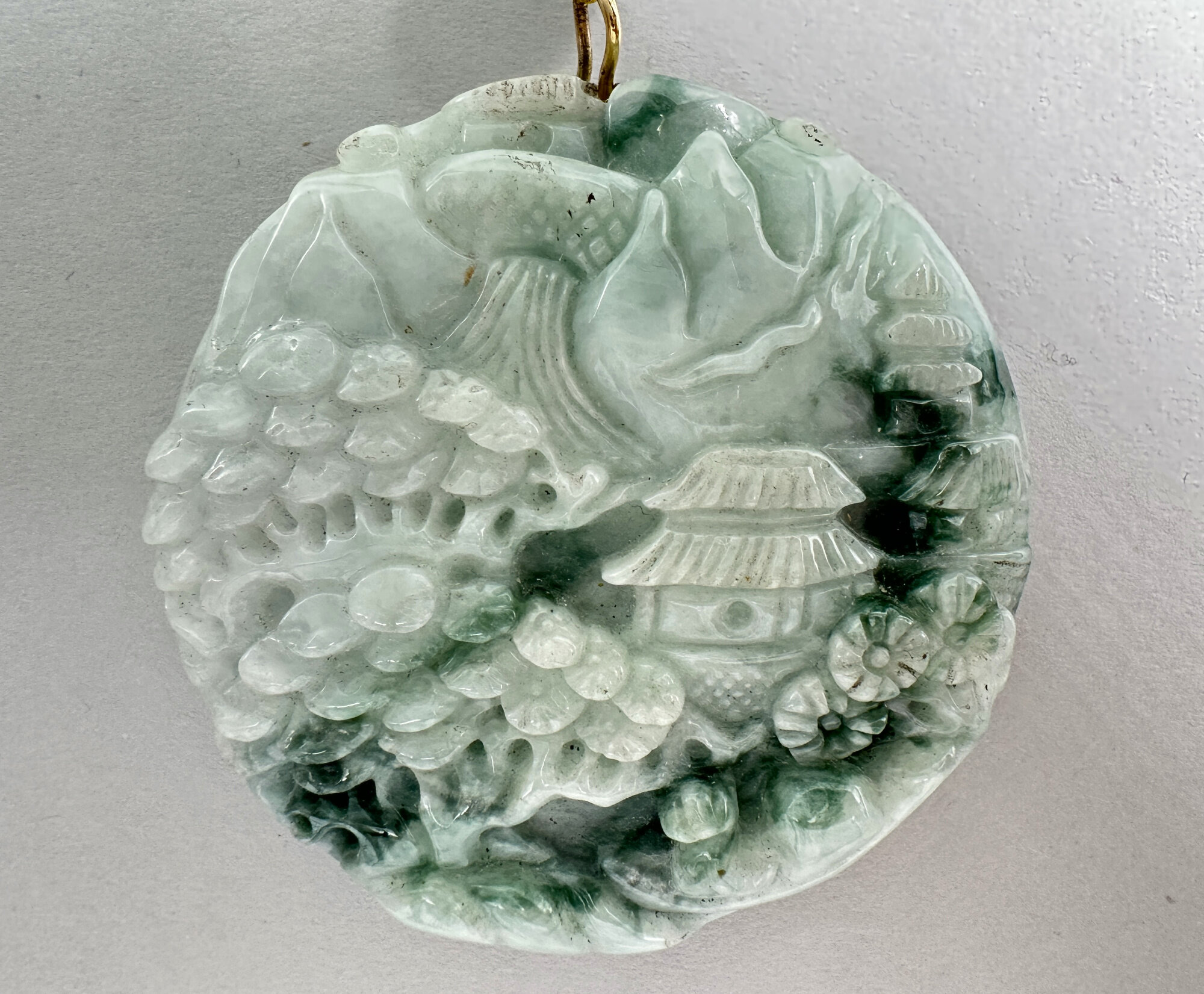
Floating Flower jade pendant on bead necklace
Price: £175
Stunning rope and tassel necklace, signed, c1990
Price: £45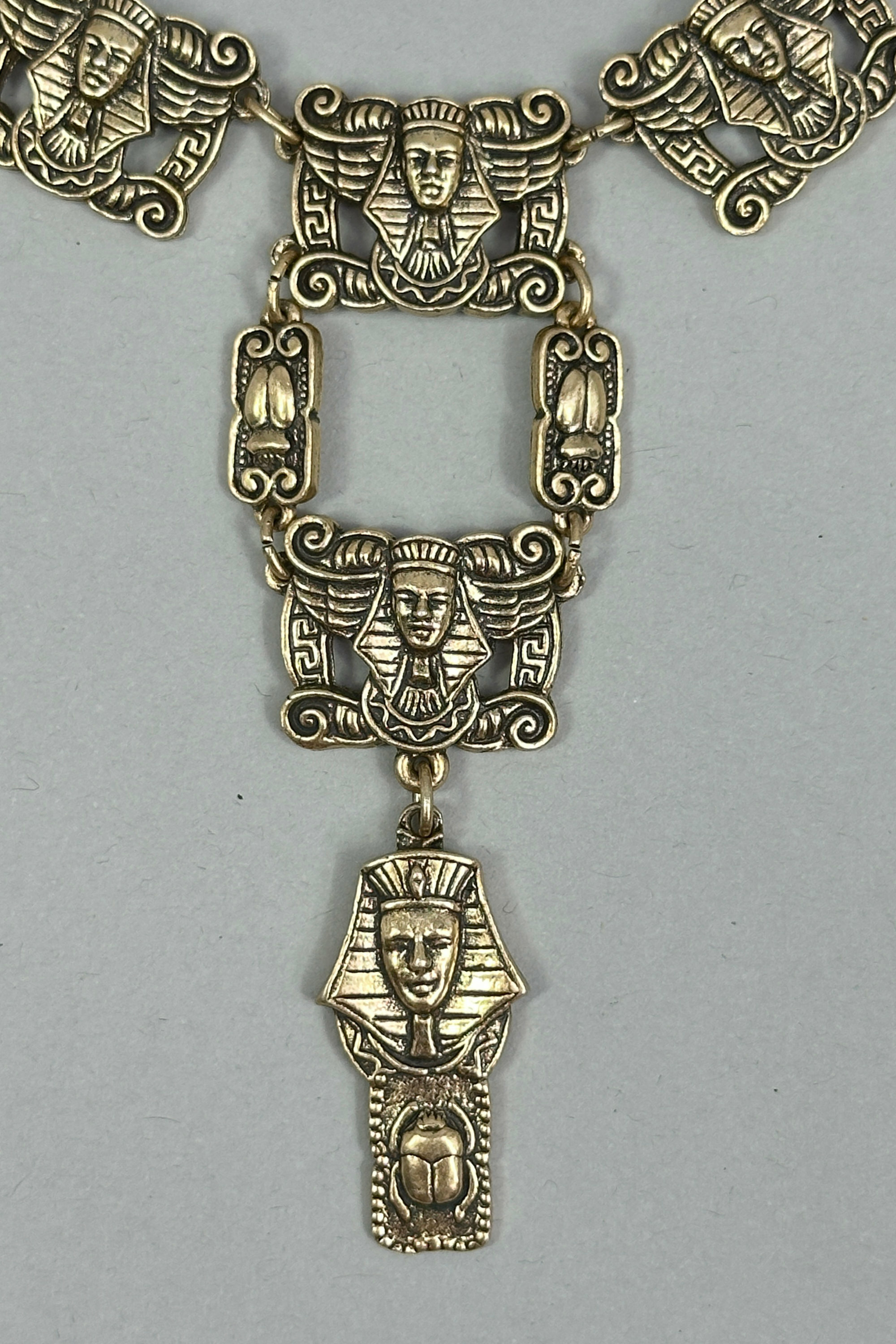
Egyptian Revival necklace depicting Tutankhamun c1980
Price: £45
Brown Alabaster Egg painted with a bird and flowers, fitted wood stand, Chinese C20th
Price: £25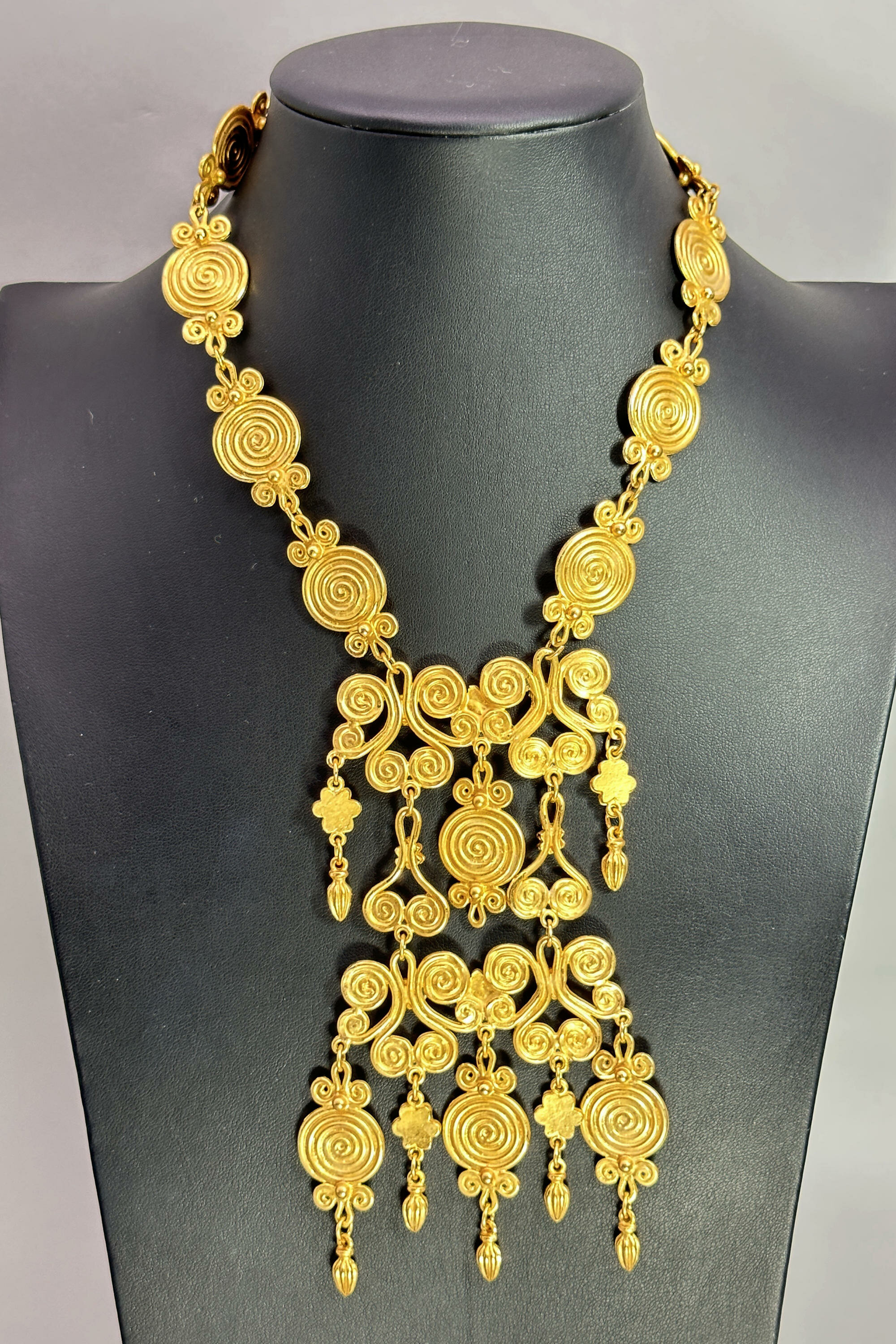
Statement necklace in the manner of Lalaounis c1990
Price: £75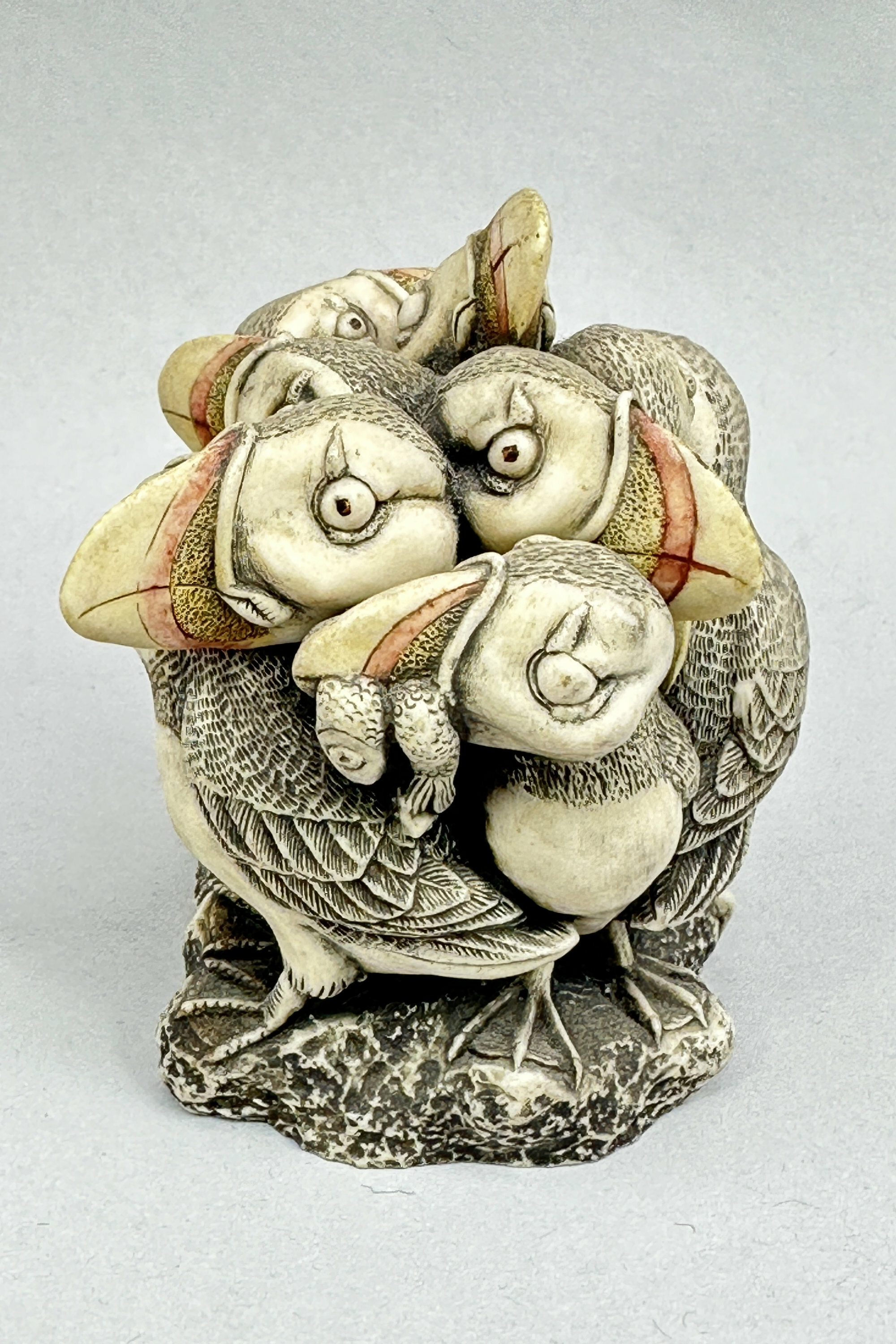
Harmony Kingdom Trinket Box with Puffins, dated 2001
Price: £20Harmony Kingdom is a business set up by Peter Calvesbert in 1992. Their studio is situated in the Malvern Hills and they have been producing whimsical figurine sculptures for over 25 years which have an enthusiastic following, particularly in the USA. ‘In Fine Feather’ is a discontinued item so now has a very modest rarity value in addition to its intrinsic charm.
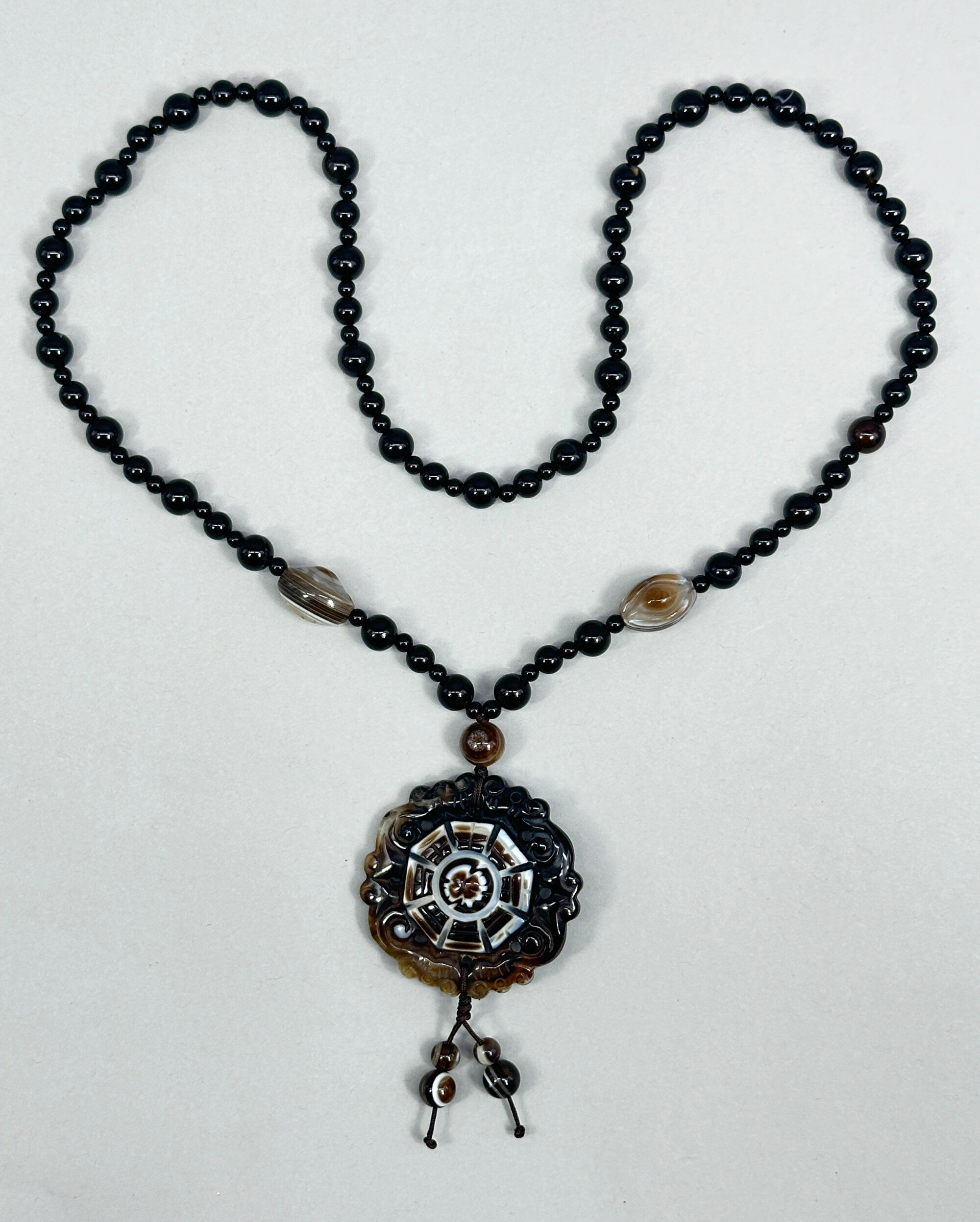
Chinese agate carving with onyx beads, 20th century
Price: £35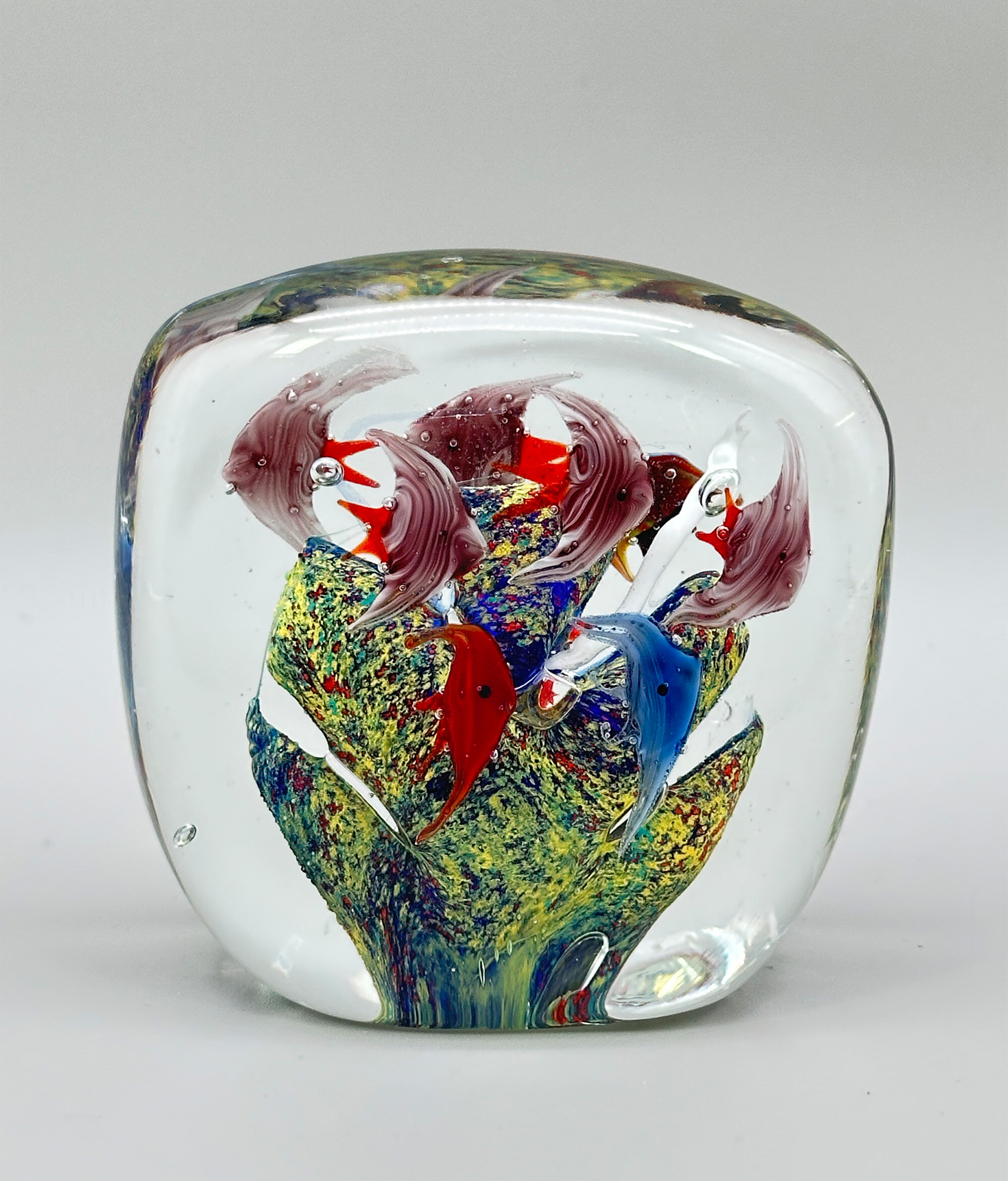
Glass Aquarium Paperweight, probably Murano second half C20th
Estimate: £30 – 40